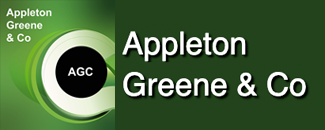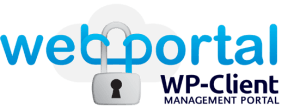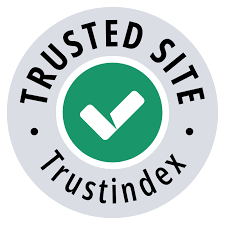Adaptive Leadership- Workshop 1 (Leadership Future)

The Appleton Greene Corporate Training Program (CTP) for Adaptive Leadership is provided by Dr. Wade Certified Learning Provider (CLP). Program Specifications: Monthly cost USD$2,500.00; Monthly Workshops 6 hours; Monthly Support 4 hours; Program Duration 12 months; Program orders subject to ongoing availability.
If you would like to view the Client Information Hub (CIH) for this program, please Click Here
Learning Provider Profile

Dr. Wade started his career serving 20 years in senior leadership positions with a focus on change management. He then excelled in the management consulting and leadership development industries for the past eight (8) years, first as an Executive Vice-President and then with his own leadership development company.
Dr. Wade been involved with leadership development, change management, and generational and cultural mega-trends and meta-narratives since the mid-90’s. He is a passionate leadership futurist and expert in adapting to generations, culture, and the future of leadership. As an expert at the forefront of the latest leadership development training, Dr. Wade’s subject matter and proven process will empower you and your organization to successfully develop the critical skills necessary to thrive in today’s leadership environment.
Dr. Wade has extensive experience training leaders in various sectors from healthcare to technology to finance and more. This course, and the subsequent subject matter, will guide course participants through many of the pitfalls and struggles in the modern leadership environment and enable them to master adaptive solutions. Each participant will feel inspired and will have gained practical understanding and actionable steps in relation to adaptive leadership.
MOST Analysis
Mission Statement
We live in an unprecedented time in history. The world in front of us is changing and it looks nothing like anything we’ve encountered before. Culture is morphing, the worldview of generations has shifted massively, and organizational structures are changing. Technology is reshaping the way people live, work, and even think. Even within the workforce, massive shifts are taking place. Research indicates that 55% of millennials are not engaged at work. 60% are currently looking for other employment opportunities while nearly the same percentage say that the “quality of manger/management” is extremely important to them when applying for a new job. In a VUCA (volatile, uncertain, complex, and ambiguous) world what are organizations and their leaders to do? In today’s marketplace it is imperative that leaders and organizations be able to understand the times and know what they should do. As an organization looks to adapt to the changing landscape, it will need to examine shaping factors and distinguishing trends to rightly forecast and accurately design the future they want for their leaders, teams, and organization. Without a future-thinking orientation and willingness to adapt, organizations will find themselves struggling to maintain the status quo even though they continue to employ tactics that used to work. This first course will examine the shaping factors and distinguishing trends of millennials and gen z cohorts. Understanding these factors is fundamental to rightly adapt to the future of work and of leadership. In this session participants will learn about the meta-narratives and generational worldviews that have shifted and why these are taking place. Participants will also come away with knowledge and understanding of transitions in culture and organizational structures and how they impact the future.
Objectives
01. Understanding VUCA : departmental SWOT analysis; strategy research & development. Time Allocated: 1 Month
02. World Ahead : departmental SWOT analysis; strategy research & development. Time Allocated: 1 Month
03. Irrelevant Training : departmental SWOT analysis; strategy research & development. Time Allocated: 1 Month
04. Understanding Culture: departmental SWOT analysis; strategy research & development. Time Allocated: 1 Month
05. Organizational Shift: departmental SWOT analysis; strategy research & development. Time Allocated: 1 Month
06. Worldview Shift: departmental SWOT analysis; strategy research & development. Time Allocated: 1 Month
07. Generational Cohorts: departmental SWOT analysis; strategy research & development. 1 Month
08. Shaping Factors: departmental SWOT analysis; strategy research & development. Time Allocated: 1 Month
09. Distinguishing Trends: departmental SWOT analysis; strategy research & development. Time Allocated: 1 Month
10. Value Shift: departmental SWOT analysis; strategy research & development. Time Allocated: 1 Month
11. Employment Trends: departmental SWOT analysis; strategy research & development. Time Allocated: 1 Month
12. Leadership Future : departmental SWOT analysis; strategy research & development. Time Allocated: 1 Month
Strategies
01. Understanding VUCA : Each individual department head to undertake departmental SWOT analysis; strategy research & development.
02. World Ahead : Each individual department head to undertake departmental SWOT analysis; strategy research & development.
03. Irrelevant Training : Each individual department head to undertake departmental SWOT analysis; strategy research & development.
04. Understanding Culture: Each individual department head to undertake departmental SWOT analysis; strategy research & development.
05. Organizational Shift: Each individual department head to undertake departmental SWOT analysis; strategy research & development.
06. Worldview Shift: Each individual department head to undertake departmental SWOT analysis; strategy research & development.
07. Generational Cohorts: Each individual department head to undertake departmental SWOT analysis; strategy research & development.
08. Shaping Factors: Each individual department head to undertake departmental SWOT analysis; strategy research & development.
09. Distinguishing Trends: Each individual department head to undertake departmental SWOT analysis; strategy research & development.
10. Value Shift: Each individual department head to undertake departmental SWOT analysis; strategy research & development.
11. Employment Trends: Each individual department head to undertake departmental SWOT analysis; strategy research & development.
12. Leadership Future : Each individual department head to undertake departmental SWOT analysis; strategy research & development.
Tasks
01. Create a task on your calendar, to be completed within the next month, to analyze Understanding VUCA .
02. Create a task on your calendar, to be completed within the next month, to analyze World Ahead .
03. Create a task on your calendar, to be completed within the next month, to analyze Irrelevant Training .
04. Create a task on your calendar, to be completed within the next month, to analyze Understanding Culture.
05. Create a task on your calendar, to be completed within the next month, to analyze Organizational Shift.
06. Create a task on your calendar, to be completed within the next month, to analyze Worldview Shift.
07. Create a task on your calendar, to be completed within the next month, to analyze Generational Cohorts.
08. Create a task on your calendar, to be completed within the next month, to analyze Shaping Factors.
09. Create a task on your calendar, to be completed within the next month, to analyze Distinguishing Trends.
10. Create a task on your calendar, to be completed within the next month, to analyze Value Shift.
11. Create a task on your calendar, to be completed within the next month, to analyze Employment Trends.
12. Create a task on your calendar, to be completed within the next month, to analyze Leadership Future .
Introduction
The landscape of leadership is undergoing rapid transformation. As organizations grapple with uncertainty, complexity, and constant disruption, the need for adaptive leadership has never been greater. The traditional models of leadership—built on hierarchy, predictability, and rigid structures—are increasingly becoming obsolete in a world characterized by VUCA (Volatility, Uncertainty, Complexity, and Ambiguity).
Adaptive leadership is about the capacity to lead people through change that requires them to adjust their values, habits, or behaviors. It recognizes that many of the toughest problems leaders face are not technical in nature but deeply human. These challenges cannot be solved by simply applying existing knowledge or delegating tasks. Instead, they demand understanding, experimentation, new learning, and often a reframing of deeply held beliefs.
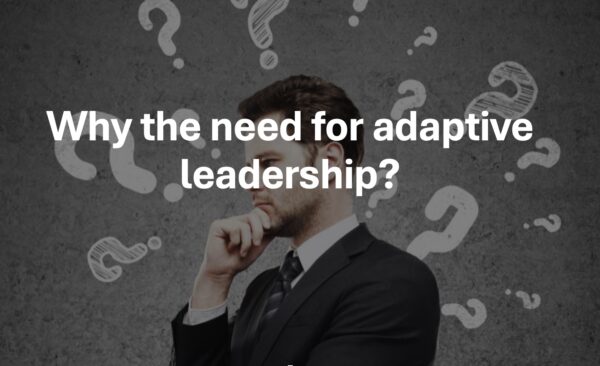
The beginning workshop, “Leadership Future,” is crafted to answer the question, “Why is adaptive leadership necessary?” Before learning, developing, and implementing all the other steps, we must first begin with “why.” Why the need for adaptive leadership? This first workshop is designed to equip participants with the tools, insights, and mindsets necessary to navigate the evolving leadership landscape. Over the course of 12 modules, we will explore critical shifts in organizational structures, cultural dynamics, and employment trends that will define leadership in the years to come. By engaging with this content, participants will gain a future-focused perspective on leadership, preparing them to lead with understanding, empathy, and resilience.

This workshop is designed to be both informative and inspirational. It combines rigorous academic insights with practical, real-world applications, offering you the tools to anticipate challenges and respond with agility. You will engage in interactive sessions that encourage reflection, foresight, and collaborative problem-solving—key ingredients for transforming your leadership style.
Leadership Future is more than just a workshop; it’s a call to redefine what it means to lead.
Each module in this workshop is intentionally designed to provide a deep understanding of the forces shaping leadership today and those that are framing the future. Participants will explore emerging challenges, redefine leadership paradigms, and develop a foundation of understanding and empathy, which is essential for leading in an ever-changing world.
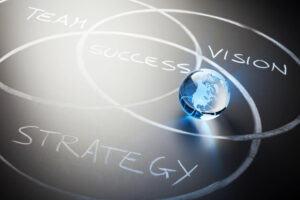
Module 1: Understanding VUCA
In today’s fast-paced and unpredictable world, leaders face an environment defined by Volatility, Uncertainty, Complexity, and Ambiguity (VUCA). Traditional leadership approaches—built on stability and predictability—are no longer sufficient in navigating rapid change, technological disruption, and shifting global dynamics. Adaptive leadership is essential for those who want to thrive in this new reality.
This module introduces the VUCA framework, helping leaders understand its implications and develop strategies to lead effectively in uncertain conditions. Participants will define VUCA, investigate why understanding VUCA is vital for business leaders, and explore the 11 essential elements for thriving in a VUCA environment. The learning outcomes will enable participants to gain insights into how to anticipate challenges, make agile decisions, and foster resilience in their organizations.
Through this module, leaders will learn why VUCA matters for business leadership, how it shapes decision-making, and what it takes to lead with clarity and confidence amid disruption. By understanding VUCA and the corresponding adaptive leadership principles, participants will gain the tools to turn volatility into vision, uncertainty into understanding, complexity into clarity, and ambiguity into action.
Leaders who embrace the realities of VUCA will not only future-proof their organizations but also cultivate a mindset of innovation, agility, and strategic foresight—key traits necessary for sustained success in an unpredictable world.
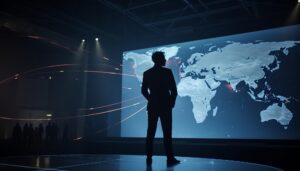
Module 2: World Ahead
The world ahead of us is vastly different from the one behind us. As Marshall Goldsmith wisely said, “What got us here won’t get us there.” Leadership models that once worked in stable, predictable environments are now inadequate in a world defined by rapid technological advancements, shifting workforce expectations, and global uncertainty. To thrive in the future, leaders must adapt their mindsets, strategies, and skills to meet new challenges head-on.
This module begins looking to the future with strategic foresight as the participants explore the top 10 differences in organizational leadership today compared to the 1990s, demonstrating how the landscape has evolved. Leaders will also examine a critical lesson from the Lewis and Clark Expedition, understanding how historical explorers navigated uncertainty and applied adaptive thinking to forge new paths.
In preparation for the world ahead, participants will uncover the nine key leadership shifts needed to remain relevant and effective. Additionally, they will gain insight into the seven reasons why people resist change. Although participants will explore the psychology of change and transition management in a future workshop, it is vital to understand why 90% of people resist change… even if it is beneficial and necessary.
By engaging with this module, leaders will develop a proactive approach to global trends, ensuring they are shaping the future of their organizations rather than reacting to it. Equipped with future-ready mindsets and strategies, they will be prepared to lead innovation, embrace transformation, and drive long-term success in an ever-evolving world.

Module 3: Irrelevant Training
The world ahead of us demands a new kind of leader—one who is adaptable, forward-thinking, and equipped with future-ready skills. Yet, most leaders were trained for a world that is disappearing. Business schools and leadership development programs of the past were designed for stability, hierarchy, and predictability—conditions that no longer define today’s VUCA world.
If the future of leadership looks dramatically different from the past, then leadership training must evolve to prepare leaders for the challenges ahead. This module challenges outdated leadership development models and introduces new approaches to leadership growth that align with the demands of modern organizations.
Participants will examine old leadership skills vs. new leadership skills, learning how to shift from rigid management approaches to adaptive, agile, and innovation-driven leadership strategies. More than just a theoretical shift, these new leadership competencies will provide the benefits of new world skills that serve as practical solutions to the real-world challenges leaders face today.
By engaging with this module, leaders will develop a mindset of continuous learning, ensuring they remain competitive, relevant, and prepared for the ever-evolving leadership landscape. The organizations that thrive in the future will be led by those who embrace transformation, challenge conventional thinking, and equip themselves with the leadership skills of tomorrow—starting today.
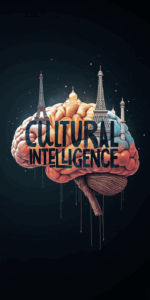
Module 4: Understanding Culture
Culture is the invisible force that shapes how people communicate, what and how they purchase items, and how they view the world around them. For adaptive leaders, understanding culture in the broadest sense is essential—not only to foster high-performance teams but also to navigate cultural shifts that impact businesses, industries, and society.
This module explores why culture is a critical factor in leadership effectiveness, presenting six key reasons why leaders must actively investigate cultural changes, trends, and megatrends. Leaders will also examine how cultural shifts impact business strategies, emphasizing the importance of staying attuned to evolving social, technological, and demographic trends, and explore the 7 shifts in culture that are impacting organizations today.
A key focus of this module is cultural intelligence (CQ)—the ability to anticipate changes in public values, align leadership decisions with social expectations, and communicate effectively with diverse teams and stakeholders. As adaptive leaders confront multifaceted challenges, their ability to understand and engage with cultural differences becomes key to building trust, fostering collaboration, and driving innovation. Rather than imposing a one-size-fits-all solution, culturally intelligent leaders create environments where diverse viewpoints are harnessed to generate creative, resilient responses to change. Leaders will also gain insights into the eight fundamental elements of culture, learning how these components influence employee engagement, innovation, and organizational resilience.
To become future-ready leaders, participants will explore the five core benefits of cultural intelligence and how mastering cultural adaptability can enhance every area of a leader’s influence.
By understanding culture and responding accordingly, leaders can create future-ready organizations and workplaces. Adaptive leaders that understand and seek to grow in their cultural intelligence will be vanguards of change and will drive organizational success in an ever-evolving cultural landscape.

Module 5: Organizational Shift
The way organizations are structured is undergoing a fundamental transformation. Traditional hierarchical models, built for stability and control, are giving way to more agile, networked, and adaptive structures that enable companies to respond quickly to change. Organizations that have existed for years are working hard to evolve, or they potentially risk becoming outdated in an era where speed, innovation, and collaboration drive success.
This module will explore the factors driving these shifts by analyzing real-world trends and examining a hypothetical case study on Ford Motor Co. Through this, participants will gain a practical understanding of how companies are restructuring to remain competitive in today’s dynamic marketplace.
Participants will also explore four defining characteristics of modern organizational structures, such as decentralized decision-making, cross-functional collaboration, and employee empowerment. In addition, they will uncover the five major implications these shifts have on 21st-century businesses, from workforce expectations to strategic decision-making.
By engaging with this module, leaders will develop a deep awareness of the forces reshaping organizations and how they can position themselves to thrive in new, flexible environments. Those who embrace organizational shifts will foster greater adaptability, collaboration, and long-term resilience, ensuring their teams and companies are future-ready in an unpredictable world.

Module 6: Worldview Shift
Leadership does not exist in a vacuum—it is shaped by the worldviews of those who lead and those who follow. In today’s rapidly evolving landscape, leaders must understand that we are experiencing a fundamental paradigm shift that affects how people think, work, view reality, and engage with leadership. This shift is largely influenced by generational differences and evolving societal norms.
This module introduces the concept of worldview and explores how leadership is being reshaped by postmodernism and other emerging perspectives. Participants will examine the distinctions between the modern era and postmodernism, gaining insight into how these cultural frameworks shape decision-making, workplace dynamics, and organizational values.
A key focus will be postmodernism’s impact on leadership, where participants will explore five defining characteristics of postmodernism and several leadership strategies to adapt to the new paradigm. Leaders must recognize that today’s workforce no longer responds to the rigid, hierarchical models of the past—they seek purpose, authenticity, and collaborative environments.
By engaging with this module, leaders will develop the ability to navigate and bridge generational paradigm gaps, creating environments where employees of differing worldviews feel heard and valued. Those who master cultural adaptability will foster stronger teams, increase engagement, and lead with empathy and strategic foresight in an era of unprecedented change. Adaptive leaders who understand shifting worldviews will not only remain relevant but will also be the ones shaping the future of leadership itself.

Case Study: IBM’s Reinvention
The organization International Business Machines, known as IBM, was originally called the Computing-Tabulating-Recording Company and was founded in 1911. IBM, once known primarily for mainframes and hardware, has transformed itself repeatedly over its century-long history. Its most recent and significant shift has been toward becoming a cognitive, AI-driven enterprise. Facing disruption from smaller, more agile tech firms and shifting market needs, IBM’s leadership recognized that the old playbook was no longer viable.
In response to the VUCA environment, IBM launched a major reinvention strategy. Its leadership invested heavily in AI, quantum computing, and cloud technology while simultaneously restructuring internal systems to increase speed, agility, and innovation. This transformation required an adaptive leadership approach from the top down.
One of IBM’s flagship responses was Your Learning, an AI-powered platform that offers employees personalized learning pathways. This tool not only replaced outdated training models but also set a new standard for how leadership development should function in a world of continuous change. Leaders and employees alike were empowered to upskill based on emerging industry needs, personal interests, and future growth areas.
IBM also recognized that managing a multigenerational workforce required intentional strategy. They redesigned team structures to be more project-based and collaborative, reflecting preferences of younger generations for autonomy, purpose, and innovation. Their internal leadership programs began emphasizing empathy, digital fluency, adaptability, and cross-cultural competence.
The company further addressed shifting values by adopting environmental and social goals, including a commitment to net-zero carbon emissions and responsible AI. In doing so, IBM connected purpose to performance and ensured that their leadership messaging aligned with employee and consumer expectations.
The result: IBM successfully repositioned itself not only as a technology leader but also as a forward-looking, human-centered organization. Its story is a powerful example of adaptive leadership in action—leveraging data, anticipating disruption, embracing generational change, and preparing leaders to lead boldly into the future.
Module 7: Generational Cohorts
In today’s multigenerational workplace, understanding generational differences is not just beneficial—it’s essential. As organizations strive for innovation and collaboration, leaders must recognize that employees from different generations bring unique perspectives, values, and work styles. Effective leadership requires bridging generational gaps, fostering mutual understanding, and leveraging each cohort’s strengths to create a dynamic, high-performing work environment.
This module explores the four primary generational cohorts—Baby Boomers, Generation X, Millennials, and Generation Z—and their distinct characteristics. Participants will gain insights into how generational differences manifest in communication styles, work preferences, leadership expectations, attitudes toward technology, and others. Special attention will be given to Millennials, the largest segment of today’s workforce, and their four defining workplace distinctives that influence leadership strategies and organizational culture.
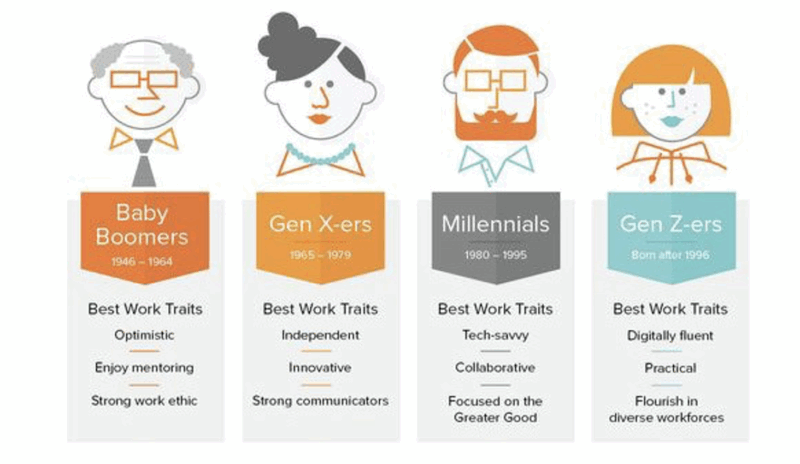
Beyond understanding differences, this module emphasizes intergenerational collaboration. Participants will discover practical strategies for navigating intergenerational relationships, reducing workplace tensions, and fostering a culture of respect. Leaders will also learn how to promote knowledge-sharing and mentorship across generations, ensuring that organizations benefit from the wisdom of experience while embracing fresh, innovative perspectives.
By the end of this module, leaders will be equipped with the tools to enhance team collaboration, improve employee engagement, and maximize workforce potential. Those who master generational leadership will not only create a thriving work culture but will also position their organizations for long-term success.

Module 8: Shaping Factors
Each generation is uniquely shaped by the cultural, economic, social, political, and global forces present during their formative years. These shaping factors influence how people think, work, communicate, and lead, making them essential for leaders who seek to build adaptive, high-performing, and multigenerational teams.
This module examines the key shaping factors of Baby Boomers, Generation X, Millennials, and Generation Z, exploring how historical and societal trends have influenced their worldviews, workplace behaviors, and leadership expectations. By understanding these forces, leaders gain insight into the values, motivations, and decision-making styles that define each generation.
Participants will also analyze major generational differences between Baby Boomers, Millennials, and Gen Z in technological advancements, economic environments, work-life balance, communication styles, entrepreneurial mindset, social consciousness, and mental health awareness. These insights will help leaders anticipate potential collaboration challenges, resolve conflicts, and harness generational strengths to create a workplace that is intergenerational and future-ready.
By engaging with this module, leaders will learn generational factors that can inspire understanding and empathy, which will then create synergy across age groups, fostering a culture of adaptability, shared learning, and high performance. Leaders who understand the shaping factors of each generation are better equipped to lead with empathy, drive engagement, and navigate the evolving dynamics of today’s workforce with confidence and clarity.

Module 9: Distinguishing Trends
Understanding trends is essential for leaders who want to stay ahead of evolving business demands, workforce expectations, and economic forces. Trends emerge from analyzing data over time, revealing patterns in behavior, consumer preferences, and workplace dynamics. Organizations that can identify and adapt to these shifts will gain a competitive edge, create stronger multigenerational teams, and uncover new business opportunities.
This module provides insight into major trends and statistics that signal shifts in worldview and behavior. Participants will explore how generational trends influence leadership, workplace culture, and market dynamics. Key areas of focus include:
• Baby Boomers – Work ethic and career focus, consumerism, media influence, retirement trends, and health priorities.
• Generation X – Skepticism toward institutions, emphasis on work-life balance, adaptation to technology, and entrepreneurial tendencies.
• Millennials – Digital proficiency, preference for collaboration, purpose-driven work, and valuing experiences over material possessions.
• Generation Z – True digital natives, prioritization of diversity, entrepreneurial mindset, and mental health awareness.
By recognizing these distinguishing trends, leaders will be better prepared to engage and support Millennials and Gen Z, the two largest and most influential workforce demographics shaping the future of business. It will also help bring understanding between all the generational cohorts to allow for compassion, empathy, and collaboration. By recognizing each generations values, aspirations, and behaviors, leaders can create a more adaptive, innovative, and resilient business future.

Module 10: Value Shift
As societies evolve, so do the values that shape individuals, organizations, and the marketplace. Understanding generational and societal value shifts is essential for leaders who want to build adaptive, future-ready organizations. Today’s workforce and consumers prioritize different values than previous generations, and businesses that fail to recognize these shifts risk becoming disconnected from their employees and customers.
This module explores the forces driving major value shifts, including technological advancements, economic realities, social change, and the growing focus on mental health and well-being. Participants will examine how these forces influence personal identity, workplace expectations, and consumer behavior, shaping the future of work and the role of leadership.
A key focus will be 12 distinct value shifts among Millennials and Generation Z, two generations redefining success, work-life balance, ethical consumerism, and leadership expectations. From purpose-driven work and mental health awareness to work ethic and technological innovation, leaders will gain a deep understanding of the emerging values shaping employees in today’s business world.
By engaging with this module, leaders will develop the insights needed to align their organizations with the evolving priorities of employees and customers. Understanding value shifts will enable them to create workplaces that attract and retain top talent, build meaningful brand connections, and lead with authenticity.

Module 11: Employment Trends
The future of work is evolving at an unprecedented pace, driven by technological advancements, shifting workforce expectations, and global economic forces. For leaders, understanding employment trends is not optional—it is essential for building resilient, future-ready organizations. Organizations that fail to adapt to new workforce realities risk falling behind in a rapidly changing employment landscape.
This module provides insight into the top 20 workplace statistics and trends, offering leaders data-driven understanding of workforce shifts and their real-world implications. From the rise of remote and hybrid work models to the increasing demand for purpose-driven employment, skills-based hiring, and automation, leaders will gain clarity on how these trends are reshaping leadership and organizational strategy.
By examining these employment trends, participants will also explore how businesses can attract, retain, and engage talent in an era where employees seek flexibility, inclusion, career development, and work-life integration. Understanding these shifts enables leaders to make informed decisions, anticipate workforce needs, and create adaptive policies that position their organizations for long-term success.
Leaders who are knowledgeable about employment trends can proactively shape workplace cultures that embrace innovation, prioritize employee well-being, and foster sustainable growth. This module equips participants with the tools and strategies necessary to navigate workforce disruptions with confidence, ensuring that their organizations remain competitive, agile, and forward-thinking in the ever-changing world of work.

Module 12: Leadership Future
As we conclude this first workshop, Leadership Future, one thing is clear—the future of leadership is dynamic, human-centric, and constantly evolving. Today’s world is characterized by volatility, uncertainty, complexity, and ambiguity (VUCA), requiring leaders to develop adaptive approaches. Organizations must navigate generational cohorts, shifting values and worldviews, and changing workplace expectations to appeal to talent and customers.
This final module synthesizes the key insights from previous sessions and explores how leaders can embrace the future with confidence and clarity. Participants will examine four core principles of future-focused leadership:
1. Lifelong Learning.
2. Human-Centric Leadership.
3. Vision and Purpose Alignment.
4. Collaborative and Trust-Based Structures.
In addition, participants will develop actionable strategies for leading in a rapidly changing world, ensuring that they remain adaptive, innovative, and ahead of emerging trends. The module also provides guidance for continuous leadership growth, helping leaders sustain long-term success.
The future of leadership belongs to those who commit to lifelong evolution, blending strategy with heart, innovation with wisdom, and ambition with purpose. Leaders who embrace these principles will not only drive innovation and transformation but also inspire trust, create lasting impact, and build organizations that thrive in an unpredictable world.
Conclusion
The future of leadership demands adaptability, empathy, and continuous learning. This workshop, “Leadership Future,” provides the answer as to why the world of leadership is changing so rapidly. It also brings the understanding and insights needed for a successful leadership future that will enable individuals to thrive in an unpredictable world. By engaging with these 12 modules, participants will not only understand the future of leadership but will also be equipped to lead it. By the end of this workshop, attendees will not only grasp the defining characteristics of future-ready leadership but will also be fully equipped to put these principles into practice. Ultimately, this workshop is more than an opportunity to understand the future of leadership—it is a transformative experience that prepares you to shape and lead it.

Case Study: Microsoft’s Cultural and Organizational Transformation
In 2014, Microsoft stood at a critical crossroads. Once a global technology leader, it had become perceived as bureaucratic and slow-moving in the face of agile competitors like Google, Apple, and Amazon. Internally, the company’s culture had grown rigid and siloed, marked by infighting and a win-at-all-costs mentality. Externally, the shift toward mobile computing, cloud platforms, and collaborative technologies revealed Microsoft’s strategic vulnerabilities.
In 2014 Satya Nadella was appointed CEO. Nadella faced a VUCA environment defined by volatility in the tech industry, uncertainty about Microsoft’s relevance, complexity due to sprawling product lines, and ambiguity about future direction. He responded not just with a strategy but with a complete reimagining of leadership at Microsoft.
Nadella’s first step was cultural. He adopted the concept of a “growth mindset” from psychologist Carol Dweck, embedding it as a core leadership principle. Rather than simply training managers on processes, Microsoft began developing leaders who valued curiosity, humility, learning, and collaboration. This marked a foundational shift from the company’s previous combative, individualistic culture. Nadella emphasized empathy—an unusual but powerful theme in corporate leadership. Leaders were trained not just in tech competencies, but also in emotional intelligence, inclusive leadership, and adaptability.
The next transformation came in organizational structure. Nadella broke down the silos that had long hindered innovation and created flatter, cross-functional teams focused on collaboration. Decision-making became more decentralized. Microsoft moved decisively into the cloud, launching Azure as a competitive alternative to AWS. In doing so, it shifted from a reliance on legacy software like Windows to a focus on platform-based services, recurring revenue, and customer engagement.
Nadella also modernized leadership development. Rather than relying on traditional, prescriptive training models, Microsoft created personalized, continuous learning paths for its managers and senior leaders. Emphasis was placed on leading through change, managing ambiguity, and creating inclusive cultures—all core principles of adaptive leadership.
Importantly, Nadella recognized generational shifts in the workforce. Millennials and Gen Z employees were looking for more than just a paycheck—they wanted purpose, flexibility, and social impact. Microsoft embraced these values, investing in sustainability, social justice initiatives, and hybrid work models. Their leadership adapted accordingly, ensuring cultural and generational alignment.
Microsoft’s resurgence—reflected in its $2 trillion market cap, employee engagement scores, and brand reputation—is a testament to the power of adaptive leadership. By embracing VUCA, reshaping culture, flattening structures, aligning with emerging generational values, and investing in future-ready leadership training, Microsoft provides a model of how legacy corporations can reinvent themselves for a rapidly changing world.
Executive Summary

Chapter 1: Understanding VUCA
In today’s rapidly changing global environment, organizations are facing unprecedented challenges that require adaptive leaders and leadership strategies. One popular acronym to describe the world’s complexity is VUCA, which stands for volatility, uncertainty, complexity, and ambiguity. In a world where the only constant is rapid change, understanding the times in which we live is a crucial foundation for organizational leaders to successfully navigate this dynamic environment.
Understanding VUCA and thus using it as a basic framework for adaptive leadership is extremely important and beneficial for organizations because it will help in numerous areas. First, it will help organizations foster a culture of innovation and adaptation. These factors are crucial to organizational success. Those businesses that respond to disruption and emerging trends will be the ones that stay at the forefront of relevance in a constantly evolving world. Next, it will help with risk management. As adaptive leaders understand volatility and uncertainty, they can proactively identify potential risks, strategies, and contingency plans to protect their organization. Understanding VUCA will also aid in developing effective leaders. Adaptive leaders that understand VUCA will be essential to guide organizations in everything from the strategic planning process, decision-making, and team leadership.
Understanding VUCA is not an option for leaders to be successful in the 21st century. In this lesson, participants will gain a powerful mindset that will enable organizations to thrive in a disruptive and ever-changing business environment.

Chapter 2: World Ahead
As leaders develop an understanding and foundational framework for a VUCA world, they will then need to progress to one of the foundational concepts for adaptive leadership. This concept is understanding that the world in front of us is radically different than the world behind us. This idea might seem obvious, but it has powerful implications for organizational leaders.
It is also more difficult to do than many people believe.
Past decisions heavily influence the decision-making processes of future decisions because of the human propensity for bias, emotional attachments, and previous experiences. All of these (and more!) can become pitfalls for leaders who are unaware or unconcerned. Successful future leaders will utilize this concept to innovate, adapt, and overcome disruptive problems.
Furthermore, the implications of this concept stretch to the need to stay abreast of issues facing the world ahead. Leaders must become lifelong learners and students of trends that are shaping both the macro and micro business environments that are relevant to them and their industry.
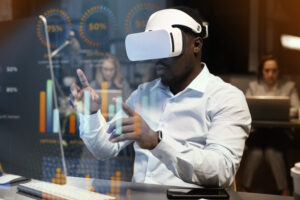
Chapter 3: Irrelevant Training
It stands to reason that since the world is in a constant state of change, the adaptive leadership process cannot be based on the past patterns, structures, or ways of thinking. Everything must be new. This understanding leads us to another foundational concept: most leaders were trained for leadership in a world that is disappearing. The education and training that many leaders received is now more in the rearview mirror behind them than the windshield in front of them.
This means that much (but not all) of our leadership training is now irrelevant. It no longer works, which is very frustrating and perplexing to many organizational and team leaders. What is needed is leadership training that focuses on future-oriented skills. That is exactly what this course and lesson are designed to impart.
The success of an organization can be directly linked to its leaders and their skills. In the evolving world of business, organizational leadership training must be focused on adaptive skills. Mature leaders and emerging leaders alike must develop future-oriented skills for their team, department, and organization to prosper.

Chapter 4: Understanding Culture
What is culture? Why is it important for business leaders to understand? How does it impact how organizations lead, influence, and retain their talent?
In today’s diverse and interconnected world, leadership extends beyond simple management skills. Understanding culture, both broadly and specifically, is an essential element for leaders and organizations to be successful. Leading with an understanding of culture is intertwined with the ability to adapt to a diverse workforce, changing markets, and transforming trends.
Understanding culture is beneficial for:
Effective communication. Communication is a primary skill for successful leadership. Cultural differences (nationality, gender, generation, etc.) require a culturally aware leader to foster a sense of inclusivity, collaboration, and innovation.
Building high-performing teams. Often teams struggle and experience conflict because of differences in perspectives. For the culturally conscious and adaptive leader, these struggles become benefits. Understanding and adapting to various cultural elements will enable team members to feel a sense of inclusivity and enable team innovation to reach new heights.
Risk management. Cultural intelligence is essential for risk management. Culturally aware leaders will anticipate potential problems and can help limit the likelihood of misunderstanding, conflict, and various legal issues.
Adaptability and innovation. Leaders who appreciate various cultures are more likely to learn from other worldviews, embrace difference, and build a culture of innovation. Adaptability and innovation are essential leadership intelligence qualities in an evolving business climate.
When leaders begin to understand culture, they pave a path toward effective adaptive leadership. This lesson will give an excellent framework for understanding culture and reading the signs of the times.
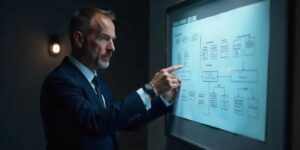
Chapter 5: Organizational Shift
Organizational structures are changing with the times. Society has moved from the industrial revolution into the digital revolution. The shift into the new age of information, artificial intelligence, quantum computing, and the like requires new organizational structures. The old-style hierarchically weighted command and control constructs don’t fit in the modern era. The old model is fading away.
Over the past few decades, organizations have been reorganizing their structures. Terms for new structures include names like flat, flatter, and holacratic. The change in structure reflects the need to adapt to the new business environment.
For leaders, this shift has many practical applications. The days of a command-and-control leadership style are ending. New structures require new skills. Now, leaders must intentionally build trust, inspire their team members, and empower teams to collaborate toward creative solutions and innovative products. Organizations and organizational leaders need to think in terms of shared leadership, shared responsibility, and empowered teams to overcome challenges and harness the power of a diverse workforce. In this lesson course, participants will gain insight into organizational shifts and the foundational skills required to thrive as adaptive leaders in this business ecosystem.

Chapter 6: Worldview Shift
Another mega-shift that is vital for leaders to understand is the vastly different views of the world… and work… that differing groups of people have. A person’s worldview paints how they see and interpret the world around them. It frames their values, likes and dislikes, and even how they view work and vocation.
The issue currently is that the worldview of differing generations is not just a little different like in times past. The worldview between older generations and younger ones is vast. There is a night and day difference between two coexisting yet competing worldviews. Many people would describe the older worldview in terms of “modern,” while the newer one carries the term “post-modern.”
Why is the shift in worldview so important?
Because the last time the world experienced such a drastic shift in worldview was the end of the 17th century and into the 18th. It is better known as the Enlightenment Movement. This massive shift is part of the reason companies experience generational conflict like never before. In this lesson, students will gain understanding and respect for differing worldviews. This will serve as a foundation for adaptive skills such as communication, conflict resolution, and collaboration.

Chapter 7: Generational Cohorts
In most organizations, there are four (4) distinct generational cohorts. Each generation has its own values, beliefs, and priorities. They also have very different worldviews and characteristics. These differences potentially create conflict, derail team effectiveness, and create a sense of dissatisfaction if not understood and adapted to.
In this lesson, participants will learn about the four primary generational cohorts. They will examine some of the distinctions and differences between each generation. They will also learn that not every person in a generational cohort exhibits all the behaviors and beliefs of that cohort. The important concept to grasp is the broad generational differences, shaping factors, and trends.

Chapter 8: Shaping Factors
Each generation is unique from other generational cohorts because they are each shaped by the cultural, economic, social, political, and global factors of their childhood. Furthermore, one’s family of origin and familial relationships contribute to the formation of generations.
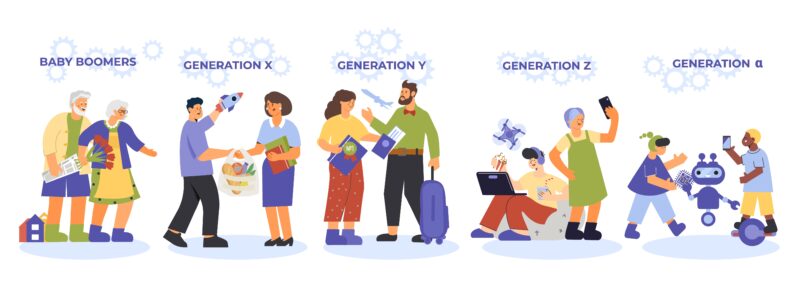
One trend that has greatly influenced millennials and Gen Z is the proliferation of technology during their lifetimes. While baby boomers, Gen. X, and even some traditionalists have adapted to the world of technology, they didn’t grow up with it. Baby boomers and Gen. X did not experience social media, constant connectivity, or smartphones in their formative years. According to many neuroscientists and studies, this constant exposure to technology has literally changed the way that millennials and Gen Z think and behave.
Each shaping factor is important for understanding. Understanding will help leaders gain insight into the “why” of certain generational behaviors, beliefs, and values. Understanding can then lead to empathy, which is the doorway to effective adaptive leadership and multigenerational teaming.

Chapter 9: Distinguishing Trends
A trend is a prevailing tendency. Through research, scholars have identified observable trends that distinguish one generation from another. Trends in behavior, belief, and expectations flow from the factors that shaped each generation. Examining various broad trends will enable course participants to see the differences between generations as well as the direction of generational thought.
Gaining an awareness of trends is vital for adaptive leaders. Understanding shaping factors reveals how we got where we are. Distinguishing trends gives insight as to the direction generational thoughts and behaviors are heading in the future.

Chapter 10: Value Shift
Past generations were governed, for the most part, by conformity. Children growing up in older generational cohorts had certain social and societal expectations placed upon them. People behaved in certain ways because it was expected. They thought certain ways because that’s what was acceptable. The ideal was to “fit in” and not rock the boat. Everyone valued the norm. The norm ruled.
With the arrival of millennials, that value shifted. For them, authenticity is king. Millennials and Gen Z value authenticity and individual expression, not conformity. Authenticity is shaped by individual experience, thought, and belief. Authenticity and individual self-expression are part of the reason for this cohort’s embrace of expression through tattoos. Furthermore, this value feeds the post-modern meta-narrative that rejects absolute truth. Now, truth is thought of as an individual construct, not an overarching standard or belief.
In this lesson, participants will gain valuable insight into this major value shift and learn how to practically navigate this shift.
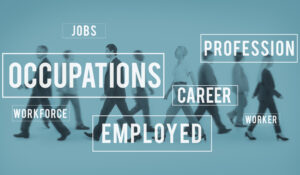
Chapter 11: Employment Trends
As of 2017, there are more millennials in the workforce than any other generational cohort. This workforce population is the weight behind the dramatic changes that are happening in the workplace. Currently, organizations face quiet quitting, workplace entitlement, and sweeping employee disengagement like no other era before.
And this is just the beginning.
By 2025, Gen Z will be set to be the second largest generation in the workforce, occupying between 24% and 27% of jobs. Most millennials and Gen. Z employees expect to have at least 15–17 different jobs in their lifetime. 70% believe they will be self-employed contractors.
The current trends indicate that the workplace environment will continue to be in a season of radical change. In this lesson, participants will gain insight into those employment trends. They will look at how leaders and organizations can begin to adapt to prepare for the sweeping changes even before they fully arrive.

Chapter 12: Leadership Future
The ability to lead and adapt is an absolute requirement for leadership in the 21st century. As culture, technology, and the world around us continue to evolve, so must we as leaders. A new world requires new training and new skills for organizations and their leaders to thrive in a constantly evolving world.
In this last lesson, participants will draw from the first eleven (11) lessons to peer into the future and thus the need to become an adaptive leader. They will also identify and write a vision statement as part of their leadership development action plan. They will then identify between three (3) and five (5) actionable changes that they will begin to implement in their roles and organizations immediately.
Curriculum
Adaptive Leadership – Workshop 1 – Leadership Future
- Understanding VUCA
- World Ahead
- Irrelevant Training
- Understanding Culture
- Organizational Shift
- Worldview Shift
- Generational Cohorts
- Shaping Factors
- Distinguishing Trends
- Value Shift
- Employment Trends
- Leadership Future
Distance Learning
Introduction
Welcome to Appleton Greene and thank you for enrolling on the Adaptive Leadership corporate training program. You will be learning through our unique facilitation via distance-learning method, which will enable you to practically implement everything that you learn academically. The methods and materials used in your program have been designed and developed to ensure that you derive the maximum benefits and enjoyment possible. We hope that you find the program challenging and fun to do. However, if you have never been a distance-learner before, you may be experiencing some trepidation at the task before you. So we will get you started by giving you some basic information and guidance on how you can make the best use of the modules, how you should manage the materials and what you should be doing as you work through them. This guide is designed to point you in the right direction and help you to become an effective distance-learner. Take a few hours or so to study this guide and your guide to tutorial support for students, while making notes, before you start to study in earnest.
Study environment
You will need to locate a quiet and private place to study, preferably a room where you can easily be isolated from external disturbances or distractions. Make sure the room is well-lit and incorporates a relaxed, pleasant feel. If you can spoil yourself within your study environment, you will have much more of a chance to ensure that you are always in the right frame of mind when you do devote time to study. For example, a nice fire, the ability to play soft soothing background music, soft but effective lighting, perhaps a nice view if possible and a good size desk with a comfortable chair. Make sure that your family know when you are studying and understand your study rules. Your study environment is very important. The ideal situation, if at all possible, is to have a separate study, which can be devoted to you. If this is not possible then you will need to pay a lot more attention to developing and managing your study schedule, because it will affect other people as well as yourself. The better your study environment, the more productive you will be.
Study tools & rules
Try and make sure that your study tools are sufficient and in good working order. You will need to have access to a computer, scanner and printer, with access to the internet. You will need a very comfortable chair, which supports your lower back, and you will need a good filing system. It can be very frustrating if you are spending valuable study time trying to fix study tools that are unreliable, or unsuitable for the task. Make sure that your study tools are up to date. You will also need to consider some study rules. Some of these rules will apply to you and will be intended to help you to be more disciplined about when and how you study. This distance-learning guide will help you and after you have read it you can put some thought into what your study rules should be. You will also need to negotiate some study rules for your family, friends or anyone who lives with you. They too will need to be disciplined in order to ensure that they can support you while you study. It is important to ensure that your family and friends are an integral part of your study team. Having their support and encouragement can prove to be a crucial contribution to your successful completion of the program. Involve them in as much as you can.
Successful distance-learning
Distance-learners are freed from the necessity of attending regular classes or workshops, since they can study in their own way, at their own pace and for their own purposes. But unlike traditional internal training courses, it is the student’s responsibility, with a distance-learning program, to ensure that they manage their own study contribution. This requires strong self-discipline and self-motivation skills and there must be a clear will to succeed. Those students who are used to managing themselves, are good at managing others and who enjoy working in isolation, are more likely to be good distance-learners. It is also important to be aware of the main reasons why you are studying and of the main objectives that you are hoping to achieve as a result. You will need to remind yourself of these objectives at times when you need to motivate yourself. Never lose sight of your long-term goals and your short-term objectives. There is nobody available here to pamper you, or to look after you, or to spoon-feed you with information, so you will need to find ways to encourage and appreciate yourself while you are studying. Make sure that you chart your study progress, so that you can be sure of your achievements and re-evaluate your goals and objectives regularly.
Self-assessment
Appleton Greene training programs are in all cases post-graduate programs. Consequently, you should already have obtained a business-related degree and be an experienced learner. You should therefore already be aware of your study strengths and weaknesses. For example, which time of the day are you at your most productive? Are you a lark or an owl? What study methods do you respond to the most? Are you a consistent learner? How do you discipline yourself? How do you ensure that you enjoy yourself while studying? It is important to understand yourself as a learner and so some self-assessment early on will be necessary if you are to apply yourself correctly. Perform a SWOT analysis on yourself as a student. List your internal strengths and weaknesses as a student and your external opportunities and threats. This will help you later on when you are creating a study plan. You can then incorporate features within your study plan that can ensure that you are playing to your strengths, while compensating for your weaknesses. You can also ensure that you make the most of your opportunities, while avoiding the potential threats to your success.
Accepting responsibility as a student
Training programs invariably require a significant investment, both in terms of what they cost and in the time that you need to contribute to study and the responsibility for successful completion of training programs rests entirely with the student. This is never more apparent than when a student is learning via distance-learning. Accepting responsibility as a student is an important step towards ensuring that you can successfully complete your training program. It is easy to instantly blame other people or factors when things go wrong. But the fact of the matter is that if a failure is your failure, then you have the power to do something about it, it is entirely in your own hands. If it is always someone else’s failure, then you are powerless to do anything about it. All students study in entirely different ways, this is because we are all individuals and what is right for one student, is not necessarily right for another. In order to succeed, you will have to accept personal responsibility for finding a way to plan, implement and manage a personal study plan that works for you. If you do not succeed, you only have yourself to blame.
Planning
By far the most critical contribution to stress, is the feeling of not being in control. In the absence of planning we tend to be reactive and can stumble from pillar to post in the hope that things will turn out fine in the end. Invariably they don’t! In order to be in control, we need to have firm ideas about how and when we want to do things. We also need to consider as many possible eventualities as we can, so that we are prepared for them when they happen. Prescriptive Change, is far easier to manage and control, than Emergent Change. The same is true with distance-learning. It is much easier and much more enjoyable, if you feel that you are in control and that things are going to plan. Even when things do go wrong, you are prepared for them and can act accordingly without any unnecessary stress. It is important therefore that you do take time to plan your studies properly.
Management
Once you have developed a clear study plan, it is of equal importance to ensure that you manage the implementation of it. Most of us usually enjoy planning, but it is usually during implementation when things go wrong. Targets are not met and we do not understand why. Sometimes we do not even know if targets are being met. It is not enough for us to conclude that the study plan just failed. If it is failing, you will need to understand what you can do about it. Similarly if your study plan is succeeding, it is still important to understand why, so that you can improve upon your success. You therefore need to have guidelines for self-assessment so that you can be consistent with performance improvement throughout the program. If you manage things correctly, then your performance should constantly improve throughout the program.
Study objectives & tasks
The first place to start is developing your program objectives. These should feature your reasons for undertaking the training program in order of priority. Keep them succinct and to the point in order to avoid confusion. Do not just write the first things that come into your head because they are likely to be too similar to each other. Make a list of possible departmental headings, such as: Customer Service; E-business; Finance; Globalization; Human Resources; Technology; Legal; Management; Marketing and Production. Then brainstorm for ideas by listing as many things that you want to achieve under each heading and later re-arrange these things in order of priority. Finally, select the top item from each department heading and choose these as your program objectives. Try and restrict yourself to five because it will enable you to focus clearly. It is likely that the other things that you listed will be achieved if each of the top objectives are achieved. If this does not prove to be the case, then simply work through the process again.
Study forecast
As a guide, the Appleton Greene Adaptive Leadership corporate training program should take 12-18 months to complete, depending upon your availability and current commitments. The reason why there is such a variance in time estimates is because every student is an individual, with differing productivity levels and different commitments. These differentiations are then exaggerated by the fact that this is a distance-learning program, which incorporates the practical integration of academic theory as an as a part of the training program. Consequently all of the project studies are real, which means that important decisions and compromises need to be made. You will want to get things right and will need to be patient with your expectations in order to ensure that they are. We would always recommend that you are prudent with your own task and time forecasts, but you still need to develop them and have a clear indication of what are realistic expectations in your case. With reference to your time planning: consider the time that you can realistically dedicate towards study with the program every week; calculate how long it should take you to complete the program, using the guidelines featured here; then break the program down into logical modules and allocate a suitable proportion of time to each of them, these will be your milestones; you can create a time plan by using a spreadsheet on your computer, or a personal organizer such as MS Outlook, you could also use a financial forecasting software; break your time forecasts down into manageable chunks of time, the more specific you can be, the more productive and accurate your time management will be; finally, use formulas where possible to do your time calculations for you, because this will help later on when your forecasts need to change in line with actual performance. With reference to your task planning: refer to your list of tasks that need to be undertaken in order to achieve your program objectives; with reference to your time plan, calculate when each task should be implemented; remember that you are not estimating when your objectives will be achieved, but when you will need to focus upon implementing the corresponding tasks; you also need to ensure that each task is implemented in conjunction with the associated training modules which are relevant; then break each single task down into a list of specific to do’s, say approximately ten to do’s for each task and enter these into your study plan; once again you could use MS Outlook to incorporate both your time and task planning and this could constitute your study plan; you could also use a project management software like MS Project. You should now have a clear and realistic forecast detailing when you can expect to be able to do something about undertaking the tasks to achieve your program objectives.
Performance management
It is one thing to develop your study forecast, it is quite another to monitor your progress. Ultimately it is less important whether you achieve your original study forecast and more important that you update it so that it constantly remains realistic in line with your performance. As you begin to work through the program, you will begin to have more of an idea about your own personal performance and productivity levels as a distance-learner. Once you have completed your first study module, you should re-evaluate your study forecast for both time and tasks, so that they reflect your actual performance level achieved. In order to achieve this you must first time yourself while training by using an alarm clock. Set the alarm for hourly intervals and make a note of how far you have come within that time. You can then make a note of your actual performance on your study plan and then compare your performance against your forecast. Then consider the reasons that have contributed towards your performance level, whether they are positive or negative and make a considered adjustment to your future forecasts as a result. Given time, you should start achieving your forecasts regularly.
With reference to time management: time yourself while you are studying and make a note of the actual time taken in your study plan; consider your successes with time-efficiency and the reasons for the success in each case and take this into consideration when reviewing future time planning; consider your failures with time-efficiency and the reasons for the failures in each case and take this into consideration when reviewing future time planning; re-evaluate your study forecast in relation to time planning for the remainder of your training program to ensure that you continue to be realistic about your time expectations. You need to be consistent with your time management, otherwise you will never complete your studies. This will either be because you are not contributing enough time to your studies, or you will become less efficient with the time that you do allocate to your studies. Remember, if you are not in control of your studies, they can just become yet another cause of stress for you.
With reference to your task management: time yourself while you are studying and make a note of the actual tasks that you have undertaken in your study plan; consider your successes with task-efficiency and the reasons for the success in each case; take this into consideration when reviewing future task planning; consider your failures with task-efficiency and the reasons for the failures in each case and take this into consideration when reviewing future task planning; re-evaluate your study forecast in relation to task planning for the remainder of your training program to ensure that you continue to be realistic about your task expectations. You need to be consistent with your task management, otherwise you will never know whether you are achieving your program objectives or not.
Keeping in touch
You will have access to qualified and experienced professors and tutors who are responsible for providing tutorial support for your particular training program. So don’t be shy about letting them know how you are getting on. We keep electronic records of all tutorial support emails so that professors and tutors can review previous correspondence before considering an individual response. It also means that there is a record of all communications between you and your professors and tutors and this helps to avoid any unnecessary duplication, misunderstanding, or misinterpretation. If you have a problem relating to the program, share it with them via email. It is likely that they have come across the same problem before and are usually able to make helpful suggestions and steer you in the right direction. To learn more about when and how to use tutorial support, please refer to the Tutorial Support section of this student information guide. This will help you to ensure that you are making the most of tutorial support that is available to you and will ultimately contribute towards your success and enjoyment with your training program.
Work colleagues and family
You should certainly discuss your program study progress with your colleagues, friends and your family. Appleton Greene training programs are very practical. They require you to seek information from other people, to plan, develop and implement processes with other people and to achieve feedback from other people in relation to viability and productivity. You will therefore have plenty of opportunities to test your ideas and enlist the views of others. People tend to be sympathetic towards distance-learners, so don’t bottle it all up in yourself. Get out there and share it! It is also likely that your family and colleagues are going to benefit from your labors with the program, so they are likely to be much more interested in being involved than you might think. Be bold about delegating work to those who might benefit themselves. This is a great way to achieve understanding and commitment from people who you may later rely upon for process implementation. Share your experiences with your friends and family.
Making it relevant
The key to successful learning is to make it relevant to your own individual circumstances. At all times you should be trying to make bridges between the content of the program and your own situation. Whether you achieve this through quiet reflection or through interactive discussion with your colleagues, client partners or your family, remember that it is the most important and rewarding aspect of translating your studies into real self-improvement. You should be clear about how you want the program to benefit you. This involves setting clear study objectives in relation to the content of the course in terms of understanding, concepts, completing research or reviewing activities and relating the content of the modules to your own situation. Your objectives may understandably change as you work through the program, in which case you should enter the revised objectives on your study plan so that you have a permanent reminder of what you are trying to achieve, when and why.
Distance-learning check-list
Prepare your study environment, your study tools and rules.
Undertake detailed self-assessment in terms of your ability as a learner.
Create a format for your study plan.
Consider your study objectives and tasks.
Create a study forecast.
Assess your study performance.
Re-evaluate your study forecast.
Be consistent when managing your study plan.
Use your Appleton Greene Certified Learning Provider (CLP) for tutorial support.
Make sure you keep in touch with those around you.

Tutorial Support
Programs
Appleton Greene uses standard and bespoke corporate training programs as vessels to transfer business process improvement knowledge into the heart of our clients’ organizations. Each individual program focuses upon the implementation of a specific business process, which enables clients to easily quantify their return on investment. There are hundreds of established Appleton Greene corporate training products now available to clients within customer services, e-business, finance, globalization, human resources, information technology, legal, management, marketing and production. It does not matter whether a client’s employees are located within one office, or an unlimited number of international offices, we can still bring them together to learn and implement specific business processes collectively. Our approach to global localization enables us to provide clients with a truly international service with that all important personal touch. Appleton Greene corporate training programs can be provided virtually or locally and they are all unique in that they individually focus upon a specific business function. They are implemented over a sustainable period of time and professional support is consistently provided by qualified learning providers and specialist consultants.
Support available
You will have a designated Certified Learning Provider (CLP) and an Accredited Consultant and we encourage you to communicate with them as much as possible. In all cases tutorial support is provided online because we can then keep a record of all communications to ensure that tutorial support remains consistent. You would also be forwarding your work to the tutorial support unit for evaluation and assessment. You will receive individual feedback on all of the work that you undertake on a one-to-one basis, together with specific recommendations for anything that may need to be changed in order to achieve a pass with merit or a pass with distinction and you then have as many opportunities as you may need to re-submit project studies until they meet with the required standard. Consequently the only reason that you should really fail (CLP) is if you do not do the work. It makes no difference to us whether a student takes 12 months or 18 months to complete the program, what matters is that in all cases the same quality standard will have been achieved.
Support Process
Please forward all of your future emails to the designated (CLP) Tutorial Support Unit email address that has been provided and please do not duplicate or copy your emails to other AGC email accounts as this will just cause unnecessary administration. Please note that emails are always answered as quickly as possible but you will need to allow a period of up to 20 business days for responses to general tutorial support emails during busy periods, because emails are answered strictly within the order in which they are received. You will also need to allow a period of up to 30 business days for the evaluation and assessment of project studies. This does not include weekends or public holidays. Please therefore kindly allow for this within your time planning. All communications are managed online via email because it enables tutorial service support managers to review other communications which have been received before responding and it ensures that there is a copy of all communications retained on file for future reference. All communications will be stored within your personal (CLP) study file here at Appleton Greene throughout your designated study period. If you need any assistance or clarification at any time, please do not hesitate to contact us by forwarding an email and remember that we are here to help. If you have any questions, please list and number your questions succinctly and you can then be sure of receiving specific answers to each and every query.
Time Management
It takes approximately 1 Year to complete the Adaptive Leadership corporate training program, incorporating 12 x 6-hour monthly workshops. Each student will also need to contribute approximately 4 hours per week over 1 Year of their personal time. Students can study from home or work at their own pace and are responsible for managing their own study plan. There are no formal examinations and students are evaluated and assessed based upon their project study submissions, together with the quality of their internal analysis and supporting documents. They can contribute more time towards study when they have the time to do so and can contribute less time when they are busy. All students tend to be in full time employment while studying and the Adaptive Leadership program is purposely designed to accommodate this, so there is plenty of flexibility in terms of time management. It makes no difference to us at Appleton Greene, whether individuals take 12-18 months to complete this program. What matters is that in all cases the same standard of quality will have been achieved with the standard and bespoke programs that have been developed.
Distance Learning Guide
The distance learning guide should be your first port of call when starting your training program. It will help you when you are planning how and when to study, how to create the right environment and how to establish the right frame of mind. If you can lay the foundations properly during the planning stage, then it will contribute to your enjoyment and productivity while training later. The guide helps to change your lifestyle in order to accommodate time for study and to cultivate good study habits. It helps you to chart your progress so that you can measure your performance and achieve your goals. It explains the tools that you will need for study and how to make them work. It also explains how to translate academic theory into practical reality. Spend some time now working through your distance learning guide and make sure that you have firm foundations in place so that you can make the most of your distance learning program. There is no requirement for you to attend training workshops or classes at Appleton Greene offices. The entire program is undertaken online, program course manuals and project studies are administered via the Appleton Greene web site and via email, so you are able to study at your own pace and in the comfort of your own home or office as long as you have a computer and access to the internet.
How To Study
The how to study guide provides students with a clear understanding of the Appleton Greene facilitation via distance learning training methods and enables students to obtain a clear overview of the training program content. It enables students to understand the step-by-step training methods used by Appleton Greene and how course manuals are integrated with project studies. It explains the research and development that is required and the need to provide evidence and references to support your statements. It also enables students to understand precisely what will be required of them in order to achieve a pass with merit and a pass with distinction for individual project studies and provides useful guidance on how to be innovative and creative when developing your Unique Program Proposition (UPP).
Tutorial Support
Tutorial support for the Appleton Greene Adaptive Leadership corporate training program is provided online either through the Appleton Greene Client Support Portal (CSP), or via email. All tutorial support requests are facilitated by a designated Program Administration Manager (PAM). They are responsible for deciding which professor or tutor is the most appropriate option relating to the support required and then the tutorial support request is forwarded onto them. Once the professor or tutor has completed the tutorial support request and answered any questions that have been asked, this communication is then returned to the student via email by the designated Program Administration Manager (PAM). This enables all tutorial support, between students, professors and tutors, to be facilitated by the designated Program Administration Manager (PAM) efficiently and securely through the email account. You will therefore need to allow a period of up to 20 business days for responses to general support queries and up to 30 business days for the evaluation and assessment of project studies, because all tutorial support requests are answered strictly within the order in which they are received. This does not include weekends or public holidays. Consequently you need to put some thought into the management of your tutorial support procedure in order to ensure that your study plan is feasible and to obtain the maximum possible benefit from tutorial support during your period of study. Please retain copies of your tutorial support emails for future reference. Please ensure that ALL of your tutorial support emails are set out using the format as suggested within your guide to tutorial support. Your tutorial support emails need to be referenced clearly to the specific part of the course manual or project study which you are working on at any given time. You also need to list and number any questions that you would like to ask, up to a maximum of five questions within each tutorial support email. Remember the more specific you can be with your questions the more specific your answers will be too and this will help you to avoid any unnecessary misunderstanding, misinterpretation, or duplication. The guide to tutorial support is intended to help you to understand how and when to use support in order to ensure that you get the most out of your training program. Appleton Greene training programs are designed to enable you to do things for yourself. They provide you with a structure or a framework and we use tutorial support to facilitate students while they practically implement what they learn. In other words, we are enabling students to do things for themselves. The benefits of distance learning via facilitation are considerable and are much more sustainable in the long-term than traditional short-term knowledge sharing programs. Consequently you should learn how and when to use tutorial support so that you can maximize the benefits from your learning experience with Appleton Greene. This guide describes the purpose of each training function and how to use them and how to use tutorial support in relation to each aspect of the training program. It also provides useful tips and guidance with regard to best practice.
Tutorial Support Tips
Students are often unsure about how and when to use tutorial support with Appleton Greene. This Tip List will help you to understand more about how to achieve the most from using tutorial support. Refer to it regularly to ensure that you are continuing to use the service properly. Tutorial support is critical to the success of your training experience, but it is important to understand when and how to use it in order to maximize the benefit that you receive. It is no coincidence that those students who succeed are those that learn how to be positive, proactive and productive when using tutorial support.
Be positive and friendly with your tutorial support emails
Remember that if you forward an email to the tutorial support unit, you are dealing with real people. “Do unto others as you would expect others to do unto you”. If you are positive, complimentary and generally friendly in your emails, you will generate a similar response in return. This will be more enjoyable, productive and rewarding for you in the long-term.
Think about the impression that you want to create
Every time that you communicate, you create an impression, which can be either positive or negative, so put some thought into the impression that you want to create. Remember that copies of all tutorial support emails are stored electronically and tutors will always refer to prior correspondence before responding to any current emails. Over a period of time, a general opinion will be arrived at in relation to your character, attitude and ability. Try to manage your own frustrations, mood swings and temperament professionally, without involving the tutorial support team. Demonstrating frustration or a lack of patience is a weakness and will be interpreted as such. The good thing about communicating in writing, is that you will have the time to consider your content carefully, you can review it and proof-read it before sending your email to Appleton Greene and this should help you to communicate more professionally, consistently and to avoid any unnecessary knee-jerk reactions to individual situations as and when they may arise. Please also remember that the CLP Tutorial Support Unit will not just be responsible for evaluating and assessing the quality of your work, they will also be responsible for providing recommendations to other learning providers and to client contacts within the Appleton Greene global client network, so do be in control of your own emotions and try to create a good impression.
Remember that quality is preferred to quantity
Please remember that when you send an email to the tutorial support team, you are not using Twitter or Text Messaging. Try not to forward an email every time that you have a thought. This will not prove to be productive either for you or for the tutorial support team. Take time to prepare your communications properly, as if you were writing a professional letter to a business colleague and make a list of queries that you are likely to have and then incorporate them within one email, say once every month, so that the tutorial support team can understand more about context, application and your methodology for study. Get yourself into a consistent routine with your tutorial support requests and use the tutorial support template provided with ALL of your emails. The (CLP) Tutorial Support Unit will not spoon-feed you with information. They need to be able to evaluate and assess your tutorial support requests carefully and professionally.
Be specific about your questions in order to receive specific answers
Try not to write essays by thinking as you are writing tutorial support emails. The tutorial support unit can be unclear about what in fact you are asking, or what you are looking to achieve. Be specific about asking questions that you want answers to. Number your questions. You will then receive specific answers to each and every question. This is the main purpose of tutorial support via email.
Keep a record of your tutorial support emails
It is important that you keep a record of all tutorial support emails that are forwarded to you. You can then refer to them when necessary and it avoids any unnecessary duplication, misunderstanding, or misinterpretation.
Individual training workshops or telephone support
Please be advised that Appleton Greene does not provide separate or individual tutorial support meetings, workshops, or provide telephone support for individual students. Appleton Greene is an equal opportunities learning and service provider and we are therefore understandably bound to treat all students equally. We cannot therefore broker special financial or study arrangements with individual students regardless of the circumstances. All tutorial support is provided online and this enables Appleton Greene to keep a record of all communications between students, professors and tutors on file for future reference, in accordance with our quality management procedure and your terms and conditions of enrolment. All tutorial support is provided online via email because it enables us to have time to consider support content carefully, it ensures that you receive a considered and detailed response to your queries. You can number questions that you would like to ask, which relate to things that you do not understand or where clarification may be required. You can then be sure of receiving specific answers to each individual query. You will also then have a record of these communications and of all tutorial support, which has been provided to you. This makes tutorial support administration more productive by avoiding any unnecessary duplication, misunderstanding, or misinterpretation.
Tutorial Support Email Format
You should use this tutorial support format if you need to request clarification or assistance while studying with your training program. Please note that ALL of your tutorial support request emails should use the same format. You should therefore set up a standard email template, which you can then use as and when you need to. Emails that are forwarded to Appleton Greene, which do not use the following format, may be rejected and returned to you by the (CLP) Program Administration Manager. A detailed response will then be forwarded to you via email usually within 20 business days of receipt for general support queries and 30 business days for the evaluation and assessment of project studies. This does not include weekends or public holidays. Your tutorial support request, together with the corresponding TSU reply, will then be saved and stored within your electronic TSU file at Appleton Greene for future reference.
Subject line of your email
Please insert: Appleton Greene (CLP) Tutorial Support Request: (Your Full Name) (Date), within the subject line of your email.
Main body of your email
Please insert:
1. Appleton Greene Certified Learning Provider (CLP) Tutorial Support Request
2. Your Full Name
3. Date of TS request
4. Preferred email address
5. Backup email address
6. Course manual page name or number (reference)
7. Project study page name or number (reference)
Subject of enquiry
Please insert a maximum of 50 words (please be succinct)
Briefly outline the subject matter of your inquiry, or what your questions relate to.
Question 1
Maximum of 50 words (please be succinct)
Maximum of 50 words (please be succinct)
Question 3
Maximum of 50 words (please be succinct)
Question 4
Maximum of 50 words (please be succinct)
Question 5
Maximum of 50 words (please be succinct)
Please note that a maximum of 5 questions is permitted with each individual tutorial support request email.
Procedure
* List the questions that you want to ask first, then re-arrange them in order of priority. Make sure that you reference them, where necessary, to the course manuals or project studies.
* Make sure that you are specific about your questions and number them. Try to plan the content within your emails to make sure that it is relevant.
* Make sure that your tutorial support emails are set out correctly, using the Tutorial Support Email Format provided here.
* Save a copy of your email and incorporate the date sent after the subject title. Keep your tutorial support emails within the same file and in date order for easy reference.
* Allow up to 20 business days for a response to general tutorial support emails and up to 30 business days for the evaluation and assessment of project studies, because detailed individual responses will be made in all cases and tutorial support emails are answered strictly within the order in which they are received.
* Emails can and do get lost. So if you have not received a reply within the appropriate time, forward another copy or a reminder to the tutorial support unit to be sure that it has been received but do not forward reminders unless the appropriate time has elapsed.
* When you receive a reply, save it immediately featuring the date of receipt after the subject heading for easy reference. In most cases the tutorial support unit replies to your questions individually, so you will have a record of the questions that you asked as well as the answers offered. With project studies however, separate emails are usually forwarded by the tutorial support unit, so do keep a record of your own original emails as well.
* Remember to be positive and friendly in your emails. You are dealing with real people who will respond to the same things that you respond to.
* Try not to repeat questions that have already been asked in previous emails. If this happens the tutorial support unit will probably just refer you to the appropriate answers that have already been provided within previous emails.
* If you lose your tutorial support email records you can write to Appleton Greene to receive a copy of your tutorial support file, but a separate administration charge may be levied for this service.

How To Study
Your Certified Learning Provider (CLP) and Accredited Consultant can help you to plan a task list for getting started so that you can be clear about your direction and your priorities in relation to your training program. It is also a good way to introduce yourself to the tutorial support team.
Planning your study environment
Your study conditions are of great importance and will have a direct effect on how much you enjoy your training program. Consider how much space you will have, whether it is comfortable and private and whether you are likely to be disturbed. The study tools and facilities at your disposal are also important to the success of your distance-learning experience. Your tutorial support unit can help with useful tips and guidance, regardless of your starting position. It is important to get this right before you start working on your training program.
Planning your program objectives
It is important that you have a clear list of study objectives, in order of priority, before you start working on your training program. Your tutorial support unit can offer assistance here to ensure that your study objectives have been afforded due consideration and priority.
Planning how and when to study
Distance-learners are freed from the necessity of attending regular classes, since they can study in their own way, at their own pace and for their own purposes. This approach is designed to let you study efficiently away from the traditional classroom environment. It is important however, that you plan how and when to study, so that you are making the most of your natural attributes, strengths and opportunities. Your tutorial support unit can offer assistance and useful tips to ensure that you are playing to your strengths.
Planning your study tasks
You should have a clear understanding of the study tasks that you should be undertaking and the priority associated with each task. These tasks should also be integrated with your program objectives. The distance learning guide and the guide to tutorial support for students should help you here, but if you need any clarification or assistance, please contact your tutorial support unit.
Planning your time
You will need to allocate specific times during your calendar when you intend to study if you are to have a realistic chance of completing your program on time. You are responsible for planning and managing your own study time, so it is important that you are successful with this. Your tutorial support unit can help you with this if your time plan is not working.
Keeping in touch
Consistency is the key here. If you communicate too frequently in short bursts, or too infrequently with no pattern, then your management ability with your studies will be questioned, both by you and by your tutorial support unit. It is obvious when a student is in control and when one is not and this will depend how able you are at sticking with your study plan. Inconsistency invariably leads to in-completion.
Charting your progress
Your tutorial support team can help you to chart your own study progress. Refer to your distance learning guide for further details.
Making it work
To succeed, all that you will need to do is apply yourself to undertaking your training program and interpreting it correctly. Success or failure lies in your hands and your hands alone, so be sure that you have a strategy for making it work. Your Certified Learning Provider (CLP) and Accredited Consultant can guide you through the process of program planning, development and implementation.
Reading methods
Interpretation is often unique to the individual but it can be improved and even quantified by implementing consistent interpretation methods. Interpretation can be affected by outside interference such as family members, TV, or the Internet, or simply by other thoughts which are demanding priority in our minds. One thing that can improve our productivity is using recognized reading methods. This helps us to focus and to be more structured when reading information for reasons of importance, rather than relaxation.
Speed reading
When reading through course manuals for the first time, subconsciously set your reading speed to be just fast enough that you cannot dwell on individual words or tables. With practice, you should be able to read an A4 sheet of paper in one minute. You will not achieve much in the way of a detailed understanding, but your brain will retain a useful overview. This overview will be important later on and will enable you to keep individual issues in perspective with a more generic picture because speed reading appeals to the memory part of the brain. Do not worry about what you do or do not remember at this stage.
Content reading
Once you have speed read everything, you can then start work in earnest. You now need to read a particular section of your course manual thoroughly, by making detailed notes while you read. This process is called Content Reading and it will help to consolidate your understanding and interpretation of the information that has been provided.
Making structured notes on the course manuals
When you are content reading, you should be making detailed notes, which are both structured and informative. Make these notes in a MS Word document on your computer, because you can then amend and update these as and when you deem it to be necessary. List your notes under three headings: 1. Interpretation – 2. Questions – 3. Tasks. The purpose of the 1st section is to clarify your interpretation by writing it down. The purpose of the 2nd section is to list any questions that the issue raises for you. The purpose of the 3rd section is to list any tasks that you should undertake as a result. Anyone who has graduated with a business-related degree should already be familiar with this process.
Organizing structured notes separately
You should then transfer your notes to a separate study notebook, preferably one that enables easy referencing, such as a MS Word Document, a MS Excel Spreadsheet, a MS Access Database, or a personal organizer on your cell phone. Transferring your notes allows you to have the opportunity of cross-checking and verifying them, which assists considerably with understanding and interpretation. You will also find that the better you are at doing this, the more chance you will have of ensuring that you achieve your study objectives.
Question your understanding
Do challenge your understanding. Explain things to yourself in your own words by writing things down.
Clarifying your understanding
If you are at all unsure, forward an email to your tutorial support unit and they will help to clarify your understanding.
Question your interpretation
Do challenge your interpretation. Qualify your interpretation by writing it down.
Clarifying your interpretation
If you are at all unsure, forward an email to your tutorial support unit and they will help to clarify your interpretation.
Qualification Requirements
The student will need to successfully complete the project study and all of the exercises relating to the Adaptive Leadership corporate training program, achieving a pass with merit or distinction in each case, in order to qualify as an Accredited Adaptive Leadership Specialist (APTS). All monthly workshops need to be tried and tested within your company. These project studies can be completed in your own time and at your own pace and in the comfort of your own home or office. There are no formal examinations, assessment is based upon the successful completion of the project studies. They are called project studies because, unlike case studies, these projects are not theoretical, they incorporate real program processes that need to be properly researched and developed. The project studies assist us in measuring your understanding and interpretation of the training program and enable us to assess qualification merits. All of the project studies are based entirely upon the content within the training program and they enable you to integrate what you have learnt into your corporate training practice.
Adaptive Leadership – Grading Contribution
Project Study – Grading Contribution
Customer Service – 10%
E-business – 05%
Finance – 10%
Globalization – 10%
Human Resources – 10%
Information Technology – 10%
Legal – 05%
Management – 10%
Marketing – 10%
Production – 10%
Education – 05%
Logistics – 05%
TOTAL GRADING – 100%
Qualification grades
A mark of 90% = Pass with Distinction.
A mark of 75% = Pass with Merit.
A mark of less than 75% = Fail.
If you fail to achieve a mark of 75% with a project study, you will receive detailed feedback from the Certified Learning Provider (CLP) and/or Accredited Consultant, together with a list of tasks which you will need to complete, in order to ensure that your project study meets with the minimum quality standard that is required by Appleton Greene. You can then re-submit your project study for further evaluation and assessment. Indeed you can re-submit as many drafts of your project studies as you need to, until such a time as they eventually meet with the required standard by Appleton Greene, so you need not worry about this, it is all part of the learning process.
When marking project studies, Appleton Greene is looking for sufficient evidence of the following:
Pass with merit
A satisfactory level of program understanding
A satisfactory level of program interpretation
A satisfactory level of project study content presentation
A satisfactory level of Unique Program Proposition (UPP) quality
A satisfactory level of the practical integration of academic theory
Pass with distinction
An exceptional level of program understanding
An exceptional level of program interpretation
An exceptional level of project study content presentation
An exceptional level of Unique Program Proposition (UPP) quality
An exceptional level of the practical integration of academic theory
Preliminary Analysis
1. Understanding VUCA
Article:
• What VUCA Really Means for You by Nathan Bennett and G. James Lemoine (Harvard Business Review, 2014)
• Visit hbr.org.
Book:
• Leaders Make the Future: Ten New Leadership Skills for an Uncertain World by Bob Johansen
Podcast Episode:
• Leading in a VUCA World (from the HBR IdeaCast series)
• Search “HBR IdeaCast Leading in a VUCA World” in your preferred podcast app or visit hbr.org/podcasts.

2. World Ahead
Report:
• The Future of Leadership: A Forecast by McKinsey Global Institute
• Go to mckinsey.com and search for “Future of Leadership: A Forecast.”
Website/Article Series:
• Foresight and the Future of Work from the World Economic Forum
• Visit weforum.org and look under “Agenda” or search for “Future of Work.”
Podcast:
• The Future of Everything by The Wall Street Journal
• Search “The Future of Everything WSJ” on any podcast platform or go to wsj.com/podcasts.

3. Irrelevant Training
Article:
• Reskilling Revolution by the World Economic Forum
• Search “Reskilling Revolution WEF” at weforum.org.
Book:
• The Half-Life of Facts by Samuel Arbesman
Blog/Podcast:
• How to Keep Learning by Farnam Street (Shane Parrish)
• Visit fs.blog and search for “How to Keep Learning.”

4. Understanding Culture
Book:
• The Culture Map by Erin Meyer
Book:
• Cultural Intelligence: CQ: The Competitive Edge for Leaders Crossing Borders by David Livermore
Article Series:
• Harvard Business Review’s Insights on Managing Across Cultures
• Go to hbr.org and search “managing across cultures.”

5. Organizational Shift
Book:
• Accelerate (XLR8) by John P. Kotter
Book:
• Reinventing Organizations by Frédéric Laloux
Article:
• Cultural Agility: The New Leadership Imperative (Deloitte Insights)
• Visit deloitte.com/insights and search “cultural agility.”

6. Worldview Shift
TED Talk:
• The Danger of a Single Story by Chimamanda Ngozi Adichie
• Search on YouTube or TED.com.
Book:
• Mindset: The New Psychology of Success by Carol S. Dweck
• Emerging Adulthood by Jeffrey Jensen Arnett

7. Generational Cohorts
Book:
• Generations at Work: Managing the Clash of Boomers, Gen Xers, and Gen Yers by Claire Raines
• Millennials Rising by Neil Howe and William Strauss
Podcast Episode:
• Managing Across Generations (HBR IdeaCast)
• Go to hbr.org/podcasts or search in your preferred podcast app.

8. Shaping Factors
Book:
• The Next America, by Paul Taylor (Pew Research Center)
• The Fourth Industrial Revolution by Klaus Schwab
• Megatrends by John Naisbitt
Article:
• Pew Research Center: Social and Demographic Trends.
• Visit pewresearch.org and navigate to “topics” then to “generational trends”

9. Distinguishing Trends
Online Resource:
• TrendWatching (trendwatching.com)
• Pew Research Center: Social and Demographic Trends.
• Visit pewresearch.org and navigate to “topics” then to “generational trends”

10. Value Shift
Podcast:
• “Simon Sinek on the Millennial Question”
Articles:
• “Leading the Four Generations at Work” by SHRM (shrm.org)
Book:
• Gen Z @ WorkH How the Next Generation is Transforming the Workplace, by David and Jonah Stillman
• Value Shift: Why Companies Must Merge Social and Financial Imperatives to Achieve Superior Performance by Lynn Sharp Paine
TED Talk:
• The Generation Gap, by Chip Conley

11. Employment Trends
Report:
• The Future of Jobs Report from the World Economic Forum
• Go to weforum.org and search “Future of Jobs Report.”
Book:
• Working in the Gig Economy by Thomas Oppong
Book:
• The Shift: The Future of Work is Already Here by Lynda Gratton

12. Leadership Future
Book:
• Leadership on the Line: Staying Alive through the Dangers of Leading by Ronald Heifetz and Marty Linsky
Article/Collection:
• HBR’s 10 Must Reads on Leadership (Harvard Business Review)
TED Talk:
• Start with Why by Simon Sinek
• TED.com or YouTube.
Course Manuals 1-12
Course Manual 1: Understanding VUCA
Everything is changing… and rapidly.
Do you agree with that statement? If you do say, “yes!”
There have been a lot of major advancements in the last few decades. Take a moment and think about all the changes and advancements you have seen in your lifetime.
The Experience of a Gen Xer
I am a Gen Xer (born between 1965 and 1979), and as such, I have experienced lots of technological advancements in my lifetime. I remember when the Walkman first came out, the Commodore 64 computer, and the introduction of compact disk (CD) players. When I was younger and in school, adopting new technology was easy… and exciting! As I got a little older, technological advancement continued to flourish. I adopted some of the new technology easily. I thought the iPod was one of the greatest inventions ever. I no longer had to carry a shoebox filled with compact disks. Now, I’m a huge fan of streaming all kinds of music. I haven’t purchased a compact disk in over 20 years. I stream everything from music to movies to podcasts. However, I also remember when I first started banking via the internet. Early on, I had no problems tracking my finances online. Then I ventured into sending checks via mobile banking. I realized that in mobile banking I didn’t have to buy stamps every time I wanted to send a check, and for me, that was positive motivation. However, when it came to depositing my checks online, it took me a little while to try it. I had a little bit of hesitation—a tiny amount of fear that something would happen to the deposit that would cause lots of frustration and wasted time. However, once I tried it out and saw the ease and convenience of depositing checks online, I have never gone back. The same could be said for Chat GPT and other AI programs. At first, I didn’t see a need for artificial intelligence programs. After all, I have Google. However, once I got past my initial reaction toward AI, I found how useful and beneficial it can be.
Here is a basic list of a few things that have been invented since 1980.
• The World Wide Web (1989).
• Personal computers (1981).
• Wi-Fi technology (late 1990s)
• Global positioning satellite (1995)
• E-commerce (Amazon 1994)
• Hybrid cars (Toyota Prius 1997)
• Lithium-ion battery (1991)
• 3-D printing (1983)
• Online search engines (Google 1998)
• Blockchain technology (Bitcoin 2009)
• Drones
• Human Genome Project (completed in 2003)

The following is a list of a few inventions that are expanding right now and creating a degree of disruption.
Electric Vehicles (EVs) and autonomous vehicles (AVs)—The development of electric vehicles and autonomous driving technology is disrupting the automotive industry. EVs challenge the traditional internal combustion engine, while AVs can potentially transform the transportation industry.
CRISPR-Cas9 Gene Editing—CRISPR-Cas9 technology is transforming agriculture and healthcare by enabling exact gene editing. It has the potential to create breakthroughs in crop resilience, genetic disorder treatment, and new therapies.
Biotechnology and Bioengineering—Breakthroughs in biotechnology and bioengineering are revolutionizing numerous industries. Innovations like personalized medicine, synthetic biology, and even lab-grown meat have the potential to improve human health and well-being and to create solutions for global issues.
Internet of Things (IoT)—The Internet of Things involves connecting household and everyday items to the internet. The IoT is responsible for smart homes and smart cities. This technology is disrupting industries like healthcare, finance, telecommunications, agriculture, manufacturing, and more.
5G Technology—5G is much more disruptive than 3G or 4G were. 5G networks have faster data speeds, much lower latency, and greater capacity. 5G technology will be a catalyst for other technologies such as virtual reality (VR) and augmented reality (AR), as well as remote surgery and autonomous vehicles.
Artificial Intelligence and Machine Learning—AI and ML are expanding at a rapid pace and are transforming industries like finance, healthcare, telecommunication, manufacturing, and more.
Quantum Computing—Quantum computing has the potential to solve the most complex problems that are beyond the capability of classic computing. Quantum computing is still in the early days of discovery and development but will completely disrupt many industries.
Space Exploration and Commercial Spaceflight—The growth and expansion of commercial spaceflight companies are disrupting the space industry. New private companies are creating opportunities for space exploration, space tourism, and satellite deployment.
With all the various changes and advancements in the world today, it is inevitable that people will respond to those changes differently. Some people are early adopters. Others resist change for a while and then adopt the change as they become more comfortable with it. Others never change.
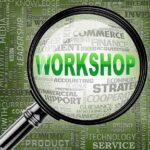
Exercise
Let’s look at this term, VUCA.
Introduction to VUCA
In today’s rapidly changing global environment, organizations are facing unprecedented challenges that require new perspectives and new approaches. One popular acronym to describe the complexity of a changing environment is VUCA, which stands for volatility, uncertainty, complexity, and ambiguity. Each element of VUCA presents distinctive implications for organizational leaders to acknowledge, understand, and respond to effectively.
What VUCA is
Volatility, Uncertainty, Complexity, and Ambiguity
Volatility refers to the speed and scale of change. In an environment of volatility, situations and conditions can change quickly and unexpectedly, requiring organizations to be flexible, agile, adaptable, and responsive. Factors such as technological disruptions, economic downturns, market fluctuations, geopolitical events, natural disasters, and pandemics contribute to volatility.
Uncertainty speaks to the lack of predictability in relation to future events. In an ever-evolving environment, there is an inability to forecast future events with any degree of certainty. The traditional methods of forecasting will be deemed inaccurate in an environment that is in continuous flux and constantly shifting. Factors that contribute to uncertainty include changing customer preferences, regulatory changes, geopolitical situations, the economy, technology, and competitive threats.
Complexity refers to the multitude of variables that make it extremely difficult to comprehend and address issues. In a complex environment, the normal cause-and-effect solutions are difficult to discern and often non-linear. Organizations must navigate a variety of influencing factors that contribute to the complexity of problem-solving and decision-making.
Ambiguity refers to the cloudiness of information and the possibility of multiple interpretations. In situations that are ambiguous, it is difficult to determine the correct course of action because the lines are fuzzy in cause-and-effect scenarios. Some possible scenarios of ambiguity can come from conflicting data, diversity of perspectives, conflicting stakeholder expectations, shifting cultural norms, and changing market dynamics.

The Evolution of VUCA
VUCA finds its origins first in the military. The term was used to describe the unpredictable and complex nature of combat. It was then adopted in the business world to describe the acceleration of technological advancements and increased volatility, uncertainty, complexity, and ambiguity in the corporate world. The rise of disruptive innovations, the digital revolution, and global interconnectedness have all intensified the need for leaders and organizations to be VUCA-aware. Lastly, the COVID-19 pandemic crisis highlighted the need and extreme importance for organizations to be adaptive, agile, and resilient in the face of VUCA.
Why VUCA Matters for Business Leaders
In an era when change seems to be the only constant, leaders who grasp the instability and complexity of VUCA are in a better position to navigate their organizations effectively. Understanding and preparing for VUCA obstacles allows organizations to be proactive rather than reactive, turning potential disruption and disaster into strategic opportunities.
Business leaders who are VUCA-aware can:
• Anticipate and answer market shifts with agility.
• Make better-informed decisions in an environment of uncertainty.
• Embrace the complexity of their business environment as a source for creativity and innovation.
• Navigate ambiguity with a clear vision, adaptive problem-solving, and agile strategies.

Essential Leadership Elements for Thriving in a VUCA Environment
1. Adaptive Leadership:
Most average leaders get stuck in their ruts and routines of leadership. They have their primary perspective, which leads to confirmation bias.
A VUCA world creates a VUCA marketplace. Adaptive leadership is the foundation of thriving in a VUCA environment. Leading in the midst of VUCA requires leaders to be adaptive, agile, and fluid in their leadership. It requires a willingness to learn from failures, embrace creativity and innovation, and explore approaches outside of conventional wisdom. Adaptive leaders will inspire their teams, seek to build trust, and demonstrate resilience in the face of difficulties. It is paramount that leaders develop the ability to adapt quickly, empower teams, and promote a culture of continuous learning. Adaptive leadership skills are critical for organizations to thrive in the modern business environment.
2. Creativity and Innovation:
Most leaders use what has worked in the past. They tend to be risk-averse and don’t intentionally create collaborative environments for innovation. Furthermore, many teams have not intentionally created an atmosphere that is conducive to the creative process. Unknowingly, these teams stifle the innovative and creative process by not building trust and psychological safety.
Creativity and innovation are vital when the world is in a constant state of change and disruption. Past patterns and strategies are no longer viable in a VUCA environment; therefore, organizations must create a culture that encourages innovation, experimentation, and risk-taking.
3. Fostering Resilience:
Many times, organizational leaders fear failure. They avoid failure at all costs. When they encounter a situation that is unknown or VUCA, they tend to freeze and get stuck in the proverbial paralysis of analysis, fearing failure.
Resilience is the ability to recover quickly from difficulties or setbacks. Leading in a VUCA environment necessitates the nurturing of organizational resilience because there will certainly be obstructions to success that must be met with resilience and fortitude. Resilient leaders do not shy away from or ignore problems; however, their attitude is always positive and hopeful.
4. Decision Making:
Again, most leaders will make decisions to stay safe within their comfort zone. For them, decisions are made when every bit of the problem is understood and analyzed. For these leaders, who follow a scientific methodology of problem-solving, volatility and ambiguity are the enemies.
VUCA represents a shift in the business landscape that is characterized by volatility, uncertainty, complexity, and ambiguity. Leaders who will thrive in this new VUCA world are those that are comfortable with ambiguity and the unknown. These leaders understand that not every problem has straightforward solutions. They must be willing to make decisions to the best of their ability even amidst volatility and uncertainty, adjusting their strategies and solutions as information and clarity emerge. By understanding the dynamics of VUCA and cultivating adaptive leadership capabilities, organizations can navigate uncertainty and change with confidence, unlocking new opportunities for growth and success.
5. Emotional Intelligence
In a VUCA environment, tensions will run high. People experience a variety of emotions during times of change, crisis, and chaos. In such an emotional atmosphere, leaders who possess a high degree of emotional intelligence are indispensable. A person’s emotional quotient (EQ) is measured by their ability to understand their emotions and the emotions of others. This enables the leader to build positive and supportive relationships, establish trust, and navigate the complexities of interpersonal relationships during emotionally turbulent times. Emotionally intelligent leaders will practice active listening, empathy, and effective communication habits. A team that is led by an emotionally intelligent leader and is growing in emotional intelligence themselves can overcome any challenge that they encounter.
6. Visionary Leadership
Visionary leadership is essential in a VUCA environment. In VUCA times, leaders must inspire confidence in their teams and keep the organization’s focus on its central mission. In times of chaos and the unknown, emotions will run high, and people will inevitably focus on change or uncertainty due to the uncomfortable nature of change and uncertainty. Thus, it is essential that leaders proclaim a bold vision for the future of the organization. The vision proclaimed must be grand enough for team members to leave behind the things they’ve known and grown comfortable with to embrace the vision. Visionary leadership is crucial in helping organizations thrive in VUCA.
7. Strategic Thinking
In a business environment that is VUCA, leaders need to be strategic in their thinking and planning. Strategic thinking, as it relates to thriving in a VUCA environment, consists of more than just planning. Strategic thinking in VUCA requires identifying emerging trends and turning those trends into future opportunities through the strategic process, all the while knowing that elements can shift rapidly. VUCA strategic thinking includes forecasting the future (often called strategic foresight), identifying organizational strengths and weaknesses, managing risk, and intentionally embracing innovative thinking to seize future opportunities.
8. Collaboration
To collaborate is best understood as to co-labor with others. It is absolutely essential in a VUCA environment for leaders to understand and utilize the power of collaboration. Collaboration is built upon the foundations of shared ownership, shared responsibility, and shared leadership. These elements of the collaborative process will break down the silos that prevent collaborative synergy. Collaboration thrives in an environment where there is trust, effective communication, ownership, respect, and confidence. When leaders build and establish a collaborative environment, their team will feel empowered to tackle any VUCA-related adversity head-on. This feeling of unity is essential for organizations to thrive in VUCA.
9. Growth Mindset
Organizational leaders and their teams must cultivate an agile growth mindset to be successful in VUCA. A mindset, in this case, refers to the perspective a leader has regarding their intelligence, capabilities, and talents. There are two types of mindsets. A growth mindset and a fixed mindset. A growth mindset is the opposite of a fixed mindset. A fixed mindset believes that intelligence and talents are fixed assets and cannot be improved upon. Some characteristics of a fixed mindset are being risk-averse, defensive about flaws or shortcomings, viewing feedback as a personal attack, being threatened by others success, and being resistant to challenges. A growth mindset, which is essential in VUCA, believes that an individual and their abilities can grow through training and practice. Some characteristics of a growth mindset are the development of talents with training over time, belief in their ability to overcome obstacles and challenges, accepting that growth requires risk and failure is a part of the learning process, and feedback, however uncomfortable, is necessary for growth and improvement.
10. Continuous Learning
In our fast-paced, ever-evolving world, where knowledge and technological advancements quickly become obsolete, it is imperative that leaders embrace an attitude of continuous learning. Leaders must embrace the attitude that they will be lifelong learners. As learners, leaders will need to adopt a spirit of curiosity, seek out new thoughts and experiences, and stay abreast of the latest trends. Continuous learning feeds many of the essential elements that are necessary for an organization to thrive in VUCA and fosters a culture of adaptation, innovation, and empowerment.
11. Employee Development
In a VUCA environment, when everything is in a constant state of change, employee training and development are paramount. Organizations need leaders and employees who are VUCA-aware and being trained so that they can build a strong, talented, and resilient team ready to tackle any obstacle. Development programs should focus on more than just technical skills. As organizations make the shift to collaborative teaming, skills such as emotional intelligence, effective communication, conflict resolution, collaboration, and innovative problem-solving will be crucial for success.

Exercise
• Which of these elements do you feel you do best?
• Which do you feel you’d like to grow in?
• Which do you think are the most necessary to be successful as a leader in the modern era?

Case Study: Netflix
Netflix, the popular streaming company, has navigated through VUCA since its inception. Let’s take a look at Netflix and how it understood and responded to VUCA.
Volatility:
Netflix encountered significant volatility. Being in the entertainment sector, Netflix faced evolving customer preferences, progressing technology, and extreme competition. One such instance of volatility was the shift from Netflix’s initial business, which was DVD rental via the mail, to streaming services via the internet. Instead of resisting change, Netflix embraced it and invested in streaming services and content creation. This shift allowed Netflix to position itself as a leader in streaming services and digital entertainment.
Uncertainty:
Netflix was founded in the days when Blockbuster was still king. Netflix’s original business model was based on membership that provided movies through the mail. However, as the competition between Blockbuster and Netflix grew fierce, the leadership of Netflix began to understand the importance of streaming. Although streaming services and their reliability were uncertain, the leaders at Netflix could envision a future when streaming services would be the norm. This strategic foresight enabled Netflix to pivot from the traditional movie rental service. This shift caused disruption in the video rental industry.
Complexity:
As a pioneer in the digital entertainment industry, Netflix had to navigate the complexity of licensing agreements, content creation, and even scaling and global expansion. All of these were significant challenges for Netflix. To address this complexity, Netflix adopted a data-driven approach. Netflix began tracking and leveraging data from user behavior to inform decisions and give personalized movie recommendations. The insights from the data proved invaluable to Netflix as they navigated the complexity of this new service. Furthermore, Netflix decided to distinguish itself through investing in original content creation.
Ambiguity:
In the early days of video streaming, Netflix’s future and the future of digital entertainment were ambiguous. Netflix had to work through difficult questions surrounding content licensing, revenue models, and customer adoption. Through continuous experimentation, Netflix was able to stay ahead of the curve and solidify its position as a pioneer in the emerging digital entertainment industry.

Exercise
1. Individual Reflection:
Ask each participant to quickly reflect on the Netflix case study and write down:
• One adaptive leadership principle they believe was critical to Netflix’s success (e.g., agile decision-making, transparent communication, or a culture of innovation).
• One actionable step they can immediately implement in their own organization to address a VUCA challenge.
2. Pair Share:
• Have participants pair up.
• In each pair, ask them to spend 2 minutes each sharing what they wrote.
• How the chosen Netflix principle might apply to their work context.
• What challenges do they foresee in applying their actionable step?
3. Rapid Group Synthesis:
• Bring the entire group back together.
Invite each pair to share one key insight or the most innovative actionable step from their discussion.

Course Manual 2: World Ahead
As we move ahead in our study, we want to build on some foundational principles. In this lesson, we want to establish principle #1, which is that the world in front of us is drastically different than the world behind us.
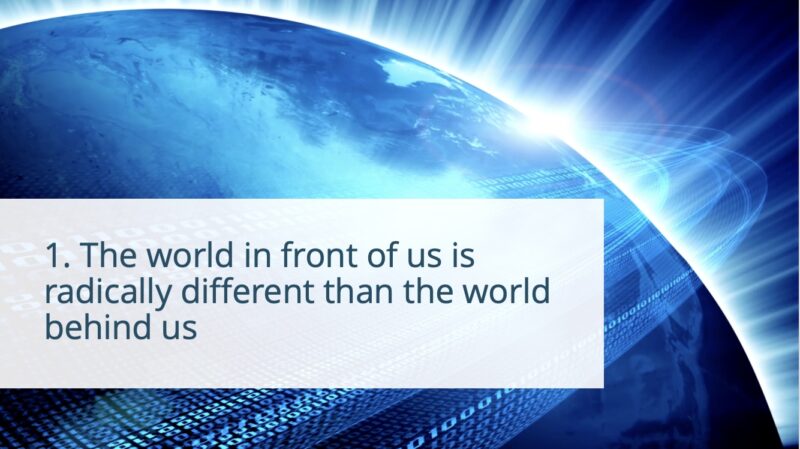

Exercise
The world in front of us is changing. It will look nothing like the world behind us. That means that we are in uncharted territory. There is no map to give us directions and no guide with past experiences to direct us.
As Marshall Goldsmith said, “What got us here won’t take us there.”

Organizational leadership now and in the future is drastically different than that of the past. The following shifts are 10 of the top differences between organizational leadership in the 1980s and 90s and the present day.
1. Hierarchical vs. Collaborative Organizational Structures:
In the 1980s, organizations were structured hierarchically. All the “power,” decisions, and strategies we made were made by a few executive leaders at the top of the organizational pyramid. In the hierarchical structure, layers of middle management created the feeling of a slow, unemotional, desensitized bureaucracy. Communication was poor and nontransparent. People were expected to do what they were told without asking questions or knowing the “why.” That day is over. In the modern era, there is a shift towards a flat (or flatter) organizational approach. This structure is more team-based and perhaps even entrepreneurial. A collaborative structure leans on the collective wisdom of the group, empowers teams and employees, and creates an atmosphere of transparency and trust.
2. Command-and-Control vs. Trust and Inspire
For most of the 20th century, organizations followed a command-and-control model of leadership. In this style, the leader dictates and evaluates the tasks to be performed by the employee. The leader both commands and controls the employee and his/her output. The primary emphasis was control over both quality and quantity. This model of leadership has its origins in the military. Since the world ahead is changing, so must the style of leadership. Organizations need to shift from control and compliance to commitment, collaboration, and inspiration. Trust is essential for any relationship or team, especially those that endeavor to be creative, innovative, and high-performing.
3. One-Dimensional Leadership vs. Diversity and Team Approach
In old leadership constructs, high-level leadership roles were predominately held by individuals from a narrow demographic. These individuals typically exerted classic dominant behavioral traits, had similar educational or experiential backgrounds, and held the same worldview paradigm. Today, there is a growing acknowledgment of the importance of diversity and its role in innovation, problem-solving, and collaborative teaming. Embracing differences allows organizations to have a well-rounded, high-performing team.
4. Top-Down Communication vs. Open Communication
The traditional office of the 1980s and 90s followed a top-down approach to communication. In the hierarchical approach, information was disseminated from top executives down through the various levels of leadership and management. With this basic approach, there was little room for dialogue, questions, or understanding. The information passed down came in the form of a decision or a directive. The matter is settled by the time it reaches the rank-and-file employee. This left little room for buy-in. Now and in the future, there is a shift toward open communication. Open communication values transparency, dialogue, and feedback. In an open communication model, leaders prioritize listening, collaboration through asking for employee input and feedback, and promoting open communication through all levels and all departments of an organization.
5. Transactional Leadership vs. Transformational Leadership
The transactional leadership model of the 20th century was primarily one where there was an exchange or transaction between leaders and followers. In this approach, leaders emphasized the use of punishment and rewards to motivate followers. The relationship between the leader and follower was transactional in nature. In the world ahead, leaders will need to embrace transformational leadership. Transformational leadership is based upon empowerment, collaboration, inspiration, and open communication. Transformational leadership will develop their employees through all levels of an organization to reach their full potential.
6. Individualistic vs. Collaborative
The top executive was often an admired and even celebrated figure in the 1980s and 90s. The imagery was of a Lone Ranger-type of leader who would lead the organization into its glory days. Since the focus was more on individuals than on teams, there was little room for collaboration, open communication, or diversity. Today, as organizations pivot to keep up with the times, leaders now must prioritize building high-performing teams. The high-performing teams will be highly collaborative and built on trust, empowerment, and mutual support.
7. Stable vs. Adaptive
In the past, stability and predictability were esteemed qualities in organizational leadership. Leaders were tasked with minimizing risk while also making the company more profitable. While there were ebbs, flows, and changes in the 1980s and 90s, the world and consequently the business environment weren’t yet VUCA. Today, VUCA is the constant. Organizational leaders can no longer remain comfortable with the successes of past strategies. The new normal for leadership must be adaptive. Adaptive leadership is essential for organizations to agilely respond to the myriad of changes, innovations, and preferences.
8. Office-Centric Work Environment vs. Remote or Hybrid Work Environment
The work environment of the 20th century was predominantly office-centric. Organizations would have buildings with offices. Employees, when coming to work, would go to the office. With the advent of the 21st century came technological breakthroughs that enabled employees to work remotely. Employees now had access to high-speed internet, video conferencing, and team communication applications. These innovations created a trend, even prior to the COVID-19 pandemic, in which at least half of the millennial generation wanted to work from home by 2025. Obviously, the COVID-19 pandemic sped that shift up. Now, organizations are not nearly as office-centric as they were at the end of the 20th century. In the world ahead, many organizations will be either work-from-home or in a hybrid work environment.
9. Local vs. Global Perspectives
Up through the 1980s and 1990s, most organizations were localized, with limited global reach. The fact is that the technology wasn’t yet available for organizations to span national borders. Today, however, technology and globalization have altered the business landscape, enabling organizations to operate globally. Organizations can now reach beyond borders through websites, social media, video conferencing, and much more. These technological advancements now require leaders to have a global mindset and cultural awareness.
10. Short-Term vs. Long-Term
In the 20th century, organizational leaders prioritized short-term gains over long-term sustainability. Back then, the future was expected to be more or less similar to the present, so organizations had the convenience of concentrating largely on the short term. In the modern business environment, organizational leaders balance short-term goals with longer-term strategies like cultivating resilience, fostering innovation, and championing shared value.
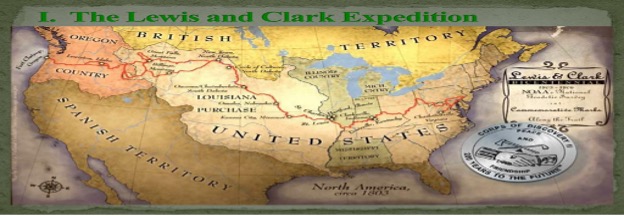
A Lesson from History: The Lewis and Clark Expedition
The Lewis and Clark Expedition, also known as the Corps of Discovery, was commissioned by President Thomas Jefferson in 1804. The goal was to map the territory west of the Mississippi River that was acquired through the Louisiana Purchase.
Lewis and Clark faced many unexpected challenges, the least of which was that they were going into uncharted territory. The expedition encountered extreme weather conditions, treacherous terrain, as well as encounters with wild animals and various Indian tribes. One significant challenge happened when the expedition reached the Rocky Mountains. The Rocky Mountain range was much different than originally thought, which caused Lewis and Clark to adapt their strategy. Initially, the expedition believed that they would be able to canoe around the mountain range or find a passable route through the mountains. This turned out not to be the case, so they abandoned their previous plans and adapted. The explorers ended up carrying their canoes and equipment overland. This adaptation involved the strenuous process of hauling all their supplies and equipment over the rugged terrain of the Rocky Mountains.
Despite the unknown difficulties posed by the Rocky Mountains and various other obstacles, the expedition’s ability to adapt to the unknown allowed them to successfully reach the Pacific Ocean in 1805.
Venturing into the Unknown
As leaders, we venture into the unknown. The world ahead is uncharted territory.
The world in front of us is not only uncharted territory, but it is constantly evolving. It is driven by technological advancements, societal changes, economic shifts, and global challenges.
Living in a VUCA world poses significant challenges for leaders at all levels of organizational leadership. The traditional command-and-control approach, along with hierarchical structures that worked 20 years ago, is now old-world constructs and ineffectual for navigating unknown terrain. Instead, leaders must embrace new mindsets, strategies, and skills to thrive in the world ahead because the world in front of us is drastically different than the world behind us.
As organizations will need to change for the world ahead, so will leadership skills. In the world ahead, there are nine (9) changes in mindsets, strategies, and skills that leaders will need to prosper in the world ahead. Those nine (9) are:

1. Visionary Leadership
Amidst uncertainty, leaders need to provide a compelling vision and direction that inspires people, builds confidence, and is in total alignment with company goals. A grand vision that is communicated clearly will help people deal with the uncertainty and ambiguity of the world ahead.
2. Adaptability
In an uncertain and volatile environment, leaders must be adaptable and open to change. Leaders should encourage adaptation, experimentation, and learning from failures to stay open and flexible in an unknown world.
3. Empathy
Ambiguity calls for empathy and inclusivity in all levels of leadership. Recognizing diverse perspectives and fostering a culture of psychological safety enables teams to traverse volatility and ambiguity collaboratively. Leaders must cultivate emotional intelligence and communication skills to intentionally build trust and connection.
4. Resilience
A VUCA environment is exhausting mentally and emotionally. Leaders must maximize their time and prioritize self-care. Living and promoting a work-life balance along with mental health resources are essential for building a culture of resilience.
5. Strategic Thinking
Complexity necessitates that thinking isn’t framed from past experiences but is open to innovative solutions that address systemic issues.
6. Collaborative Leadership
Create a culture of collaboration and collective intelligence. Encourage diverse perspectives, communication that is collaborative, and full participation in the decision-making or problem-solving process. Collaborative leadership is paramount for addressing the obstacles of the world ahead.
7. Shared Responsibility
Shared responsibility is the understanding that an organization’s success requires collaboration and partnership among all employees and stakeholders. It emphasizes the values of ownership, respect, accountability, and empowerment.
8. Shared Leadership
Shared leadership is the value that seeks to empower everyone in the organization. In not reserving leadership for a select few, organizations that embrace shared leadership will tap into hidden leadership and creative reserves and at the same time foster ownership, accountability, and innovation.
9. Creative Decision-Making
Decision-making in the future will not only need to be shared and accomplished collaboratively, but it will also need to be creative. Creative decision-making will be focused on the goal rather than just the problem and will employ creative, innovative, and out-of-the-box decision-making strategies.

Exercise
• As you think about venturing into uncharted territory, what emotions does that elicit for you?
• What emotions do you think it will elicit in people in your organization or on your team?
• Why does going into uncharted territory elicit such strong emotions from people?
People are hardwired to resist change. 90% of people do not like change at all and will oppose it. Let’s look at 7 reasons why people resist change at work.
1. Fear of the unknown. Change and uncertainty threaten people’s sense of safety and security. The need for safety and security is a core element within the human psyche.
2. Loss of control. Change, especially at work when you feel like it is being “forced” upon you, can make people feel like they are losing control. Even small process changes can potentially cause people to feel like their life or job is becoming unsettled.
3. Comfort with the status quo. Most people find comfort in things staying the same. Change disrupts the feeling of comfort, safety, and security, which can lead to people’s fierce resistance to change.
4. Concern about competence. In a work situation, employees may resist change if they feel like they lack the knowledge or skills to successfully adapt to the new situation. The fear of failure or incompetence is a significant factor in people’s refusal to adopt new technology and processes.
5. Past negative experiences. Past experiences with unsuccessful or painful changes will make some people resistant to change.
6. Lack of communication. If the reasons behind the proposed changes are not communicated well, people will feel more inclined to resist the change. Clear and transparent communication is vital to helping people understand the purpose and benefits of change.
7. Lack of collaboration. When people are not involved in the decision-making process, they may be more resistant to change. This is especially true in the marketplace. If employees feel that their opinions are not valued, they are being told rather than asked, and they have no sense of ownership, then they are more likely to resist change no matter how beneficial it might be.
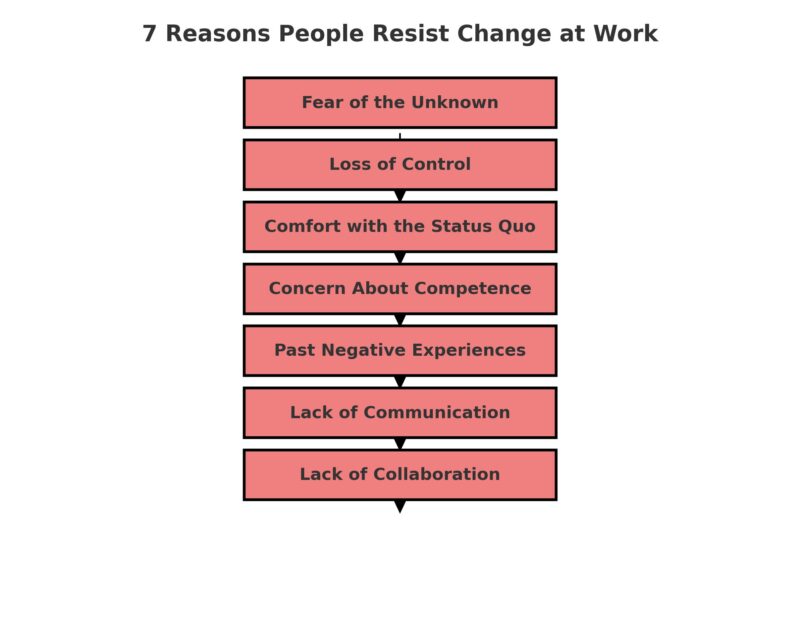

Exercise
• Which of these 7 reasons have you experienced personally?
The world is changing rapidly. That change, as we have seen, is described as VUCA.
When the world is changing in front of us, what do leaders need?
There are many possible answers. VUCA awareness, emotional intelligence, effective communication skills, change and transition management skills, etc.
Today, in this seminar, we are going to lump all those potential answers under the umbrella of adaptive leadership. So, when asked, “When the world is changing in front of us, what do leaders need?” The answer is the ability to adapt.
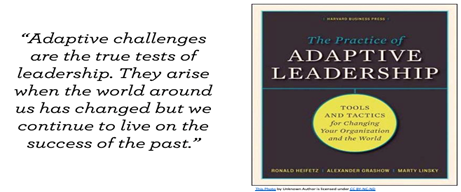
Considering the unknown nature of the future and the world’s state of VUCA, adaptation is the only viable leadership perspective for such uncharted territory. Like the Lewis and Clark Expedition, success depends on the ability to adapt.

Case Study: Blockbuster – A Cautionary Tale of Leadership Rigidity
Blockbuster, once a powerhouse in the home video rental industry, offers a striking example of how an over-reliance on command-and-control leadership can stifle innovation and lead to organizational collapse. As detailed in Trust and Inspire, Blockbuster’s top-down, risk-averse leadership maintained tight control over operations and decision-making, leaving little room for employee initiative or creative experimentation. When digital streaming emerged as a disruptive technology, Blockbuster’s rigid culture and reluctance to trust employees to innovate prevented a timely pivot. The company’s leadership clung to traditional brick-and-mortar models and failed to embrace a more flexible, trust-based approach. This missed opportunity allowed agile competitors like Netflix to capitalize on the new digital landscape, ultimately relegating Blockbuster to obsolescence and bankruptcy. The case underscores the critical importance of adaptive leadership that empowers employees, encourages innovation, and embraces change rather than resisting it.

Exercise
1. Leadership Style and Adaptation:
• How did Blockbuster’s command-and-control approach contribute to its inability to adapt to the digital streaming revolution?
2. Empowerment vs. Control:
• What specific changes in leadership practices could have fostered a culture of trust and innovation at Blockbuster?
3. Lessons for Today’s Leaders:
• In what ways does Blockbuster’s failure highlight the need for adaptive, trust-based leadership in a rapidly changing business environment?

Exercise: Leadership Retrospective Brainstorm
Identify how Blockbuster’s rigid leadership practices hindered innovation and discuss alternative, adaptive approaches.
Instructions:
1. Group Formation:
Divide participants into small groups (3–4 per group).
2. Brainstorm:
Each group lists key ways Blockbuster’s leadership inhibited innovation (e.g., resistance to change, micromanagement, lack of employee empowerment).
Then, they brainstorm alternative strategies that might have fostered a culture of trust and adaptability (e.g., decentralized decision-making, encouraging experimentation, open communication).
3. Sharing:
Each group shares one or two key insights with the entire workshop.
4. Wrap-Up:
The facilitator summarizes common themes and connects these insights to the broader principles of adaptive leadership.

Course Manual 3: Irrelevant Training
Since it is true that the world in front of us is drastically different than the world behind us, we can then deduce that another principle is also true. Therefore, principle #2 logically follows and is, “Most leaders were trained for a world that is disappearing.” It stands to reason that if the world ahead of us is vastly different than the world behind us, and if the current world environment is VUCA, then much of the leadership training paradigms, strategies, and methodologies of the past are no longer relevant. Now, obviously, there are some good values and principles that carry over. However, as Alvin Toffler, renowned futurist, writer, and businessman, said, “The adaptive corporation needs a new kind of leadership… with a whole new set of non-linear skills.”

In the new leadership reality, the rapid pace of change has profoundly altered the dynamics of the work environment, necessitating a need for new skills and new approaches to leadership training and development.
As the world moves forward, some traditional skills and ways of leading will need to be replaced or augmented with new leadership strategies and skills to successfully navigate obstacles and flourish in an ever-changing environment. In fact, it is blatantly obvious that a changing business environment requires a new set of skills. Old skills and strategies need to be replaced with new ones.
Let’s take some time to look at old leadership styles and the new skills that they need to be replaced with.
Old Leadership Skills vs. New Leadership Skills
Some of the old leadership skills that might need to be augmented or replaced are:
1. Command-and-Control Leadership Style:
Old Skill: Traditionally, leadership in organizations has followed a command-and-control approach. In this methodology, decisions, solutions, plans, etc., all flowed from the “top” of the organization. The organizational leaders at the top of the flow chart were the ones who held all the organizational power and authority.
New Skill: Adaptive and collaborative leadership. Adaptive leadership is far more flexible and agile than command and control. The successful organizations of the future will embrace an adaptive approach that is collaborative and seeks to build trust, ownership, and high levels of engagement and empowerment. In this model, leaders will replace command and control with trust, empowerment, and leveraging collective intelligence.
Benefits: The benefits for leaders who learn to be adaptive and collaborative leaders are:
• Agility: Adaptive collaboration allows organizations to respond quickly to unforeseen changes while utilizing the power of the collective intelligence of the team or organization.
• Increased Engagement: When employees feel heard and valued, their engagement will increase.

2. Micromanagement:
Old Skill: Micromanaging is an often-employed leadership tool that the extreme command and control manager employs. A micromanager watches and controls every detail of an employee’s work. In micromanaging situations, there is little to no trust, empowerment, or collaboration. This leaves the employee feeling devalued and completely controlled. Micromanaging is one of the most common leadership fails that results in employee dissatisfaction.
New Skill: Trust and inspire. Trust is the currency of leadership today. Without intentionally building and preserving trust, the leader-employee relationship will disintegrate and become unhealthy and potentially even toxic. On the other end of the spectrum, trusting, inspiring, and empowering employees to take ownership enhances the modern workforce’s productivity and creates a positive work culture.
Benefits:
• Increased Employee Engagement: When employees feel trusted and empowered to make decisions, they become more engaged in their work and feel a sense of ownership and responsibility.
• Greater Motivation and Morale: Trust and inspiration cultivate a positive work environment. This leads to employees feeling valued and higher levels of job commitment and satisfaction. All of this results in heightened motivation and morale.
• Improved Innovation: Micromanagement stifles creativity and innovation by limiting employee autonomy and risk-taking. Contrastingly, trusting and inspiring leadership encourages the exploration of innovative ideas and solutions.
• Enhanced Collaboration and Teamwork: In an atmosphere of trust and inspiration, a culture of collaboration is instilled because team members feel comfortable sharing ideas, seeking input, and working together toward common goals. This sense of connectedness and synergy leads to improved productivity.
• Greater Employee Development: Trusting and inspiring leaders invest in the development of their employees. This helps employees reach their full potential, increases job satisfaction, and contributes to the employee’s career success.
• Increased Employee Retention: Micromanaging drives talented people away from organizations. Leaders that build trust and utilize inspiration attract and retain top talent, which reduces turnover and associated costs.
• Improved Organizational Performance: Leaders who intentionally build trust and are inspirational create an environment where employees are more motivated, engaged, and innovative, which results in greater levels of productivity, efficiency, and effectiveness in the organization.
3. Hierarchical Decision-Making:
Old Skill: In the old model, decisions were reserved for and made by top executives in a hierarchical structure. The process was based upon position and was, for the most part, not collaborative. Once decisions were reached by those at the top of the hierarchical structure, those decisions were then communicated “down” to the appropriate employees whose job it was now to carry out the decision.
New Skill: Empowerment. The new skill is to empower employees to be involved in the decision-making process. This skill is collaborative in its approach. Empowering employees to be a part of the decision-making process utilizes the power of diversity, fosters innovation, and will inspire ownership.
Benefits:
• Faster Decision-Making: Empowering employees to make decisions reduces the bureaucratic delays that come with the hierarchical model.
• Increased Innovation and Creativity: Empowered employees are more likely to be creative and innovative when they feel empowered. They will feel encouraged to experiment and think creatively to solve problems and make decisions.
• Improved Customer Service: Employees who are empowered and trusted to make great decisions are better equipped to meet customer needs and deliver exceptional service. They can respond quickly to issues, tailor their solutions, and meet customer expectations. This leads to greater customer appreciation and satisfaction.
• Enhanced Employee Morale and Satisfaction: Empowerment gives employees a sense of purpose and dignity in their work. This leads to employees feeling valued and respected, which increases morale and job satisfaction.
• Enhanced Organizational Resilience: Empowerment reduces dependence upon a few people at the top of the hierarchy and thus distributes risk and enables the organization to adapt more quickly. This decentralized, empowered approach enhances organizational resilience.
• Attraction and Retention of Talent: Organizations that empower their employees are desirable places to work and therefore will attract top talent. Additionally, when employees feel empowered, they will be less likely to leave such a positive environment.

4. Lack of Emotional Intelligence:
Old Skill: Old structure leadership models had little room for emotions, let alone any understanding of emotional intelligence. In a command-and-control atmosphere, the employee, their feelings, and life circumstances were most often discounted in favor of organizational goals and the financial bottom line. Emotions had little to no place in the competitive corporate environment.
New Skill: Emotional intelligence. To thrive as an organizational leader in the world ahead, a leader must demonstrate mature emotional intelligence in each of its core elements. A leader’s emotional quotient is one of the most significant indicators as to whether that leader will be successful or not in their pursuit of leading people.
Benefits:
• Enriched Relationships: Leaders with high social and relationship skills are adept at fostering positive connections with others. They will seek to excel in active listening, interpersonal communication, empathy, and other vital skills that lead to large amounts of trust, collaboration, and performance.
• Good Decision-Making Skills: Leaders with a high emotional quotient are able to be aware of their feelings in times of stress, pressure, or uncertainty and are able to regulate those emotions during the decision-making process. This allows them to put aside emotions and make decisions based on thought processes without the interruption of emotional interference.
• Increased Leadership Influence: Leaders with a high emotional quotient will inspire, motivate, and establish meaningful connections with team members, which in turn creates relationships of respect, loyalty, and cooperation.
• Effective Conflict Resolution: Just as change is inevitable, so is conflict. Emotionally intelligent leaders are proficient at approaching and resolving conflict constructively. The ability to be aware of other people’s emotions combined with empathy and understanding enables these leaders to create high-performing teams that resolve conflict quickly and effectively.
• Improved Organizational Performance: Research indicates that emotionally intelligent leadership correlates directly to improved organizational performance. Teams that are led by individuals with a high emotional quotient report higher levels of engagement, productivity, and satisfaction.
5. Authoritarian Leadership:
Old Skill: Leaders relied on their position and the authority it carried to manage employees. This type of leadership relied entirely on position and title. The authoritarian leadership model flowed from the paradigms of command-and-control and hierarchical structure.
New Skill: Inspirational servant leadership. Leaders who master the art of inspiration and view their roles as serving and enabling their teams will find that their teams will be much more effective, collaborative, and happy. To lead from a paradigm of serving alongside co-workers and employees is paramount in the world ahead and is creating disruption in the traditional hierarchical organizational structures.
Benefits:
• Increased Retention and Engagement: Often times, the old adage is true: “People do not leave jobs; they leave bosses.” More times than not, those bad “bosses” are overly authoritarian in their leadership style. Inspirational servant leaders create trust, authentic relationships, and empowered teams. This results in increased engagement and employee retention.
• Greater Levels of Trust and Connectedness: Inspirational servant leaders intentionally build trust with their team members. The authentic style of the servant leader creates an environment of respect, empathy, and open communication that enhances trust and deepens relationships.
• Enhanced Collaboration: When leaders see their role as serving and empowering employees, the result is greater levels of collaboration, synergy, and ownership. Furthermore, teams will experience enhanced problem-solving with innovative solutions.
• Higher Levels of Engagement and Retention: A leader who is focused on serving their team members will intuitively work to help employees’ growth and development. Leadership training, career advancement opportunities, and engaged managers are sought-after qualities by millennial and Gen Z employees. A leader who exemplifies these characteristics will have much higher levels of employee engagement and retention.
• Ability to Adapt and be Resilient: Inspirational servant leaders will accentuate flexibility, adaptability, and resilience amid volatility and uncertainty. By modeling collaboration, servanthood, and an inspirational mindset, team members will be inspired to embrace change, overcome obstacles, and succeed in ever-changing environments.
6. Resistance to Change:
Old Skill: In the past, organizations and leaders have resisted change. This is nothing new because human beings, for the most part, are hard-wired to resist change. Organizational leaders opted for strategies and solutions that were time-tested, tried, and true. This philosophy was not all that bad when the world was not VUCA. But with the incredible advancement of technology, the extreme shift in culture, and all the other disruptive changes in the world today, leaders cannot rely on past training or strategies. Staying embedded in traditional methods and resisting change is no longer a viable option for organizations or leaders.
New Skill: Change management and adaptive leadership. In the future of work, leaders need to embrace and manage all areas of change well if they wish to be successful. In a VUCA world that is in a constant state of innovation and disruption, successful leaders and organizations will need to learn adaptive leadership skills and manage all the aspects of change well. If they do not, they will get behind the times and lose their competitive advantage.
Benefits:
• Increased Adaptability: In a world that is volatile, uncertain, complex, and ambiguous, organizations whose leaders learn the skills of adaptive leadership and change management will be positioned to successfully navigate all the threats and obstacles that they encounter, both internally and externally. This will enable the organization to adapt quickly and thrive during times of change.
• Improved Implementation: Managing change is difficult because it is not just about creating an innovative solution to organizational obstacles. True adaptive success is in the implementation of the organization’s strategy or solution. When organizational leaders grow in their adaptive ability, they will focus on building trust, psychological safety, and avenues for transparent communication. This will keep the organization from falling prey to the pitfalls that naturally occur internally during times of change.
• Enhanced Competitive Advantage: Organizations that respond well to obstacles and threats because of their effective adaptability can respond to those threats, motivate their teams to respond, and increase their competitive advantage in their industry.
• Increased Employee Engagement: Organizations that manage change well can engage their teams successfully during times of change. Adaptive leaders will involve employees throughout the process, communicate openly, and build trust. All of this will create a sense of safety and ownership with employees. The result will be high levels of engagement.
7. Lack of Collaboration
Old Skill: In times past, leaders tended to work in silos with little to no collaboration or communication with other teams or departments. This was manifested through a lack of trust, which often led to withholding information, finger-pointing, and blame-shifting when things did not go right. The lack of collaboration is destructive to the modern business environment. It will inhibit innovation, organizational ownership, and responsible accountability.
New Skill: Cross-functional collaboration. Cross-functional collaboration is essential to breaking down silos and fosters trust, accountability, and ownership across teams and departments.
Benefits:
• Enhanced Communication: In a collaborative work environment, communication will be paramount and will flow freely across departments and teams. Open communication and transparency in such an environment will create clarity and alignment, which will lead to a more productive team with a greater ability to make effective decisions.
• Improved Efficiency: A leader who seeks to be collaborative will break down barriers to the efficient flow of information, resulting in increased productivity and the elimination of duplicated efforts. Cross-functional teams who pool resources together will experience synergy and reach their goals more quickly.
• Increased Innovation and Creative Problem Solving: Collaborative environments bring together diverse perspectives, areas of expertise, and ideas. The products, ideas, and solutions that a diverse team will create will be more effective and innovative than teams that lack the collaborative effort.
• Stronger Relationships, Trust, and Engagement: Collaborative work environments promote a sense of ownership, belonging, and shared purpose. This environment then builds trust among team members, creates strong interdependent relationships, and increases employee engagement.
• Enhanced Organizational Adaptability: An organization that is highly collaborative creates a culture that enables the organization to be agile and adapt quickly to volatility and unforeseen obstacles.
8. Fixed Mindset:
Old Skill: Leaders with fixed mindsets resist change and learning new skills. They tend to be set in their ways, manage with a command-and-control style, and
New Skill: Growth mindset. Growth mindset, which encourages continuous growth and improvement. A growth mindset views failures as learning opportunities and allows leaders to be adaptive and innovative.
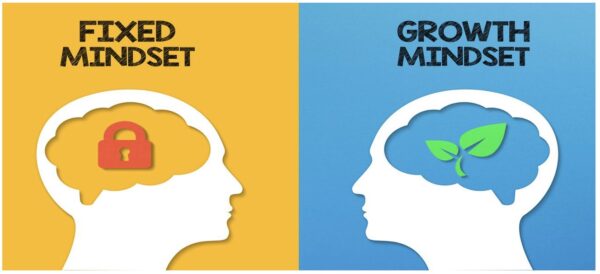
Benefits:
• Increased Learning and Development: Organizations that emphasize a culture of growth and development will experience an increase in their talent’s skills, abilities, and potential. This will encourage team members to strive to reach their full potential, which will have positive effects on engagement, retention, and career advancement.
• Increased Resilience and Grit: Leaders with a growth mindset will demonstrate resilience and grit when encountering adversity. Obstacles are viewed as something that is a temporary problem to be solved rather than a permanent failure. Obstacles to the growth mindset are opportunities for learning and growth.
• Increased Innovation: Like so many of the new skills, a growth mindset will increase innovation because it encourages creativity, experimentation, out-of-the-box thinking, and even some risk-taking within their teams. These characteristics will increase the organization’s innovation and creative problem-solving capabilities.
• Create a Positive Corporate Culture: Culture is vital for an organization’s success. When a company and its leaders embrace a growth mindset, that positive outlook will filter through the entire organization, driving learning and development, creativity, loyalty, engagement, and resilience.
• Increased Adaptability: Organizations and leaders that embrace a growth mindset are more agile and adaptable in times of change. The obstacles that these leaders face in a VUCA environment will be viewed positively as opportunities for growth, not as insurmountable obstacles. A growth mindset is a positive and influential energy that will keep the organization in a positive frame of mind and, thus, able to adapt quickly to maintain a competitive advantage.

Exercise
Micromanagement
Hierarchical Decision-Making
Lack of Emotional Intelligence
Authoritarian Leadership
Resistance to Change
Lack of Collaboration
Fixed Mindset

Case Study: General Electric
General Electric (GE) was founded on April 15, 1892, in Schenectady, NY. In the first part of the 21st century, GE, like most large and established companies, faced significant challenges with the global disruptions of technology, economy, and even industry dynamics. Jeff Immelt, who was the Chief Executive Officer (CEO) at the time, recognized the need to transform its leadership culture to navigate the challenges successfully.
Under Immelt’s leadership, GE implemented a leadership development program called the “GE Leadership Acceleration Program” (LAP). The LAP was designed to develop a new generation of leaders who were equipped with the skills that GE would need to be successful in the new and emerging world.
The Leadership Acceleration Program focused on:
• Adaptive Leadership: GE, in its LAP, intentionally moved its focus away from the traditional leadership and hierarchical approach to one that was adaptive and agile. GE’s leaders were trained to be adaptive, collaborative, and flexible. This leadership approach would enable GE to manage change and navigate VUCA well.
• Coaching and Mentoring: As a part of the LAP, GE implemented a coaching and mentoring program. The goal of coaching and mentoring was to develop all levels of GE’s leadership and to emphasize teaming and the importance of leadership development. In connecting emerging leaders with experienced leaders who served as mentors, GE saw a growth in employee development, engagement, and career growth.
• Continuous Development: GE and its LAP viewed leadership development as an on-going process, not just a few one-day trainings. The goal of the program was to develop leaders into thriving adaptive leaders who could face the challenges and disruptions in the world ahead.
GE’s Leadership Acceleration Program was extremely successful, and the results of the program were substantial. GE saw measurable results in performance, engagement, innovation, and even retention. GE’s focus on new and relevant leadership development has helped the company position itself for long-term success.

Exercise
1. Adaptive vs. Traditional Leadership:
• How did GE’s shift from a traditional, hierarchical leadership model to an adaptive, agile approach better prepare the organization to navigate the challenges of a VUCA environment?
• Consider what specific skills and behaviors were emphasized in the LAP compared to conventional leadership training.
2. The Role of Coaching and Mentoring:
• In what ways did GE’s coaching and mentoring components within the LAP contribute to employee engagement and leadership development?
• Reflect on how pairing emerging leaders with experienced mentors can drive both personal growth and organizational innovation.
3. Continuous Development Over One-Off Training:
• Why is it important for organizations to view leadership development as an ongoing process rather than a one-time training event?
• Discuss the benefits of continuous learning and adaptive development in the context of rapidly evolving business challenges.

Exercise: “Rapid Leadership Evolution”
Participants will quickly design a mini leadership development initiative inspired by GE’s LAP, focusing on adaptive leadership, coaching/mentoring, and continuous learning. This hands-on exercise encourages participants to apply the case study’s principles to a practical scenario in a brief, dynamic format.
1. Individual Brainstorm:
• Ask each participant to quickly jot down one key element from the GE LAP case study that they believe is essential for adaptive leadership (for example, “continuous development,” “coaching and mentoring,” or “adaptive leadership practices”).
• Then, have them write one actionable idea on how they could implement or enhance this element in their own organization. (E.g., “Launch a monthly mentoring roundtable” or “Create a peer coaching program that rotates every quarter.”)
2. Pair Share:
• The feasibility of the idea.
• Potential challenges in implementation.
• Ways to refine the idea based on adaptive leadership principles.
3. Group Synthesis and Sharing:
• Reconvene the entire group.
• Ask for 2–3 volunteers to briefly share their key element and actionable idea with the group.
• Facilitate a quick discussion on how these individual ideas reflect the lessons from GE’s LAP and how they might translate to the participants’ own leadership environments.

Course Manual 4: Understanding Culture
It might seem strange to talk about “understanding culture” in a study on leadership. However, understanding the massive cultural shift in the western world is vital for being successful as an adaptive leader.
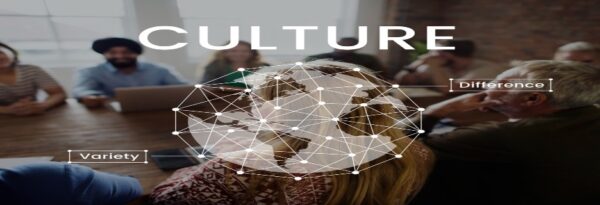
Culture can be defined as “the customs, arts, social institutions, and achievements of a particular nation, people, or other social group.”
Culture, in the broad sense, encompasses the overarching values, norms, and beliefs that define an entire society or organization. It sets the stage for how people communicate, behave, and make decisions on a collective level. Culture shapes people’s perceptions, attitudes, and behaviors, influencing how they think, feel, and act in various contexts, thus shaping their worldview, which is how they interpret the world around them. Within this expansive framework, subcultures emerge—distinct groups that share specialized characteristics and perspectives, often shaped by factors such as age, background, and life experiences. In the workplace, generational subcultures are particularly prominent. For example, while the broader corporate culture might emphasize innovation and teamwork, Baby Boomers, Generation X, Millennials, and Generation Z each bring their own unique attitudes, communication styles, and priorities. Baby Boomers may emphasize loyalty and hierarchical structures, Generation X often values independence and work-life balance, Millennials typically prioritize flexibility and meaningful work, and Generation Z tends to be highly tech-savvy and diversity-focused. Recognizing these generational subcultures is critical for adaptive leadership, as it allows leaders to tailor their approaches to effectively engage each group, leverage their distinct strengths, and foster a cohesive yet dynamic environment where diverse perspectives drive collective success.
Why Is Culture Important?
It is important for organizational leaders to understand how culture is changing if they want to pivot to keep up with cultural changes around them. Let’s now look at six (6) of the reasons why understanding culture is vital.
1. Adapt to Evolving Trends: It is through understanding evolving cultural trends that leaders can adapt their strategies, products, and objectives to remain relevant in a shifting culture and VUCA world. Adapting to evolving trends enables organizations to anticipate changes and drive innovation in various areas, allowing the organization to stay ahead of the competition.
2. Employee Engagement and Retention: Shifts in culture can (and do!) impact employee behaviors, values, and expectations in the workplace. Adaptive leaders who understand these shifts can create a more engaging and appealing work environment that meets the contemporary needs of their employees. This leads to higher levels of job satisfaction, engagement, and retention.
3. Brand Reputation: Leaders who are attuned to changing cultural norms can ensure that their organization’s marketing and messaging endeavors align with the cultural values, norms, and language. Aligning branding with the shifting culture will build trust, credibility, and a positive brand reputation among customers, employees, and stakeholders.
4. Consumer Preferences: Cultural and technological changes influence consumer preferences, behaviors, and decisions. Leaders who understand these changes can tailor their products, services, and marketing strategies to resonate with target audiences, driving customer engagement, loyalty, and revenue growth.
5. Talent Acquisition: Cultural changes impact the expectations and priorities of job seekers, particularly younger generations of millennials and Gen Z. Leaders who understand the shifts in culture generationally can attract those younger generations top talent by offering a work environment that aligns with their cultural values and expectations.
6. Organizational Resilience: Organizations that are adaptable to changing cultural dynamics are better equipped to perceive cultural shifts and challenges ahead of time and navigate those changes successfully. Understanding culture empowers leaders to make strategically informed decisions that strengthen organizational resilience and sustainability.
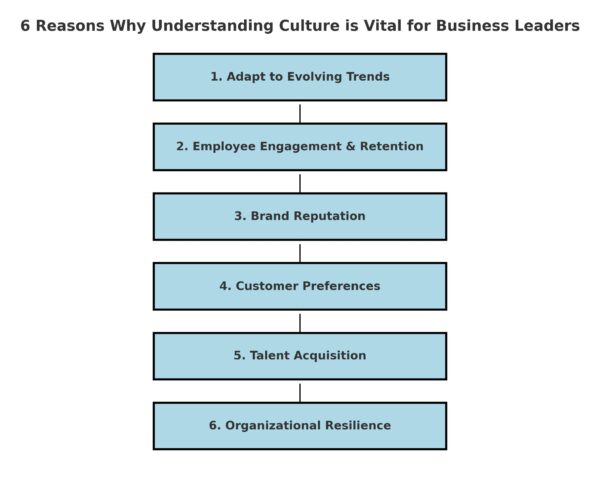
Understanding how culture is changing is essential for organizational leaders to adapt to evolving trends. By staying attuned to cultural shifts, leaders can position their organizations for long-term success in a rapidly changing cultural landscape.

Exercise
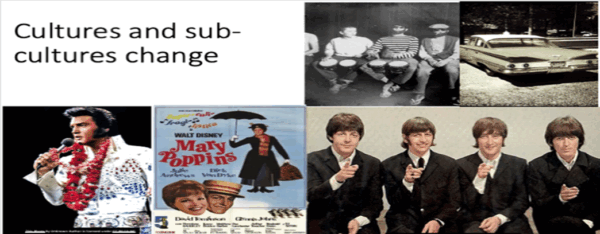
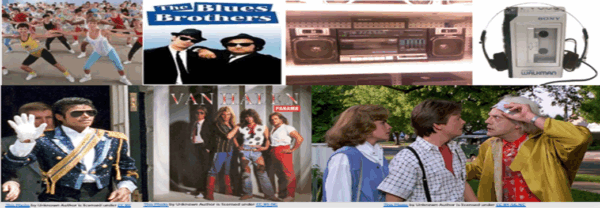
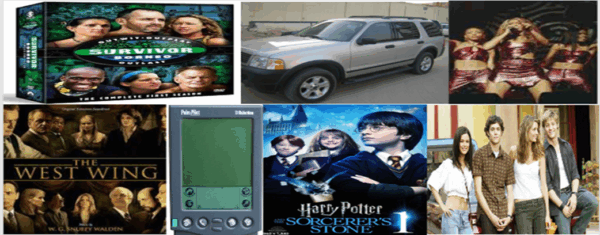
Cultural Intelligence

In today’s globalized world, “culture” extends far beyond the walls of an organization. It encompasses the shared beliefs, values, traditions, and practices that shape the social fabric of communities, nations, and even the global society at large. For leaders, understanding these broad cultural dynamics is not optional—it is essential. Culture influences everything from consumer behavior to technological adoption. Adaptive leadership demands that leaders are not only aware of internal organizational norms but are also attuned to the evolving cultural context in which their stakeholders live and work.
Leaders who understand culture and strive to be culturally intelligent can better anticipate shifts in public preference, align their strategic decisions with social values, and communicate more effectively with diverse communities. Whether it’s responding to emerging trends in workforce behavior, generational trends, consumer preferences, or digital innovation, the ability to interpret and integrate these societal signals into leadership practice can be a key differentiator in today’s volatile, uncertain, complex, and ambiguous (VUCA) environment.
By developing cultural intelligence—an awareness of the broader societal forces at play—leaders can craft more inclusive, innovative, and ethically responsible strategies. They are better positioned to build trust, inspire collaboration, and drive change that resonates not only with employees and customers but also with the wider community. In this way, understanding society’s cultural landscape is a cornerstone of adaptive leadership in the modern era.
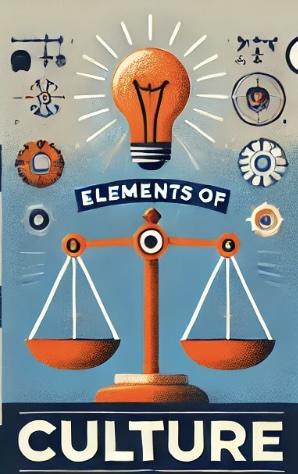 The most important elements of culture to be aware of are:
The most important elements of culture to be aware of are:
1. Values: Values represent the core principles and beliefs that guide individuals’ behavior and decision-making within a culture. They reflect what is considered important, desirable, and worth pursuing by members of the group.
2. Beliefs: Beliefs are the convictions and assumptions held by individuals within a culture about the nature of reality, the meaning of life, and the principles that govern human existence. They shape people’s perceptions, attitudes, and worldviews.
3. Norms: Norms are the unwritten rules and expectations that govern behavior within a culture. They prescribe appropriate ways of acting, speaking, and interacting in various social situations and contexts.
4. Behaviors: Behaviors refer to the actions, gestures, and expressions exhibited by individuals within a culture. They reflect the norms, values, and beliefs of the culture and are influenced by social and environmental factors.
5. Symbols: Symbols are tangible or abstract representations that carry meaning within a culture. They include language, gestures, clothing, art, music, architecture, and other forms of cultural expression that convey shared values, identity, and heritage.
6. Language: Language is a fundamental element of culture that enables communication and expression within a group. It shapes how people perceive and interpret the world, communicate ideas and emotions, and transmit cultural knowledge from one generation to the next.
For instance, a few months ago I was around a 17-year-old. He asked me a question about adaptive leadership, and I answered it.
He responded with one word, “Fire.”
I looked at him and said, “Fire?”
He responded matter-of-factly, “Yep. Fire.”
A few moments later, I turned to his mom and asked, “Is ‘fire’ good or bad?” She laughed and said, “It’s very good.”

Exercise
7. Worldview: Worldview encompasses the collective beliefs, perspectives, and interpretations of reality held by members of a culture. It influences how people understand themselves, others, and the world around them, shaping their attitudes, values, and behaviors.
8. Cultural Practices: Cultural practices encompass the everyday behaviors, activities, and routines that are characteristic of a culture. They include food, clothing, housing, leisure activities, religious rituals, and other aspects of daily life that reflect cultural values and identity.
Overall, culture is a complex and dynamic phenomenon that encompasses multiple interconnected elements, shaping individuals’ identities, interactions, communication, and experiences within a group or society. Understanding these elements is essential for navigating cultural differences, building collaborative environments, and fostering effective communication across diverse cultures and contexts.
Why Cultural Intelligence Matters for Business Leaders Developing Adaptive Leadership Skills
In today’s business landscape, cultural intelligence has emerged as a critical competency for leaders who seek to develop adaptive leadership skills. Adaptive leadership—characterized by flexibility, continuous learning, and the ability to navigate complex challenges—relies heavily on the leader’s capacity to understand and work effectively across diverse cultural and subcultural contexts. Here’s why cultural intelligence matters so much:
1. Navigating a Globalized and Diverse Environment
Modern businesses are increasingly operating on a global scale, with teams, partners, and customers coming from a myriad of cultural backgrounds. Cultural intelligence (CQ) refers to the ability to understand, respect, and effectively interact with people whose cultural norms differ from one’s own. For leaders, this means being able to:
• Interpret Cultural Cues: Recognize and interpret behaviors, communication styles, and decision-making processes that are rooted in different cultural traditions.
• Avoid Miscommunication: Prevent misunderstandings that can arise from different language nuances, nonverbal signals, or social etiquettes, thereby ensuring smoother collaboration.
• Build Inclusive Teams: Create a workplace environment where all employees feel valued and understood, which is essential for driving innovation and retaining top talent.
By understanding the diverse cultural dynamics of their workforce and markets, leaders are better equipped to design strategies that resonate on both local and global levels. This awareness fosters an inclusive environment where diverse perspectives lead to creative problem-solving and robust innovation.
2. Enhancing Communication and Reducing Conflict
Effective communication is at the heart of adaptive leadership. Leaders with high cultural intelligence are adept at adjusting their communication styles to suit different cultural audiences. They understand that what works in one cultural context might not work in another. For instance:
• Tailored Messaging: They can craft messages that align with the values and expectations of different groups, ensuring clarity and mutual understanding.
• Conflict Resolution: When conflicts arise due to cultural misunderstandings, these leaders are better positioned to mediate disputes, identify underlying issues, and forge common ground.
• Trust Building: Transparent, culturally attuned communication builds trust between leaders and their teams, a cornerstone for navigating uncertainty and change.
In a business setting, the ability to communicate effectively across cultures reduces the likelihood of costly miscommunications and helps maintain a cohesive team dynamic even in the face of disruptive changes.
3. Driving Organizational Resilience and Adaptability
Adaptive leadership is about responding effectively to change, ambiguity, and disruption. Cultural intelligence plays a pivotal role in this process by enabling leaders to:
• Anticipate Societal Shifts: Societal norms and values are in constant flux. Leaders who understand these trends can anticipate changes in consumer behavior, regulatory landscapes, and workforce expectations.
• Foster Continuous Learning: Culturally intelligent leaders are committed to lifelong learning—not only of technical skills but also of emerging cultural trends. This approach enables them to pivot quickly in response to market shifts.
• Facilitate Cross-Cultural Collaboration: In global organizations, decisions often involve stakeholders from various cultural backgrounds. Leaders with high CQ can integrate diverse perspectives into their decision-making process, leading to more innovative and resilient strategies.
By embedding cultural intelligence into their leadership approach, leaders create an agile organization that can thrive in volatile, uncertain, complex, and ambiguous (VUCA) environments.
4. Enhancing Strategic Decision-Making
In today’s competitive market, strategic decisions must be informed by both quantitative data and qualitative insights—including cultural insights. Culturally intelligent leaders can:
• Align Strategies with Societal Values: They can identify trends in social behavior and consumer preferences, ensuring that the organization’s products, services, and messaging are culturally relevant.
• Tailor Global Strategies Locally: With an understanding of regional cultural differences, leaders can adapt global strategies to meet local market needs without diluting the brand’s core values.
• Leverage Diversity for Innovation: Diversity in thought and perspective often leads to breakthrough innovations. Leaders who recognize and harness the value of cultural diversity are better positioned to solve complex problems and seize new opportunities.
Incorporating cultural intelligence into strategic planning enhances the organization’s ability to navigate cross-cultural challenges and capitalize on global opportunities.
5. Fostering Trust and Employee Engagement
Trust is a foundational element of adaptive leadership. Leaders who demonstrate cultural sensitivity and competence are more likely to build strong, trusting relationships with their teams. This trust translates into:
• Greater Employee Engagement: When employees feel understood and respected, they are more likely to be committed and proactive in their roles.
• Stronger Team Cohesion: A culturally inclusive environment encourages collaboration, where every team member is empowered to contribute ideas and perspectives.
• Enhanced Organizational Loyalty: Trusting, culturally intelligent leadership fosters a sense of belonging and loyalty, which is critical for maintaining morale during periods of rapid change.
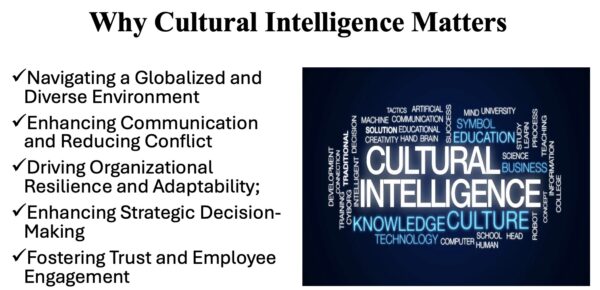
As organizations face increasingly complex challenges, leaders who can cultivate trust through cultural intelligence are better equipped to inspire, motivate, and guide their teams through uncertainty.
Cultural intelligence is not just a “nice-to-have” skill—it is essential for any business leader striving to develop adaptive leadership capabilities. It enables leaders to navigate a globally diverse environment, communicate effectively across cultural boundaries, drive resilience and innovation, make strategic decisions that are culturally relevant, and foster a collaborative and engaged workforce.
As markets become more interconnected and societal values continue to evolve, the ability to understand and integrate cultural insights into leadership practices will be a defining characteristic of successful, forward-thinking organizations. Leaders who invest in developing their cultural intelligence will not only be better prepared to face the challenges of today’s dynamic business world but will also set the stage for sustained success in an ever-changing future.
Let us examine cultural intelligence in its broadest context through a case study on Marriott International.

Case Study: Marriott International—Cultivating a Global Mindset
Marriott International, one of the world’s largest and most successful hospitality companies, operates in over 130 countries and serves a diverse global clientele. Recognizing early on that effective leadership in a global marketplace demands more than traditional management skills, Marriott invested heavily in developing the cultural intelligence of its leaders. The company understood that to provide exceptional guest experiences, foster innovation, and drive long-term growth, its leaders needed a deep understanding of diverse cultural norms, values, and communication styles.
 Developing Cultural Intelligence
Developing Cultural Intelligence
Global Leadership Training Programs:
Marriott implemented a comprehensive Global Leadership Development Program that integrated cultural intelligence as a core component. Leaders participated in immersive training sessions that included:
• Cross-Cultural Communication Workshops: These sessions focused on practical communication techniques, emphasizing the importance of listening actively and adapting messages to suit diverse audiences.
• Cultural Immersion Experiences: Marriott organized international assignments, virtual exchanges, and regional tours to expose leaders to different cultural environments. This allowed them to experience firsthand how local customs, business practices, and social norms influence guest expectations and employee behavior.
• Language and Etiquette Training: Recognizing that language and nonverbal cues are vital in building rapport, Marriott offered language classes and etiquette training tailored to the regions where the company operates.
• Scenario-Based Learning: Leaders engaged in role-playing exercises and simulations designed to mimic real-life interactions with international guests and colleagues. These activities helped them navigate cultural misunderstandings, manage conflicts, and develop empathy.
Embedding Cultural Intelligence in Daily Operations:
Marriott’s approach went beyond isolated training events. The company integrated cultural intelligence into its leadership practices by:
• Encouraging Local Adaptation: While maintaining core brand values, Marriott empowered regional managers to adapt policies and service practices to meet local cultural expectations.
• Promoting Inclusive Decision-Making: Leaders were trained to seek diverse perspectives and incorporate input from multicultural teams into strategic decisions.
• Fostering a Global Network: By connecting leaders across regions through regular virtual meetings and knowledge-sharing platforms, Marriott built a community where cross-cultural insights were exchanged routinely.
Outcomes
Marriott’s investment in cultural intelligence has yielded substantial benefits:
• Enhanced Guest Satisfaction: By understanding and respecting local cultures, Marriott has consistently delivered tailored guest experiences that build loyalty and positive word-of-mouth.
• Stronger Employee Engagement: Leaders who demonstrate cultural sensitivity foster an inclusive workplace, resulting in higher employee morale and lower turnover.
• Innovative Problem Solving: Exposure to diverse perspectives has empowered Marriott leaders to devise creative solutions that address both local challenges and global opportunities.
• Sustainable Global Growth: With culturally intelligent leadership at its helm, Marriott has successfully navigated market disruptions and maintained a competitive edge in the global hospitality industry.

Exercise
1. Leveraging Cultural Insights:
• What specific elements of Marriott’s approach (e.g., cultural immersion, cross-cultural workshops) do you think were most effective in building global leadership capabilities?
2. Challenges in Developing Cultural Intelligence:
• What challenges might an organization face when attempting to embed cultural intelligence into its leadership development programs?
3. Application in Your Context:
• Reflect on your own organization or leadership experience. In what ways could cultural intelligence improve decision-making and collaboration?
• What are some actionable steps you could take to develop your own cultural intelligence, drawing inspiration from Marriott’s initiatives?
Individual Reflection:
• Instruct each participant to write down one key aspect of Marriott’s cultural intelligence training that resonated with them (for example, “cultural immersion experiences” or “cross-cultural communication workshops”).
• Then, have them write one actionable step they can take in their own leadership practice to enhance cultural intelligence (for instance, “organize a cultural exchange session with team members from diverse backgrounds” or “attend a workshop on cross-cultural negotiation skills”).
• Have each participant share with the entire group.
Culture is constantly evolving, and several culture shifts are impacting organizations today. Here are 7 cultural shifts.
1. Digital Transformation: The rise of technology and digital communication has transformed workplace culture. Remote work, virtual collaboration tools, and flexible work arrangements have become more prevalent, changing the way teams interact and collaborate. Technological advancements such as artificial intelligence, automation, and machine learning are reshaping organizational culture by altering job roles, skill requirements, and work processes. Organizations must adapt to these changes to remain competitive and innovative.
2. Changing Workforce Demographics: The workforce is becoming more diverse, with multiple generations, cultural backgrounds, and skill sets working side by side. This diversity brings new perspectives and challenges to organizational culture, requiring leaders to foster an inclusive and collaborative environment.
3. Shift in Employee Expectations: Employees today have different expectations from their employers, valuing flexibility, work-life balance, and opportunities for growth and development. Organizations need to adapt their policies and practices to meet these evolving expectations and attract top talent.
4. Focus on Employee Well-Being: There is a growing recognition of the importance of employee well-being in organizational culture. Companies are prioritizing initiatives to support mental health, work-life balance, and overall employee wellness to foster a healthier and more productive workforce.
5. Emphasis on Purpose and Values: Employees are increasingly seeking meaning and purpose in their work, aligning with organizations that share their values and contribute to positive social and environmental impact. Companies are integrating purpose-driven initiatives into their culture to attract and retain talent and build brand loyalty.
6. Agile and Adaptive Work Environments: Organizations are adopting agile and adaptive work practices to respond to changing market conditions and customer needs more quickly. This requires a culture that values flexibility, experimentation, and continuous improvement, enabling teams to adapt and innovate in fast-paced environments.
7. Embrace of Learning and Development: Continuous learning and development are becoming integral to organizational culture as companies recognize the importance of upskilling and reskilling employees to stay competitive in a rapidly changing landscape. Organizations are investing in learning initiatives and creating cultures that support ongoing growth and development.
Organizations must understand cultural shifts and adapt to these changes by fostering inclusive, agile, and purpose-driven cultures that support employee well-being, innovation, and continuous learning. By embracing these changes, organizations can position themselves for long-term success in an increasingly dynamic and complex business environment.

Case Study: Airbnb
Another real-life case study of an organization that understood the changing nature of culture and adapted to be successful is Airbnb.
Founded in 2008, Airbnb disrupted the traditional hospitality industry by providing a platform for individuals to rent out their homes or spare rooms to travelers. As Airbnb grew rapidly, it recognized the importance of understanding changing cultural dynamics and adapting its business model to meet evolving consumer preferences.
Here are some ways Airbnb adapted to the changing nature of culture to achieve success:
1. Embracing the Sharing Economy: Airbnb tapped into the growing trend of collaborative consumption and the sharing economy, where individuals value access over ownership. By offering unique and authentic travel experiences, Airbnb appealed to a generation of travelers seeking more personalized and immersive experiences.
2. Cultural Sensitivity and Localization: Airbnb understood the importance of cultural sensitivity and localization in its global expansion efforts. The company invested in understanding the cultural nuances, preferences, and norms of different markets to tailor its offerings and marketing strategies accordingly. This approach enabled Airbnb to build trust with local communities and establish a strong presence in diverse markets around the world.
3. Adapting to Changing Travel Trends: Airbnb recognized the shifting preferences of travelers, particularly millennials and Gen Z, who value authentic, unique, and socially responsible travel experiences. The company expanded its offerings beyond traditional vacation rentals to include experiences, adventures, and sustainable travel options. This diversification allowed Airbnb to meet the changing needs and expectations of its user base, driving growth and customer loyalty.
4. Responding to the COVID-19 Pandemic: During the COVID-19 pandemic, Airbnb faced unprecedented challenges as travel restrictions and safety concerns impacted the tourism industry. The company quickly adapted its business model by promoting domestic travel, prioritizing health and safety measures, and introducing flexible cancellation policies. Airbnb also launched new initiatives, such as Online Experiences, to provide virtual travel experiences for users unable to travel in person. These efforts helped Airbnb navigate the crisis and emerge stronger, demonstrating its resilience and adaptability in the face of adversity.
Overall, Airbnb’s success can be attributed in part to its ability to understand and adapt to the changing nature of culture, consumer preferences, and market trends. By embracing innovative and adaptive practices, Airbnb has established itself as a leading player in the travel and hospitality industry, demonstrating the power of cultural intelligence and adaptation in driving organizational success.

Exercise
• How did Airbnb’s focus on the sharing economy contribute to its ability to connect with modern travelers? Consider how the shift from ownership to access reflects broader cultural trends and what this might mean for industries facing similar disruptions.
• How did Airbnb’s rapid adaptation during the COVID-19 pandemic—through flexible policies and new digital offerings—illustrate the importance of cultural intelligence in crisis response?
• Reflect on what lessons can be drawn from Airbnb’s pivot in response to changing consumer behavior and global circumstances and how these lessons might be applied in your own organization.
• From your groups answer to the last discussion question, write down one key strategy Airbnb used to adapt to cultural changes (for example, “tailored offerings through cultural localization” or “launching digital experiences during COVID-19”).
• Then, write one actionable idea on how you could apply a similar strategy within your own organization. This might be something like “develop a localized marketing initiative” or “create a flexible digital service offering to respond to customer needs.”

Course Manual 5: Organizational Shift
Now that we’ve learned a little about the role of culture and its impact on organizations, we must now shift to understanding two of the pertinent macro shifts that are currently taking place as a response to changing culture. The first shift, and that which we will examine in this module, is a shift in organizational structure.

Exercise
2 Places.
1. Military
The modern military structure is primarily constructed with officers and soldiers. Each group has its own rank and class system, resulting in various layers of leadership. The organizational leadership structure of the past was obviously heavily influenced by the structure and layers of leadership from the military.
2. Industrial Revolution
The Industrial Revolution is the transition from a largely agrarian and artisan society where craftsmen created goods by hand to using machines and mass production. The Industrial Revolution is generally thought to begin around 1764, when James Hargreaves conceived the idea for a yarn-spinning machine he called the spinning Jenny. Later, James Watts developed the steam engine. With those inventions, the Industrial Revolution was up and running.

Let’s look at a hypothetical case story to give us insight into the shift that the then-cutting-edge technology required for organizations to be successful and the resulting organizational shift that occurred.
Ford Motor—Hypothetical Case Story:
Imagine with me that you are 25 years old, and the year is 1914. The world is moving from an agrarian and artisan society to one of industrialization. In the old artisan model, if you made shoes, you made them by hand, one at a time. If you made horseshoes, you made them one at a time. Now the world has entered the Industrial Revolution, and everything is changing. You decide to take a job at a factory called Ford. You are excited because you are working in a factory (which the world hadn’t seen before), building a car (which most of the world hadn’t seen before), and you are doing it on an assembly line (which the world hadn’t seen before). Remember, the assembly line was invented by Ford just a year earlier, in 1913.
Let’s say your job is to stand in a certain place and put on the left front tire and attach all the necessary bolts and brake system. That is all you do: put on the front left tire, attach and tighten all the bolts, and hook up the brakes. After a certain amount of time passes, the Model T moves down the line, and another car is stationed in front of you. You now have another car to put on the front left tire and go through the same process. Let’s say for simplicity (pre-labor laws in 1938) that you are standing in your place installing front left tires for 8 hours a day, 6 days a week.
Perhaps for the first few weeks you manage to stay relatively excited because you have a job and are getting a steady income. But after a few weeks, the routine and monotony begin to get to you. So naturally, you might have times where your mind isn’t totally focused, and you don’t get all the nuts and bolts anchored down like they need to be, but the assembly line moves the car forward anyway. Feeling the weight of the monotony, you pass the time talking to the people that are putting on the left rear tire, right front tire, and right back tire. As you talk and your friends talk, there are times when each of you doesn’t get their job done correctly. So, there are times when you yell to ask to have the assembly line slow down so you and your friends can get all the necessary bolts in place.
Now, at the end of the day, let’s say that Mr. Ford comes to inspect the day’s output of Model T cars. His goal was to have 250 cars produced at the end of the day; however, he finds that there are only 205 cars. And after further inspection, Mr. Ford discovers that 41 of those cars (20%) are not assembled properly and need to be fixed.
So, the problems Mr. Ford encounters are that production is down, and quality isn’t up to par. So, what would Mr. Ford do to solve this problem?
Well, to solve the problem of quantity and quality, Mr. Ford (likely drawing on his knowledge of military structure) would create a position called Supervisor to watch over employees to make sure that they are on task to produce 250 cars per day and that the quality of each car is up to standard. Then he might create more supervisory positions to watch over the supervisors and then managers to watch over those supervisors… and before you know it, an entire hierarchical system of middle management is created.
When you understand the Industrial Revolution and its challenges, you can see how and why organizational structures developed the way they did.
They were characterized by hierarchical structures, centralized decision-making, rigid processes, and very limited information flow. It was a system built on hierarchy and command-and-control.
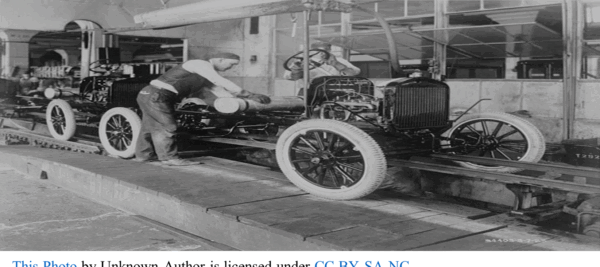
Sound familiar?
Now, since the late 90s and into the 21st century, what are organizations getting rid of?
Middle Management. Hierarchical structures. Rigid processes. Limited communication.
What are they transitioning to?
Modern organizational structures are characterized by flatter hierarchical structures, team-based, adaptable, and innovative; processes are flexible and agile; and communication is open, transparent, and consistent.
Here is a principle: New technologies and changing cultures require new organizational structures and paradigms to support them.

Exercise
The Evolution of Organizational Structures: Moving Beyond Command-and-Control Hierarchies
In recent decades, there has been a notable shift in organizational structures away from the traditional model of command-and-control hierarchies towards more flexible, decentralized approaches. This evolution is driven by a variety of factors, including technological advancements, globalization, and changing workforce expectations. Traditional hierarchies, characterized by rigid chains of command and centralized decision-making, often struggled to respond swiftly to rapid market changes and complex challenges. In contrast, modern organizations are increasingly adopting flatter structures that empower teams and individuals at all levels to make decisions and contribute ideas.
Digital transformation has played a crucial role in this shift, as tools such as cloud computing, collaborative platforms, and real-time communication systems enable seamless connectivity across geographically dispersed teams. These technologies foster an environment where decentralized decision-making is not only possible but also highly efficient. Moreover, globalization has compelled organizations to be more adaptable, requiring local teams to tailor strategies that align with regional cultures and market dynamics while still upholding a unified corporate vision.
This move towards decentralized, agile structures also reflect a broader cultural change within the workforce, where Millennials and Generation Z demand more autonomy, transparency, and opportunities for creative input. As a result, adaptive leadership is emerging as a vital capability, enabling organizations to leverage the collective intelligence of their diverse teams and respond dynamically to an ever-changing business landscape.
The following portion of our study will explore the factors driving this evolution, examine the characteristics of new organizational structures, and discuss the implications for businesses in the 21st century.
Understanding Traditional Organizational Structures
Historically, like in our fictitious case story about Ford Motor Corp., organizations have been characterized by rigid hierarchical systems where power and authority flow from the top of the organizational chart down through various levels of management and then on to the front-line employee. In this command-and-control model, decision-making is centralized, communication is formalized, and employees are expected to follow orders without question. While this structure may have been effective in the past industrial revolution environment, it is increasingly being exposed as being outdated and ill-suited to the complexities of the modern business environment.
Factors Driving Change
Several factors have contributed to the shift away from traditional organizational structures. One significant driver is the rapid pace of technological innovation, which has enabled greater connectivity and collaboration across geographical boundaries. Think about all of the changes technologically in the last 20 years or so, from high-speed internet and cloud computing to mobile technology and artificial intelligence. These innovations have redefined how information is shared, and decisions are made, pushing organizations to adopt more agile and responsive structures.
Another significant factor is the rise of digital platforms and communication tools. These tools have empowered employees to work remotely, share information in real-time, and collaborate on projects regardless of their location. This digital transformation has led to flatter hierarchies and more decentralized decision-making processes, as teams are no longer tethered to a single physical location.
Globalization is also playing a key role in reshaping organizational structures. As businesses expand into new markets and cultures, they must adapt to diverse regulatory environments, customer preferences, and workforce demographics. This requires a more flexible and decentralized approach to decision-making, where local teams have the autonomy to respond to specific market conditions while still aligning with the overall corporate strategy.
Moreover, changing employee expectations have prompted organizations to reevaluate their structures and processes. Millennials and Generation Z, who now comprise the largest segment of the workforce, prioritize work-life balance, purpose-driven work, and opportunities for continuous learning and development. Traditional hierarchical structures often fail to meet these expectations, leading to disengagement and turnover among younger employees. To remain competitive, companies must create adaptive environments that not only leverage technological advancements and global connectivity but also foster innovation, collaboration, and a culture of empowerment. These shifts are not just operational changes; they represent a fundamental evolution in how organizations align with the values and aspirations of today’s workforce, paving the way for sustainable growth and long-term success.
Characteristics of New Organizational Structures
The emergence of new organizational structures is characterized by several key features:
1. Flattened Hierarchies: Unlike traditional top-down structures, modern organizations often have flattened hierarchies where decision-making authority is distributed more evenly across levels. This allows for greater agility and responsiveness to changing market conditions. Terms like flat and flatter are often used.

2. Decentralized Decision-Making: New organizational structures emphasize decentralized decision-making, where authority is delegated to individual teams or units. This empowered approach enables faster decision-making and encourages innovation and creativity. It helps team members feel a sense of ownership over the decisions and allows for greater transparency and accountability.
3. Emphasis on Collaboration: Collaboration is essential in the new work environment. Collaboration is prioritized over competition, with cross-functional teams working together to achieve common goals. This fosters a culture of teamwork, mutual support, and open communication. In this collective environment, individuals are encouraged to share knowledge and expertise. Thus, collaborative teams can be much more innovative, transparent in communication, and achieve synergy.
4. Focus on Empowerment: Empowering employees is central to new organizational structures. Employees want to be empowered to make decisions and solve problems in autonomous teams while having leaders provide support and guidance rather than the traditional command-and-control approach. Empowerment encourages higher levels of engagement, accountability, ownership, and results orientation.
5. Agile Processes: Agile methodologies, borrowed from software development, are increasingly being adopted by organizations in other sectors. These iterative, incremental approaches to project management enable teams to respond quickly to feedback and adapt to changing requirements.
Implications for Organizations
The shift towards new organizational structures has significant implications for businesses in the 21st century. Organizations are looking for structures whereby they can experience:
1. Increased Agility: Flatter hierarchies and decentralized decision-making allow organizations to respond more quickly to market changes and customer needs. This agility is essential in an era of rapid technological disruption and intense global competition.
2. Enhanced Innovation: By fostering collaboration and empowering employees, modern organizational structures promote innovation and creativity. This enables businesses to stay ahead of the curve and develop new products and services that meet evolving customer demands.
3. Improved Employee Engagement: Empowered employees who feel valued and supported are more likely to be engaged and motivated in their work. This leads to higher levels of productivity, lower turnover rates, and a stronger employer brand.
4. Better Adaptability: New organizational structures are better equipped to adapt to uncertainty and complexity, whether it’s due to economic fluctuations, regulatory changes, or unforeseen events such as pandemics. This resilience is critical for long-term survival and growth.
5. Enhanced Customer Experience: By breaking down silos and fostering collaboration, modern organizations are better positioned to deliver seamless, personalized experiences to customers. This leads to higher levels of satisfaction and loyalty, driving business success.
Other organizations, like Zappos.com, have instituted a system of corporate leadership called holacracy. While I am not advocating one organizational structure over another, it is necessary to be aware of potential organizational shifts and how organizations are evolving in order to meet current organizational needs.
Holacracy is a system of corporate governance whereby members of a team or business form distinct, autonomous, yet symbiotic, teams to accomplish tasks and company goals. The concept of a corporate hierarchy is discarded in favor of a fluid organizational structure where employees can make key decisions within their own area of authority.


Case Study
Case Study: Zappos, an online shoe and clothing retailer, implemented a self-management system known as Holacracy to address organizational dysfunctions and increase agility. This approach aimed to distribute authority and decision-making across the organization, reducing bureaucracy and empowering employees to take ownership of their work.
 Strategy: Zappos provided extensive training and support for employees transitioning to the Holacracy model, focusing on skills such as self-organization, conflict resolution, and decision-making. By promoting autonomy, accountability, and transparency, Zappos was able to improve team dynamics, increase employee engagement, and drive innovation.
Strategy: Zappos provided extensive training and support for employees transitioning to the Holacracy model, focusing on skills such as self-organization, conflict resolution, and decision-making. By promoting autonomy, accountability, and transparency, Zappos was able to improve team dynamics, increase employee engagement, and drive innovation.
1. Leadership Commitment and Support: Zappos’ leadership, including CEO Tony Hsieh, fully committed to the adoption of holacracy and provided clear support for the initiative. Hsieh believed in the potential of holacracy to empower employees, foster autonomy, and drive innovation, and he championed the transition despite potential challenges and resistance.
2. Employee Education and Training: Zappos invested in educating and training employees about the principles and practices of holacracy. The company provided workshops, seminars, and resources to help employees understand the new organizational structure, roles, and decision-making processes associated with holacracy. This education helped prepare employees for the transition and ensured a shared understanding of holacracy’s goals and expectations.
3. Pilot Implementation and Iterative Rollout: Zappos initially piloted holacracy in specific teams or departments before gradually rolling it out across the entire organization. This phased approach allowed Zappos to test and refine holacracy’s implementation, identify areas for improvement, and address challenges before scaling it company-wide. It also provided employees with the opportunity to learn and adapt to holacracy in a controlled environment before fully embracing it.
4. Clear Governance Structure and Processes: Zappos established clear governance structures and processes to support holacracy’s implementation. This included defining roles, accountabilities, and decision-making authority within circles (self-organizing teams) and implementing regular governance meetings to facilitate alignment, transparency, and accountability. These structures and processes provided a framework for effective collaboration and decision-making within the holacratic system.
5. Continuous Feedback and Adaptation: Zappos encouraged a culture of continuous feedback and adaptation throughout the holacracy implementation process. The company solicited input from employees at all levels, listened to their concerns and suggestions, and iterated on holacracy’s design and implementation based on feedback received. This iterative approach allowed Zappos to address organizational challenges and refine holacracy to better meet the needs of its employees and business objectives.

Exercise
• In what ways did Zappos’ emphasis on training and a pilot implementation approach help ease the transition to a self-management system?
• Discuss how a phased rollout and continuous feedback might mitigate challenges in adopting new governance models in your own context.
• How did establishing clear governance structures and processes—such as defined roles within circles and regular governance meetings—contribute to the overall effectiveness of Holacracy at Zappos?
• Reflect on the importance of clarity and accountability in empowering employees and fostering an agile, adaptive culture.
The Scenario (1 minute):
Each group will design a self-managed “circle” to address this challenge, drawing inspiration from Zappos’ Holacracy practices.
• Roles & Responsibilities: What specific roles are needed (e.g., customer liaison, process coordinator, innovation catalyst), and what responsibilities will each role have?
• Decision-Making Process: How will decisions be made within the circle? Will you use consensus, majority vote, or a structured facilitation method?
• Communication & Feedback: What mechanisms will the circle use to ensure transparency and continuous feedback? (e.g., regular check-in meetings, digital collaboration tools)
• Conflict Resolution: How will disagreements be handled to maintain the circle’s cohesion?

Course Manual 6: Worldview Shift
Another one of the meta-shifts the 20th century witnessed, and our second shift that we will examine, is the massive shift in worldview: from modern to post-modern.
The world, as we have discussed, is undergoing a profound transformation, marked by the emergence of postmodernism as a dominant cultural paradigm or worldview. A person’s worldview paints how they see and interpret the world around them. It frames their values, likes and dislikes, and even how they view work and vocation. The current postmodern worldview is reshaping various aspects of society, including work and leadership.
The issue currently is that the worldview of differing generations is not just a little different like in times past. The worldview gap between older generations and younger ones is vast. There is a night-and-day difference between two coexisting yet competing worldviews. Many people would describe the older worldview in terms of “modern,” while the newer one carries the term “postmodern.”
In this section, we will explore the current worldview shift from modernity to postmodernism and its implications for the future of work and leadership in the 21st century.

Exercise
Answer: The Enlightenment (or Age of Reason) in the 17th and 18th centuries.
I know it’s hard to believe, but all the other shifts and changes in culture were all within the same basic worldview. That worldview stemmed from the Enlightenment Movement.
Let’s look at what is called the modern worldview.
The Modern Era:
The modern worldview emerged from the 17th and 18th century Enlightenment movement. Emerging from the Scientific Revolution of the 16th and 17th centuries, thinkers like Newton, Galileo, and Copernicus challenged traditional beliefs in favor of empirical observation and scientific processes. The Enlightenment Movement was also called the Age of Reason because of the shift to science, reason, and empirical evidence. It celebrated the belief that through rational thinking, humanity could unlock the mysteries of the universe and usher in a new era of progress and development for humankind. The Age of Reason was a definitive shift away from the religious dogma and spiritual worldview that dominated the Dark Ages.

The Age of Reason marked a profound transition in intellectual, social, religious, cultural, and social paradigms, which provided the foundation for the modern worldview. This “new” worldview emphasized meta-narratives, objective reality, universal truths, logic, and critical thinking. Modernity was characterized by industrialization, scientific and technological advancements, and a belief that progress is linear.
However, modernity as a worldview began to falter in the 20th century. The horror and aftermath of two world wars, ethical dilemmas created by scientific and technological expansions, and humanitarian crises prompted people to doubt the meta-narrative of linear progress through reason.
With the doubt of modernism’s efficacy, a new worldview began to arise.
Post-Modernism:

Postmodernism, like all competing worldviews, developed as a reaction to the perceived failures of the previous worldview, in this case, modernism. Postmodernism emerged in the mid-20th century as a critical response to the certainties and grand narratives of modernism and Enlightenment rationality. Rooted in the works of thinkers such as Jean-François Lyotard, Jacques Derrida, and Michel Foucault, postmodernism challenged the idea of a single, universal truth by emphasizing plurality, fragmentation, and the contextual nature of knowledge. It questioned established norms and ideologies, arguing that reality is constructed through language, culture, and power dynamics, not rationality.
As a worldview, postmodernism has significantly influenced social theory by promoting diversity, ambiguity, and a skepticism toward objective standards. This perspective has also reshaped approaches to work and leadership, leading to more flexible, decentralized, and inclusive models that value individual creativity and cultural specificity over rigid hierarchies and uniform processes. Today, postmodernism continues to impact how younger generations understand identity, truth, and progress, encouraging a dynamic and critical engagement with the complexities of the modern world.
Postmodernism in Contemporary Society
In contemporary society, postmodernism has permeated numerous domains, including art, literature, philosophy, and politics, reshaping how we understand and engage with the world. Cultural artifacts—ranging from experimental films and abstract paintings to fragmented narratives in literature—reflect a deconstructed reality where meaning is fluid, unstable, and continuously renegotiated. This perspective challenges the traditional belief in fixed interpretations, embracing ambiguity and the idea that context determines meaning. Postmodernists celebrate diversity and difference, arguing that there is no single, universal human experience. Instead, they advocate for recognizing the plurality of identities, narratives, and experiences that make up our social fabric. This approach has fostered greater tolerance for multiple viewpoints and a critical stance toward dominant ideologies. Ultimately, postmodernism invites us to question established norms and appreciate the complexity of human experience, encouraging a dynamic, inclusive, and ever-evolving cultural dialogue.
Let’s look at five of the major characteristics of postmodernism.
5 Major Postmodern Characteristics:
1. Relativism: Relativism within postmodernism is a concept that rejects the idea of absolute truth. Truth and reality are contingent upon an individual’s perspective, and that individual’s perspective is influenced by social, cultural, and personal factors. This means that what is considered “true” can be varied based on individual perspectives, values, beliefs, social contexts, and backgrounds.
2. Pluralism: Pluralism is the belief in the multiplicity of truths, values, and perspectives. Even though perspectives may be vastly different or even competing, within postmodern philosophy, they are able to coexist.
3. Deconstruction: Deconstructionism within postmodernism is a critical approach to challenge and deconstruct established norms, hierarchies, and structures of power. It challenges the dominant meta-narratives that shaped modernity. Deconstruction emphasizes the complex nature of communication with the multiplicity of interpretations.
4. Skepticism of meta-narratives: The postmodern worldview is skeptical of metanarratives, or overarching ideologies, that claim to offer a singular explanation. A postmodern thinker will reject any broad, all-encompassing narrative of reality.
5. Discontinuity: Modernism believes in the coherence and stability of structures and laws of governance. In contrast, the postmodern view is one of discontinuity and continual change.
Now that we’ve looked a little at this massive shift in worldview and now understand some of the foundational conflict between generational worldviews, let’s look at how the postmodern worldview impacts work, leadership, and the future.
Postmodernism and Work:
The influence of postmodernism on work is multifaceted. Postmodernism has impacted the structure of the workplace. Traditional hierarchies are often flattened, and authority structures are questioned. Employees are encouraged to express their individuality and creativity, leading to more fluid and agile organizational structures. Interestingly, postmodernism has facilitated the interest in and rise of the gig economy. This is primarily because workers today prioritize autonomy, selectivity, and flexibility over stability and long-term employment. This shift reflects a rejection of the modernist ideal of a long-term and linear career trajectory. The postmodern worldview is in favor of a more fragmented and diverse approach to work and career.
The postmodern worldview in the workplace also presents challenges. The emphasis on subjectivity and ambiguity can lead to difficulties in decision-making and consensus-building. Moreover, the erosion of traditional norms and values may result in a lack of shared purpose or direction within organizations. Leaders must navigate these complexities by fostering inclusivity, embracing differences, and cultivating a culture of adaptability and resilience.
Postmodernism and Leadership:
The concept of leadership has also been redefined in the postmodern era. Traditional notions of leadership, characterized by top-down authority and hierarchical control, are giving way to more inclusive and participatory models. Postmodern leaders are facilitators rather than commanders, empowering others to contribute their unique perspectives and talents.
Furthermore, postmodern leadership emphasizes emotional intelligence, empathy, and relational skills. Leaders are expected to navigate the complexities of human relationships and understand the diverse needs, emotions, and motivations of their team members. This requires a willingness to listen, learn, and adapt to changing circumstances rather than relying on fixed principles or formulas.
Postmodern leadership is not without its challenges. The rejection of grand narratives and objective truth can create a sense of moral relativism, where ethical standards become subjective and situational. Leaders must navigate this moral ambiguity by grounding their decisions in principles of fairness, justice, and respect for human dignity.

The Future of Work and Leadership:
As we look to the future, the influence of postmodernism on work and leadership is likely to continue and evolve. Rapid technological advancements, demographic shifts, and globalization will further disrupt traditional models of work and require leaders to adapt to an increasingly diverse and complex environment.
In this context, successful organizations will be those that understand and are willing to adapt to the principles of postmodernism, fostering creativity, innovation, and collaboration. Leaders will need to cultivate a culture of continuous learning and experimentation where failure is viewed as an opportunity for growth rather than a mark of incompetence.
Moreover, the future of work will be characterized by increased flexibility and decentralization, with individuals and teams working across geographical boundaries and organizational structures. This will require leaders to develop new skills in virtual communication, cross-cultural understanding, and conflict resolution.
Let’s now turn our attention to the five characteristics of postmodernism and look at their impact on leadership.
The 5 Major Characteristics and Their Impact on Leadership:
1. Relativism: Successful leaders will understand that some people’s perspectives will suggest that truth is not absolute but rather relative. Recognizing that relativism is a major philosophy of younger generations should motivate those in leadership to identify, acknowledge, and respect the value of other thoughts, opinions, and beliefs even if they don’t understand or agree with them. This can be applied in leadership activities like:
• Inclusive Decision-Making: Understanding this characteristic will enable organizational leaders to acknowledge and honor various perspectives and include those perspectives either directly or indirectly in the decision-making process.
• Fostering Cultural and Ethical Intelligence: Understanding the relativistic nature of the postmodern worldview will help ensure that decisions are contextually appropriate. It will also foster an environment where various cultural and ethical perspectives are respected.
2. Pluralism: Understanding pluralism will enable those in leadership positions to both recognize and promote diversity within their teams and organizations. Organizational leaders will be able to harness the power of differences to move the organization forward. The impact of pluralism on organizational leaders can be applied to:
• Leveraging Diverse Teams: Organizational leaders who understand the power of pluralism and the role that differences have in creative problem solving and innovative decision-making will encourage the formation of diverse teams to leverage differing skills, experiences, and perspectives.
• Creating Collaborative Culture: Having grasped an understanding of pluralism, leaders will want to foster a collaborative culture where all voices are heard and valued. Diversity and collaboration are vital in modern organizations and will lead to more creative and innovative solutions.
3. Deconstruction: Understanding deconstruction will enable adaptive leaders to embrace the complexities and contradictions inherent in various organizational and social constructs. The impact of deconstruction can be applied organizationally through:
• Encouraging Critical Thinking: Organizational leaders will encourage leaders and employees to critically examine assumptions, existing methodologies, and narratives within the organization. This will promote a culture of empowerment, strategic thinking, ownership, and continuous improvement.
• Developing Adaptive Strategies: Organizational leaders will develop agile and adaptive strategies based off of principles that can be deconstructed and reassembled to respond to changing changes within a VUCA environment.
• Embracing Innovative Practices: Leaders who comprehend deconstructionism will solicit and embrace innovative approaches through challenging and deconstructing traditional business models and investigating and exploring new ways of thinking and operating.
4. Skepticism of Meta-Narratives: Postmodern thinkers are skeptical of broad, sweeping meta-narratives. Instead, they value localized and diverse narratives. Localized context matters to postmodern thinkers and will have a significant impact on organizations. Therefore, leaders should embrace this skepticism through:
• Empowered Decision-Making: Leaders will want to empower local teams to make decisions based on their specific contexts, cultures, and experiences rather than adhering to a one-size-fits-all approach dictated by some faraway centralized authority.
• Integrating Multiple Narratives: Integrating multiple narratives within the organization will ensure that different departments, teams, and individuals feel their stories and perspectives are known, honored, and valued.
• Establishing Resilience to Change: Building organizational resilience to change is imperative during a world that is VUCA. Adaptive leaders must establish a culture of resilience during change through multiple narratives and stay open to various paths and solutions.
5. Discontinuity: Understanding, embracing, and even leveraging discontinuity is extremely beneficial for organizational leaders to establish as a norm. Discontinuity is the rejection of linear progress and coherent, stable identities. It embraces the idea that change is constant and identities, practices, and structures are agile, fluid, and even fragmented. To leverage discontinuity, organizational leaders will be sure to apply:
• Focused Change Management: To leverage discontinuity, leaders should develop comprehensive change management practices that account for the evolving nature of the modern business environment. Focused and integrated change management practices will prepare employees for frequent and unpredictable changes.
• Create Flexible Structures: Organizational leaders can leverage discontinuity through creating structures that are adaptable, agile, and alert. Create flexible structures that are quick to respond to cultural shifts, unforeseen problems, and market volatility.
• Promote Continuous Learning: Learning and skill development are important in the modern business environment. Embracing discontinuity by promoting a culture of continuous learning and development. Encourage employees to embrace a lifelong learner mindset and to update their skills and knowledge, which will enable your team to stay sharp and relevant in a rapidly changing landscape.
Understanding and integrating these and other postmodern characteristics into organizational leadership can significantly enhance a leader’s ability to navigate the complexities of the contemporary business environment. By embracing these five (5) characteristics, leaders can foster more inclusive, adaptable, and innovative organizations. These principles encourage critical thinking, respect for diversity, and the ability to thrive amidst constant change, positioning organizations for sustained success in a postmodern world.

Case Study: Netflix: Embracing Postmodernism in Organizational Strategy
Founded in 1997 by Reed Hastings and Marc Randolph, Netflix initially operated as a DVD rental-by-mail service. By the mid-2000s, recognizing the potential of digital streaming technology, Netflix began transitioning to an online streaming platform. This shift was a strategic move that positioned Netflix to take advantage of the digital age and changing consumer behaviors.
Embracing Postmodern Principles
1. Fragmentation and Personalization
Postmodernism emphasizes the fragmented nature of contemporary society, where traditional boundaries and categories are blurred. Netflix has embraced this fragmentation by offering a highly personalized user experience. Leveraging advanced algorithms and data analytics, Netflix provides tailored recommendations to each user, acknowledging the diverse tastes and preferences of its global audience.
Personalized Content: Netflix’s recommendation engine analyzes viewing habits, preferences, and ratings to curate a unique selection of content for each user. This personalization aligns with the postmodern view of fragmented identities and the rejection of one-size-fits-all approaches.
2. Diversity and Inclusivity
Postmodernism values diversity, inclusivity, and the multiplicity of voices. Netflix has actively sought to reflect this in its content and organizational practices.
Content Diversity: Netflix’s original programming spans a wide range of genres, cultures, and perspectives. Shows like “Narcos,” “Stranger Things,” and “Money Heist” cater to different cultural backgrounds and storytelling styles, attracting a global audience.
3. Deconstruction of Traditional Models
Postmodernism encourages the deconstruction of traditional narratives and structures. Netflix has disrupted the conventional television and film distribution models by embracing direct-to-consumer streaming, bypassing traditional broadcasting and cable networks.
Direct-to-Consumer Model: By offering a subscription-based streaming service, Netflix has eliminated the need for intermediaries, giving consumers direct access to a vast library of content. This model challenges the traditional distribution channels and democratizes content access.
Binge-Watching Phenomenon: Netflix popularized the concept of releasing entire seasons of shows at once, enabling viewers to binge-watch content at their own pace. This approach deconstructs the traditional episodic release schedule and empowers viewers to control their viewing experience.
4. Fluid Organizational Structure
Postmodernism recognizes the need for flexible and adaptive structures. Netflix’s organizational culture reflects this principle through its emphasis on flexibility, innovation, and autonomy.
Culture of Freedom and Responsibility: Netflix promotes a culture where employees are given significant autonomy and are encouraged to take risks and innovate. The company’s “Freedom and Responsibility” culture guide outlines a philosophy that prioritizes employee empowerment, flexibility, and accountability.
Adaptive Strategy: Netflix continually adapts its business strategy in response to market trends and consumer behaviors. The company invests heavily in original content production, leveraging data insights to identify emerging trends and audience preferences.
Outcomes and Impact:
Netflix’s understanding and implementation of postmodern principles have contributed to its remarkable success and influence in the entertainment industry.
Global Reach: By catering to diverse tastes and offering localized content, Netflix has expanded its global subscriber base, reaching over 190 countries.
Cultural Influence: Netflix’s original programming has garnered critical acclaim and cultural significance, influencing global entertainment trends and reshaping how audiences consume content.
Innovation Leader: Netflix’s innovative business model and adaptive strategies have set new standards for the industry, inspiring other companies to adopt similar approaches.

Exercise
• How does Netflix’s use of advanced algorithms and data analytics to deliver a personalized content experience reflect postmodern ideas about fragmentation and the rejection of one-size-fits-all solutions? Consider how this approach might influence consumer behavior and what lessons it holds for organizations seeking to cater to diverse audiences.
• In what ways has Netflix deconstructed traditional television and film distribution models through its direct-to-consumer streaming and binge-watching strategy? Discuss how breaking away from conventional release schedules and intermediaries can empower consumers and reshape industry standards.
• How has Netflix’s culture of “freedom and responsibility” enabled the company to remain agile and innovative in a rapidly changing environment? Reflect on how a flexible, decentralized approach to decision-making might benefit your own organization in terms of creativity, accountability, and responsiveness to market trends.
Have participants break into pairs.
Have them work together in those pairs to identify one actionable idea on how they could apply a strategy or principle from Netflix to improve adaptive leadership within their own organization.

Course Manual 7: Generational Cohorts
Bridging Generational Divides: Understanding Baby Boomers, Gen X, Millennials, and Gen Z in the Workplace
In today’s diverse workplace, understanding the unique qualities of different generations is crucial for fostering a harmonious and productive environment. The four primary generational cohorts—Baby Boomers, Generation X, Millennials, and Generation Z—each bring distinct perspectives, values, and work styles. This module explores these unique qualities to promote understanding and collaboration in the workplace, ultimately enhancing organizational success.

Baby Boomers: The Experienced Mentors
The generational cohort known as Baby Boomers were born between 1946 and 1964. Baby Boomers are characterized by their strong work ethic and loyalty. This generation was shaped by significant historical events such as the Civil Rights Movement, the Vietnam War, and the advent of television. These experiences fostered a sense of determination and resilience, often reflected in their commitment to their careers.
Baby Boomers value stability and have typically favored hierarchical organizational structures. They tend to respect authority and are comfortable with traditional top-down management approaches. This generation is known for its face-to-face communication style and may sometimes view newer technologies with skepticism.
In the workplace, Baby Boomers bring invaluable experience and institutional knowledge. They often serve as mentors, guiding younger employees with their wealth of expertise. Understanding and leveraging their desire for recognition and respect can help integrate their insights into the broader organizational strategy, ensuring their experience is not lost.

Generation X: The Independent Problem – Solvers
Generation X was born between 1965 and 1980. This generational cohort grew up during a period of significant societal changes, including the rise of dual-income families and increased divorce rates. As a result, many Gen Xers developed a sense of independence and self-reliance from a young age. This generation values work-life balance, having witnessed the long working hours of their Baby Boomer parents.
Gen Xers are pragmatic and often skeptical of authority, preferring a more hands-off management style. They value flexibility and autonomy in the workplace, seeking opportunities to demonstrate their problem-solving abilities. Unlike Baby Boomers, they are comfortable with technology and often act as a bridge between analog and digital work processes.
In the workplace, Generation X brings a balanced approach, blending traditional work values with a modern outlook. They are typically well-versed in navigating organizational politics and are often seen as dependable and adaptable leaders. Recognizing their need for independence and providing opportunities for professional growth can help engage this generation effectively.
Millennials: The Collaborative Innovators
Millennials, also known as Generation Y, were born between 1981 and 1996. This generation grew up in a time of rapid technological advancements, economic uncertainty, and globalization. As digital natives, Millennials are highly proficient with technology and social media, which has significantly influenced their communication and work styles.
Millennials value collaboration, diversity, and a strong sense of purpose. They often seek meaningful work that aligns with their values and are motivated by opportunities for learning and personal development. This generation prefers a flat organizational structure and is comfortable with open, transparent communication.
In the workplace, Millennials are known for their adaptability and enthusiasm for innovation. They are quick to adopt new technologies and are often at the forefront of driving change within organizations. To harness their potential, it is essential to create a supportive environment that encourages creativity, offers regular feedback, and provides a clear path for career advancement.

4 Millennial Distinctives
1. Unattached. More so than any previous generation, millennials as a cohort are without attachments. As a result, they do not feel a sense of loyalty to employers. They are waiting much longer to get married. They are less likely to affiliate with the religious affiliation or political parties of their parents. The movement in statistics does not mean that millennials do not mean a complete detachment from marriage or various community affiliations. It indicates, however, that millennials view these institutions differently than generations before them.
2. Idealistic. Many millennials are optimistic about their lives. They look for employment that stimulates a sense of purpose. They want to grow in their lives and develop skills that will help them be successful. Millennials approach life, including the workplace, with the attitude, “What’s in it for me?” because they want to experience the most out of life as possible.
3. Connected. While millennials are generally without attachment to brands, institutions, and the like, they are completely connected to the world around them. Millennials grew up with technology. They have instant access to friends, strangers, news, entertainment, social media, and everything else the internet has to offer. This constant connectedness has helped millennials achieve a global perspective while giving them the feeling of connectedness.
4. Unconstrained. Millennials want change. They want change in the world, marketplace, and at work. They will definitely struggle with the mentality that says, “We’ve always done it that way.” This perspective bleeds into the millennial as a consumer and employee. Millennials want businesses to adjust the customer experience to their specific needs and wants. They also expect employers to adjust old standards and policies to be in line with a new generation. The expectation is that organizations and their leaders will adapt to the millennial perspective.
Generation Z: The Digital Natives
Generation Z, born from 1997 to 2012, is the youngest generation in the workforce. They have grown up in an era dominated by smartphones, social media, and a constantly connected world. As a result, they are the most digitally literate generation, with a natural aptitude for new technologies and digital communication.
Gen Z values authenticity, inclusivity, and social responsibility. They are entrepreneurial, having seen the rise of the gig economy and influencers. They are comfortable taking risks, pursuing unconventional career paths, and leveraging technology to create opportunities for themselves. This generation seeks stability but also desires flexibility in their work arrangements. They are pragmatic about career prospects, often prioritizing financial security.
In the workplace, Generation Z brings fresh perspectives and a strong sense of social awareness. They are quick learners and are not afraid to challenge the status quo. To engage Gen Z effectively, organizations should provide opportunities for continuous learning, promote a positive work culture, and embrace digital transformation.

Generational Conflict
Understanding Generational Cohort Differences
Each generation is shaped by unique historical events, socio-economic conditions, and cultural influences, which manifest in distinct attitudes, behaviors, and work styles:
1. Baby Boomers (Born 1946-1964): Baby Boomers grew up during a period of post-war prosperity and social upheaval, witnessing significant cultural and technological transformations. They are often characterized by their strong work ethic, loyalty to employers, and preference for hierarchical structures in the workplace.
2. Generation X (Born 1965-1980): Generation Xers came of age during a time of economic uncertainty, rapid technological change, and shifting family dynamics. They are known for their independence, adaptability, and skepticism towards traditional authority. Generation Xers value work-life balance and seek autonomy in their careers.
3. Millennials (Born 1981-1996): Millennials, also known as Generation Y, are the first generation to come of age in the digital era. They are characterized by their fluency with technology, desire for meaningful work, and emphasis on work-life integration. Millennials value collaboration, diversity, and opportunities for personal growth and development.
4. Generation Z (Born 1997-Present): Generation Z, the youngest cohort in the workforce, is shaped by globalization, technological innovation, and social media. They are digital natives who prioritize diversity, inclusivity, and social responsibility. Generation Zers are entrepreneurial, adaptable, and seek flexibility in their careers.
Generational Cohort Differences in the Business Environment
Generational cohort differences manifest in various aspects of the business environment, including communication styles, work preferences, leadership expectations, and attitudes towards technology.

1. Communication Styles: Baby Boomers may prefer face-to-face communication or phone calls, while Millennials and Generation Z are comfortable with digital communication channels such as email, instant messaging, and video conferencing. Generation X may value a mix of both traditional and digital communication methods, depending on the context.
2. Work Preferences: Baby Boomers may prioritize job security, stability, and advancement within a single organization. Generation X values work-life balance, autonomy, and opportunities for personal development. Millennials seek meaningful work, work-life integration, and a supportive company culture. Generation Z prioritizes flexibility, diversity, and opportunities for entrepreneurship.
3. Leadership Expectations: Baby Boomers may prefer hierarchical leadership structures with clear lines of authority and formal communication channels. Generation X values leaders who are transparent, authentic, and adaptable. Millennials seek leaders who are inclusive, collaborative, and empathetic. Generation Z expects leaders to be innovative, agile, and socially responsible.
4. Attitudes Towards Technology: Baby Boomers may view technology as a tool to enhance productivity but may be less comfortable with rapid technological change. Generation X embraces technology as a means of improving efficiency and connectivity. Millennials are early adopters of technology and rely heavily on digital platforms for communication, collaboration, and information sharing. Generation Z is highly proficient in technology and expects organizations to leverage digital tools for innovation and social impact.

5. Work Ethic: Baby Boomers are often characterized by a strong work ethic and dedication to their careers, while younger generations may prioritize work-life balance, flexibility, and personal fulfillment over traditional notions of career success.
6. Career Development: Generational cohorts may have different expectations regarding career progression and development opportunities. Baby Boomers may value long-term stability and upward mobility within a single organization, while Millennials and Generation Z may prioritize opportunities for personal growth, skill development, and varied experiences.
7. Workplace Culture: Differences in workplace culture preferences can contribute to conflict. Baby Boomers may prefer hierarchical structures and formal protocols, while younger generations may seek more flexible, inclusive, and innovative work environments.
8. Feedback and Recognition: Generational cohorts may have different expectations regarding feedback and recognition in the workplace. Baby Boomers may value traditional performance appraisal systems and formal recognition programs, while Millennials and Generation Z may prefer regular feedback, mentorship, and opportunities for informal recognition.
9. Work-Life Balance: Priorities regarding work-life balance can vary across generations. Baby Boomers may prioritize dedication and long hours at work, while younger generations may seek flexibility and autonomy to balance work responsibilities with personal interests and family commitments.
10. Adaptability to Change: Attitudes towards change and innovation may differ among generational cohorts. Baby Boomers may be more resistant to change and prefer stability, while younger generations may embrace change as an opportunity for growth and innovation.
11. Perceptions of Value: Differences in perceptions of organizational values and goals can lead to conflict. Baby Boomers may prioritize financial stability and long-term success, while younger generations may value social responsibility, environmental sustainability, and purpose-driven work.
Understanding and addressing these points of generational conflict can promote a more inclusive, collaborative, and harmonious workplace environment where employees from diverse backgrounds and age groups can thrive.
Navigating Intergenerational Relationships in the Workplace
To effectively navigate generational cohort differences in the business environment, organizations can implement the following strategies:
1. Foster Inclusive Culture: Create a culture of respect, empathy, and inclusivity that values the contributions of individuals across generations. Encourage open dialogue, mutual understanding, and appreciation for diverse perspectives.
2. Provide Learning and Development Opportunities: Offer training and development programs that cater to the unique needs and preferences of different generational cohorts. Provide opportunities for mentorship, reverse mentoring, and cross-generational collaboration.
3. Embrace Flexible Work Arrangements: Implement flexible work policies that accommodate the diverse needs and preferences of employees across different generations. Offer options for remote work, flexible hours, and alternative work schedules.
4. Encourage Knowledge Sharing: Facilitate intergenerational knowledge sharing initiatives, where employees can learn from one another and leverage their collective expertise. Encourage mentorship programs, cross-functional teams, and collaborative projects.
5. Adapt Communication Strategies: Tailor communication strategies to the preferences of different generational cohorts, leveraging a mix of traditional and digital channels to ensure effective engagement and collaboration. Encourage regular feedback and open dialogue between employees and leaders.
In a discussion about differing generations, it is paramount to maintain the perspective that generational differences present both opportunities and challenges in the business environment. By understanding the unique characteristics, values, and preferences of Baby Boomers, Generation X, Millennials, and Generation Z, organizations can foster a culture of inclusivity, innovation, and collaboration. By embracing diversity and leveraging the strengths of each generation, businesses can position themselves for long-term success in an increasingly complex and dynamic world.
Promoting Understanding and Collaboration
In today’s diverse workplace, effective leadership requires an understanding of the unique characteristics and perspectives of different generations. Baby Boomers, Generation X, Millennials, and Generation Z each bring distinct values, attitudes, and behaviors to the table. This section of our manual explores the defining characteristics of these cohorts and offers insights for leadership training to foster collaboration and synergy across generations. Understanding the unique qualities of each generation is the first step towards fostering a cohesive workplace. By recognizing the strengths and preferences of Baby Boomers, Generation X, Millennials, and Generation Z, organizations can create an inclusive environment that values diverse perspectives.
 To promote intergenerational collaboration, it is essential to
To promote intergenerational collaboration, it is essential to
1. Encourage Open Communication: As a leader, you will want to create channels for transparent dialogue where employees can share their experiences and expectations.
2. Foster Mentorship Programs: Pairing experienced Baby Boomers and Gen Xers with younger Millennials and Gen Z employees can facilitate knowledge transfer and build strong professional relationships.
3. Embrace Flexibility: Offering flexible work arrangements can accommodate the diverse needs of all generations, from work-life balance to digital nomadism.
4. Leverage Technology: Invest in digital tools and platforms that cater to the tech-savvy nature of Millennials and Gen Z while also providing training for Baby Boomers and Gen X.
5. Recognize and Celebrate Diversity: Acknowledge and celebrate the unique contributions of each generation, fostering a culture of respect and inclusion.
The modern workplace is a melting pot of generational diversity, each cohort bringing its own unique strengths and perspectives. By understanding and appreciating the distinct qualities of Baby Boomers, Generation X, Millennials, and Generation Z, organizations can create a harmonious and dynamic work environment. Embracing this diversity not only enhances collaboration and innovation but also drives organizational success in an ever-evolving business landscape.

Case Story: The Multigenerational Success of IBM
In the early 2010s, IBM faced significant challenges as it transitioned from a hardware-centric company to a cloud-based services provider. This shift required a substantial transformation in how the company operated and engaged with its employees. At the time, IBM’s workforce consisted of a diverse mix of Baby Boomers, Generation X, Millennials, and the emerging Generation Z. Each generation brought different skills, values, and expectations, which could have led to misunderstandings and friction. Instead, IBM embraced these differences as a strategic asset.
Key Strategies for Generational Integration
1. Inclusive Leadership and Communication
IBM’s leadership recognized the importance of creating an inclusive environment where all employees felt valued, regardless of their generational background. To achieve this, the company implemented several initiatives aimed at promoting open communication and mutual respect. For instance, IBM established employee resource groups (ERGs) that catered to different age groups, allowing employees to voice their concerns and share their experiences. These ERGs also facilitated intergenerational dialogue, helping to bridge the gap between older and younger employees.
Additionally, IBM’s leadership adopted a transparent communication style, regularly updating employees on company goals and changes. This approach resonated well with Millennials and Gen Z, who value transparency and inclusivity, while also respecting the preference for structured communication among Baby Boomers and Gen X.
2. Tailored Professional Development
Understanding that different generations have varying career aspirations and learning styles, IBM tailored its professional development programs accordingly. For Baby Boomers and Gen X employees, the company offered mentoring and leadership training programs that leveraged their experience and institutional knowledge. These programs not only helped older employees stay engaged but also provided them with opportunities to mentor younger colleagues.
For Millennials and Gen Z, IBM introduced digital learning platforms and micro-learning modules that catered to their preference for flexible and on-demand education. The company also offered rotational programs and cross-functional projects, allowing younger employees to explore different career paths and gain diverse experiences. This focus on continuous learning and skill development was crucial in retaining young talent, who are often eager for growth opportunities.
3. Flexibility and Work-Life Balance
IBM’s understanding of generational needs also extended to work-life balance. While Baby Boomers and Gen X employees often valued stability and traditional work structures, Millennials and Gen Z prioritized flexibility. In response, IBM implemented flexible work arrangements, including remote work options and flexible hours. This flexibility not only accommodated the different needs of its employees but also enhanced productivity and job satisfaction across the board.
4. Embracing Technology and Innovation
Recognizing that Millennials and Gen Z are digital natives, IBM heavily invested in cutting-edge technology and digital tools. The company encouraged younger employees to take the lead in digital transformation initiatives, leveraging their familiarity with technology to drive innovation. For example, IBM’s “New Collar” program aimed to bridge the skills gap in emerging tech fields, such as artificial intelligence and cybersecurity, by providing training and certification to employees across all age groups. This initiative demonstrated IBM’s commitment to a future-focused workforce, regardless of age.
The Outcome
IBM’s strategic focus on generational diversity paid off in several ways. The company’s ability to foster a collaborative and inclusive culture helped it attract and retain top talent from all age groups. The diverse perspectives and skills of its multigenerational workforce contributed to innovative solutions and a more agile organizational structure.
One of the most notable successes was IBM’s transformation into a leading cloud and cognitive solutions provider. This shift required a collective effort from employees across all generations, from the seasoned expertise of Baby Boomers and Gen X to the tech-savviness of Millennials and Gen Z. By leveraging the strengths of each generation, IBM was able to navigate this complex transition successfully, maintaining its competitive edge in a rapidly evolving industry.

Exercise
1. Inclusive Leadership and Communication:
• How did IBM’s emphasis on inclusive leadership—through initiatives like employee resource groups and transparent communication—help bridge generational differences and foster a culture of mutual respect?
• In your view, what are the key benefits and potential challenges of this approach in today’s diverse workplaces?
2. Tailored Professional Development:
• In what ways did IBM’s strategy of offering different learning opportunities (mentoring for older generations, digital and micro-learning for younger employees) contribute to employee engagement and overall innovation?
• How can similar strategies be adapted to address the evolving career aspirations in your organization?
Identify a key challenge related to generational differences and brainstorm how leveraging each generation’s strengths can lead to innovative solutions.
1. Divide participants into 2 groups of 5.
2. Choose a Challenge: Each group selects one generational challenge from the IBM case (e.g., differing communication styles or learning preferences).
3. Brainstorm Solutions:
• Discuss and list specific ways each generation’s strengths can address this challenge.
• For instance, how can Baby Boomers’ experience complement Millennials’ tech-savviness?
4. Share Key Points:
• Each group appoints one spokesperson to briefly share their challenge and innovative solution with the larger group.

Course Manual 8: Shaping Factors
Every generation is distinct from other cohorts due to the influence of the cultural, economic, social, political, and global factors experienced during their formative years. Understanding the factors that shaped each generation is essential for leaders who want to foster adaptive leadership in multigenerational teams. Understanding these shaping factors can serve as a foundation for leadership discussions, training activities, and synergistic performance.
So, let’s start by looking at the shaping factors of the four generational cohorts.
First, let’s start with Baby Boomers.

Baby Boomers
1. Post-War Optimism:
Baby Boomers grew up in an era of post-World War II economic expansion and social optimism. With the newly found economic growth, families were able to afford homes, consumerism flourished, and the focus shifted from a wartime mentality to one of personal achievement and education. The prosperity that the western world experienced also created a sense of optimism. This optimism led to values of hard work, stability, and loyalty to institutions, which obviously impacted this generation.
2. The Civil Rights Movement:
The Baby Boomer generation was profoundly impacted by the Civil Rights Movement in the 1960s. In addition to attempting to end institutionalized racial discrimination, this movement served as inspiration for a larger movement toward justice and equality. Thus, exposure to the social activism of the 1960s shaped this generation’s belief in making a difference, often fueling commitment to causes and collective action.
3. The Space Race:
The space race awakened a sense of innovation and possibility as Americans rallied around sending human beings to the moon. Moreover, the emphasis on science, exploration, and national pride inspired a competitive drive and ambition that influenced this generation and the subsequent drive for growth and innovation.
4. Suburbanization:
In the post-World War II era, as veterans returned from war and the American economy flourished, families sought to shift from urban living to suburban. The suburban developments offered affordable housing, a sense of community, and a culture centered around middle-class family values. Suburban upbringing encouraged these values as well as the drive to achieve the “American Dream” and lead an accomplished, upwardly mobile life.
5. Industrial Economy Dominance:
Another shaping factor for Baby Boomers was the significant growth and advancement in manufacturing and technology industries. The period produced many employment opportunities and established middle-class financial stability. Most boomers entered a workforce centered on manufacturing and industry, emphasizing hierarchies and seniority.
6. Television Culture:
Television played a pivotal role in shaping the Baby Boomer generation, providing a shared cultural experience that profoundly influenced their values and worldview. Growing up in the 1950s and 60s, Boomers were the first generation raised with television as a primary medium for entertainment and information. The nightly news brought real-time coverage of pivotal events such as the Civil Rights Movement, the Vietnam War, and the moon landing, fostering a deep sense of civic responsibility and national identity.
7. Pensions and Long-Term Careers:
Pensions and long-term careers significantly shaped the Baby Boomer generation’s work values and professional mindset. Entering the workforce during an era of economic growth and stability, Boomers prioritized job security, loyalty, and tenure. Defined benefit pension plans offered financial certainty in retirement, incentivizing employees to remain with one employer for decades. This environment fostered a strong sense of commitment to organizations and adherence to hierarchical structures. Boomers often equated success with steady career progression and viewed long-term employment as a badge of honor.
Next, let’s look at the societal factors that influenced Gen X.

Generation X
1. Economic Instability:
Economic instability profoundly shaped Generation X, fostering a sense of independence, resilience, and skepticism toward traditional structures. As Gen Xers grew up during economic downturns like the energy crisis of the 1970s and the recessions of the 1980s, they witnessed layoffs, corporate downsizing, and a reduction in long-term job security. Many also witnessed the struggles of dual-income or single-parent households, which emphasized self-reliance and adaptability. In contrast to Baby Boomers, Gen X values career flexibility and pragmatism over loyalty to one employer, favoring merit-based advancement and a balanced work-life approach. This cohort’s entrepreneurial spirit emerged partly as a response to economic uncertainties, leading to a preference for skills development and diverse career paths.
2. Divorce Boom:
The divorce boom of the 1970s and 80s significantly shaped Generation X, influencing their values and behaviors in both personal and professional settings. Many Gen Xers grew up as “latchkey kids,” navigating fractured family dynamics and developing independence at an early age. This experience fostered a sense of self-reliance, adaptability, and skepticism toward authority and traditional structures, including long-term institutions like marriage and employment. Witnessing the emotional and financial challenges of divorce also instilled in Gen X a strong desire for balance, stability, and autonomy in their lives. In the workplace, this generation values flexibility, authenticity, and results-driven leadership over rigid hierarchies.
3. Technological Transition:
Generation X grew up during a period of rapid technological transition, uniquely shaping their adaptability and resourcefulness. As the first generation to experience life before and after the digital revolution, they witnessed the shift from analog systems to personal computers, the internet, and mobile technology. This dual exposure fostered a strong ability to bridge traditional and modern work practices, making them versatile in navigating change. Gen Xers were early adopters of technology in the workplace, championing tools like email and project management software that streamlined productivity. Their comfort with both traditional methods and emerging tech has positioned them as effective mediators between older and younger generations.
4. The Cold War:
The Cold War era profoundly influenced Generation X, instilling a sense of caution, resilience, and skepticism about global stability and authority. Growing up amid geopolitical tensions, nuclear arms race fears, and events like the fall of the Berlin Wall, Gen Xers were shaped by uncertainty about the future. This backdrop, combined with cultural narratives of espionage and survival, heightened their pragmatism and adaptability. Unlike their Baby Boomer predecessors, who were steeped in collective optimism, Gen X tended to question authority and value self-reliance. This skepticism extended to the workplace, where they prioritize results over hierarchy and are drawn to authentic, transparent leadership.
5. MTV and Media Explosion:
The rise of MTV and the media explosion in the 1980s profoundly shaped Gen X. As the first generation to grow up with 24/7 media access, Gen X was immersed in a new world of music videos, cable television, and advertising that emphasized individualism and cultural diversity. MTV, with its groundbreaking visual storytelling, offered a platform for creative self-expression and introduced Gen X to global perspectives and countercultural ideas. This era also fueled a growing skepticism of mass messaging as Gen X became adept at decoding media for authenticity. In the workplace, this generation values creativity, transparency, and freedom of expression.
6. Workplace Evolution:
As the first generation to experience major shifts like corporate downsizing, globalization, and the rise of dual-income households, Gen X became highly independent and self-reliant. They witnessed the decline of long-term job security, corporate layoffs, and the emergence of flexible career paths, which fostered a preference for autonomy, merit-based recognition, and work-life balance.
7. Entrepreneurial Spirit:
Generation X’s entrepreneurial spirit was forged by a combination of economic challenges and technological advancements during their formative years. Growing up in an era of corporate downsizing and job insecurity, many Gen Xers sought control over their careers, fueling a strong preference for entrepreneurship and self-reliance. They embraced opportunities to innovate, disrupt traditional industries, and explore diverse career paths, driven by a pragmatic approach to problem-solving. The rise of the tech industry in the 1990s, coupled with their adaptability, positioned Gen X as pioneers of startups and independent ventures.
Now, let’s take a brief look at some of the events that shaped millennials.

Millennials
1. Digital Revolution:
Millennials are the first generation to grow up with ubiquitous internet access and digital technology. This connectivity transformed their communication, learning, and work habits, fostering a tech-savvy and globally aware mindset. Millennials seamlessly integrated tools like social media, smartphones, and instant messaging into their lives, valuing immediacy and collaboration. This era of rapid innovation also influenced their expectations for workplace efficiency, flexibility, and access to information. As digital natives, they prioritize purpose-driven work and prefer transparent, agile leadership styles.
2. 9/11 and Global Uncertainty:
The events of 9/11 and subsequent global uncertainty deeply shaped the Millennial generation, influencing their outlook on security, resilience, and interconnectedness. Witnessing the first major terrorist attack on U.S. soil and its far-reaching consequences during their formative years, Millennials developed a heightened awareness of global instability and the need for collective action. This era also exposed them to prolonged wars, economic downturns, and environmental crises, fostering adaptability and a desire for purpose-driven work.
3. Social Media:
Social media has profoundly shaped the Millennial generation, influencing their communication, self-expression, and expectations of transparency. Platforms like Facebook, Twitter, and Instagram emerged during Millennials’ formative years, creating a culture of constant connectivity and information sharing. Social media normalized public dialogue about personal and global issues, encouraging authenticity and the democratization of voices. Millennials became accustomed to real-time feedback, collaborative interactions, and curated digital identities. This exposure also heightened their expectation for transparency and purpose in workplaces, brands, and leadership.
4. Student Debt Crisis:
With tuition costs rising dramatically, Millennials became the most indebted generation, carrying an average student loan burden of $33,000. This financial strain delayed traditional milestones like homeownership, marriage, and starting families while fostering a strong desire for financial stability and meaningful work. Millennials prioritize jobs that align with their values and offer clear career growth opportunities to justify their educational investment.
6. Helicopter Parenting:
Helicopter parenting, characterized by intensive supervision and involvement in children’s lives, significantly shaped the Millennial generation. Raised by parents who prioritized their success, safety, and self-esteem, Millennials often experienced structured schedules, constant guidance, and high expectations. This upbringing fostered a reliance on feedback, collaboration, and mentorship, as well as a strong drive for achievement. However, it also contributed to a sensitivity to criticism and a desire for supportive leadership in professional environments. In the workplace, Millennials thrive in settings where leaders provide clear direction, regular feedback, and opportunities for personal and professional growth.
7. Climate Awareness:
Growing up amid increasing environmental challenges, such as global warming, deforestation, and pollution, Millennials became the first generation to widely embrace sustainability as a critical issue. Influenced by educational campaigns, documentaries, and movements like Earth Day, they prioritize environmentally responsible practices and expect the same from organizations and leaders. Millennials value purpose-driven work and are more likely to support companies that actively address climate change and sustainability.
Finally, let’s examine the circumstances that shaped Gen Z.

Generation Z
1. Technology Immersion:
heir communication, learning, and work habits. Born into a world of smartphones, social media, and instant access to information, Gen Z has developed unparalleled digital fluency and a natural affinity for innovation. This constant connectivity has fostered their ability to multitask, learn quickly, and adapt to new technologies. However, it has also heightened their expectation for instant feedback, seamless digital integration, and flexible work environments. Adaptive leaders must recognize Gen Z’s tech-savviness and provide platforms for collaboration, upskilling, and digital engagement.
2. The Great Recession:
The Great Recession (2008–2009) significantly influenced Generation Z, shaping their financial attitudes, career expectations, and priorities. Many Gen Zers witnessed their families face job losses, home foreclosures, and economic instability during their formative years. This experience fostered a cautious and pragmatic approach to finances, with Gen Z placing a high value on job security, savings, and financial independence. Unlike Millennials, who were entering the workforce during the recession, Gen Z internalized these challenges early, shaping their skepticism toward economic systems and traditional career paths.
3. Mental Health Awareness:
Generation Z has been profoundly shaped by an unprecedented emphasis on mental health awareness, normalizing discussions about emotional well-being and challenging traditional stigmas. Growing up in an era of rising mental health concerns, access to information, and public advocacy, Gen Z prioritizes mental health as a critical aspect of personal and professional life. They value workplaces that support mental well-being through resources, flexibility, and psychological safety. This generation expects leaders to address issues like burnout and stress openly and to model empathy and vulnerability.
4. The COVID-19 Pandemic: The COVID-19 pandemic significantly shaped Generation Z during a critical phase of their development, influencing their values, behaviors, and workplace expectations. As schools shifted online and social interactions became virtual, Gen Z demonstrated resilience and adaptability to rapid change. The pandemic heightened their awareness of health, mental well-being, and the importance of flexibility in both personal and professional settings. Many entered the workforce during economic uncertainty, fostering a cautious and pragmatic approach to careers and finances. Remote work and digital collaboration became normalized, shaping their expectations for technology-integrated and flexible workplaces.
5. Gig Economy Influence: The rise of the gig economy has profoundly influenced Generation Z, shaping their approach to work, independence, and career flexibility. Growing up alongside platforms like Uber, Fiverr, and Etsy, Gen Z witnessed the normalization of nontraditional career paths and multiple income streams. This exposure fostered an entrepreneurial mindset, with many valuing autonomy, creativity, and the ability to work on their terms. Unlike previous generations, they are less tied to the idea of a traditional 9-to-5 job, prioritizing flexibility and work-life integration. Adaptive leaders must recognize Gen Z’s preference for project-based opportunities, personal growth, and skill diversification.
6. Global Connectivity:
Born into a world of high-speed internet, social media, and instant access to information, Gen Z is the most globally aware generation to date. They grew up witnessing diverse cultures, global challenges, and interconnected economies in real-time, fostering a strong sense of inclusivity, social justice, and environmental consciousness. This exposure has also heightened their ability to collaborate across geographies and adapt to multicultural environments. In the workplace, Gen Z expects organizations to embrace diversity, address global issues, and leverage technology to enhance collaboration.
Conclusion
Leaders who understand and respect the factors shaping generational values can foster collaboration, reduce conflict, and create adaptive strategies for success. By leveraging these insights, leaders can turn generational diversity into a powerful organizational advantage.
Generational Differences
In looking at the factors that shaped each individual cohort, let’s take a little time to look at the major differences between Baby Boomers and the 2 youngest cohorts, Millennials and Gen Z. After all, it is largely the differences between Boomers and Millennials that have created the most conflict and have been the cause of disruption in organizations in the western world.
1. Technological Advancements:
Baby Boomers: Adapted to technology later in life, experienced the rise of computers and early internet.
Millennials: Grew up with the internet, smartphones, and social media from a young age and are considered digital natives.
Generation Z: The first generation to grow up entirely in the digital age, fluent in digital communication and technology use from childhood.
2. Economic Environment:
Baby Boomers: Experienced post-war economic prosperity and prioritized job stability and career advancement.
Millennials: Came of age during the Great Recession, faced economic uncertainty, job market competitiveness, and student loan debt.
Generation Z: Witnessed economic challenges and rising living costs, valued financial security, and sought alternative career paths.
3. Work-Life Balance:
Baby Boomers: Prioritized dedication to work and career advancement, may have had a more traditional view of work-life balance.
Millennials: Value work-life balance and seek flexibility, autonomy, and personal fulfillment in their careers.
Generation Z: Place a high value on work-life balance, prioritize personal well-being, and seek flexibility in their career choices.
4. Communication Styles:
Baby Boomers: Prefer face-to-face communication or phone calls, may be less reliant on digital communication.
Millennials: Comfortable with digital communication channels such as email, instant messaging, and social media.
Generation Z: Highly proficient in digital communication, prefer texting, messaging apps, and social media for communication.
5. Entrepreneurial Spirit:
Baby Boomers: May have followed more traditional career paths and prioritized job stability and long-term employment.
Millennials: Embrace entrepreneurship, freelancing, and creative pursuits; value autonomy and innovation in their work.
Generation Z: Highly entrepreneurial, seek opportunities to create their own path, value flexibility and creativity in their careers.
6. Social Consciousness:
Baby Boomers: Witnessed social and cultural changes; may have been involved in social movements such as civil rights or environmental activism.
Millennials: Passionate about social justice, environmental sustainability, and human rights, actively participate in social and political activism.
Generation Z: More attuned to social and environmental issues, advocates for equality, justice, and sustainability, and uses their voice to drive positive change.
7. Mental Health Awareness:
Baby Boomers: Mental health awareness may have been less prominent; stigma surrounding mental illness may have been more prevalent.
Millennials: More aware of mental health issues, prioritize self-care, stress management, and emotional well-being.
Generation Z: Highly aware of mental health challenges; openly discuss topics such as anxiety, depression, and stress, and seek support and resources for mental well-being.
Understanding these differences in shaping factors is essential for fostering understanding and collaboration across generational divides in the workplace and society.

Case Study: Millennials and Purpose-Driven Work
Company: Patagonia’s Mission-Driven Culture
Patagonia has built its brand and workplace culture around a commitment to environmental sustainability. The company encourages activism among its employees, offering paid time off for environmental volunteering and aligning business practices with its core mission. Millennials, who value purpose-driven work, have responded enthusiastically, contributing to Patagonia’s high employee engagement and retention rates. However, these practices have occasionally led to tension with older generations who prioritize profitability over activism, requiring adaptive leadership to bridge these perspectives.

Exercise
1. Why do Millennials resonate with Patagonia’s mission-driven culture?
2. How can leaders address potential conflicts between purpose-driven initiatives and profitability concerns?
3. What strategies can leaders use to align diverse generational priorities with organizational goals?
1. Divide participants into 2 groups.
2. Each group identifies a hypothetical organizational mission and outlines initiatives that appeal to Millennials’ desire for purpose while addressing profitability concerns for other generations.
3. Groups present their initiatives, explaining how they address generational values.

Course Manual 9: Distinguishing Trends
Social scientists and futurists frequently search for trends. A trend is a pattern or shift in generational worldviews and behaviors that impact leadership and organizations. Trends are identified by analyzing data over time to uncover changes in behavior or emerging patterns. Understanding trends can help organizations keep up with evolving business demands and economic forces. It can also help with multigenerational teaming, identification of new business opportunities, and gaining a competitive advantage.
 Let me offer one note of caution. Not every individual in your organization will fit nicely into their generational worldview or behavioral preferences. There are plenty of individuals that do not emulate the characteristics of their generation. As a result, the adaptive leader must be aware of the general trends while keeping an open mind to those who might diverge from generational trends regarding worldview and behaviors.
Let me offer one note of caution. Not every individual in your organization will fit nicely into their generational worldview or behavioral preferences. There are plenty of individuals that do not emulate the characteristics of their generation. As a result, the adaptive leader must be aware of the general trends while keeping an open mind to those who might diverge from generational trends regarding worldview and behaviors.
Let’s look at some trends and statistics that indicate a shift in worldview or behavior.
Mental Health & Digital Behavior
• 27% of Gen Z report fair to poor mental health vs. 15% of Millennials.
• 46% of Gen Z say they are online constantly.
• Millennials look to Google for media content; Gen Z prefers YouTube.
• Millennials grew up with text-based media, while Gen Z prefers visual content.
Social Media & Internet Usage
• Top sites for Gen Z:
YouTube (95%)
TikTok (67%)
Instagram, Snapchat, Facebook (Trailing behind)
• Internet Perception:
Boomers, Gen X, Millennials → Internet is a tool
Gen Z → Internet as a place
• Influencer Culture:
Gen Z is more influenced by influencers than any other generation.
Gaming Trends
• 70% of Millennials grew up gaming.
• 88% of Gen Z plays in the metaverse.
Workplace & Career Trends
• Millennials are 3x more likely to leave a job than older generations.
• 60% of Millennials are open to new job opportunities (vs. 45% of non-millennials).
• 59% of Millennials value learning & growth opportunities in a job.
• 58% of Millennials consider management quality a key factor in job selection.
Let’s now take a little time to examine key generational trends. Remember, a trend is just that, a trend. It is not all-inclusive of every member of a generational cohort.
Key Generational Trends
In today’s rapidly evolving society, understanding generational trends is essential for navigating social, economic, and cultural dynamics. Each generation—Baby Boomers, Generation X, Millennials, and Generation Z—has been shaped by unique factors like historical events, technological advancements, and cultural shifts. These influences have led to distinct attitudes, behaviors, and preferences, which in turn affect various aspects of life, from work and communication to consumption and social values. This module explores the distinguishing trends of these four generations, highlighting their unique characteristics and the factors that have shaped them.
Baby Boomers
1. Work Ethic and Career Focus: Baby Boomers are often characterized by their strong work ethic and commitment to their careers. They value stability and are typically loyal to their employers. Many have spent significant portions of their careers with a single company, rising through the ranks.
2. Consumerism: This generation experienced the rise of mass consumerism and the growth of the middle class. They value material possessions and have been major consumers of goods and services, contributing to the growth of various industries.
3. Traditional Media: Baby Boomers grew up with traditional media such as newspapers, radio, and television. They tend to prefer these mediums over digital platforms and are more likely to trust information from established news sources.
4. Retirement and Health: As they age, Baby Boomers are increasingly focused on health and retirement planning. They are more likely to prioritize healthcare and financial security, leading to a demand for retirement-related products and services.
Generation X
1. Skepticism and Pragmatism: Generation X is known for its skepticism, particularly toward authority and institutions. They value practicality and are often seen as cautious decision-makers.
2. Work-Life Balance: Having witnessed their parents’ dedication to work, Gen Xers place a high value on work-life balance. They are more likely to seek flexible work arrangements and prioritize personal time.
3. Technological Transition: This generation experienced the transition from analog to digital, making them adaptable to new technologies. While not digital natives, they are comfortable with both traditional and digital tools.
4. Entrepreneurial Spirit: Gen X has a strong entrepreneurial streak, partly due to their desire for independence and control. Many have started their own businesses or seek opportunities for innovation within existing organizations.
Millennials
1. Digital Proficiency: Millennials are highly proficient with technology and are heavily influenced by social media. They use digital platforms for communication, entertainment, and shopping and are comfortable with a variety of devices and software.
2. Collaboration and Teamwork: This generation values collaboration and teamwork. They prefer flat organizational structures and are more likely to thrive in environments that encourage collective decision-making and inclusivity.
3. Purpose-Driven: Millennials are known for their desire for meaningful work and social responsibility. They are attracted to companies and brands that align with their values, particularly in areas like sustainability and social justice.
4. Experience Over Materialism: Unlike Baby Boomers, Millennials often prioritize experiences over material possessions. They value travel, cultural experiences, and personal growth, which has led to a boom in industries like travel, wellness, and experiential marketing.
Generation Z
1. Digital Natives: Gen Z is the most digitally connected generation, with a preference for mobile communication and visual platforms like Instagram, TikTok, and Snapchat. They are adept at multitasking and consume information quickly.
2. Diversity and Inclusion: This generation values diversity and inclusivity, both in terms of social issues and in the workplace. They are more likely to support brands and organizations that champion these values.
3. Entrepreneurial Mindset: Gen Z has a strong entrepreneurial mindset, often driven by the gig economy and the desire for financial independence. They are open to non-traditional career paths, including freelancing, gig work, and creating content.
4. Mental Health Awareness: Unlike previous generations, Gen Z is more open about discussing mental health issues. They prioritize mental well-being and seek work environments that support a healthy work-life balance.
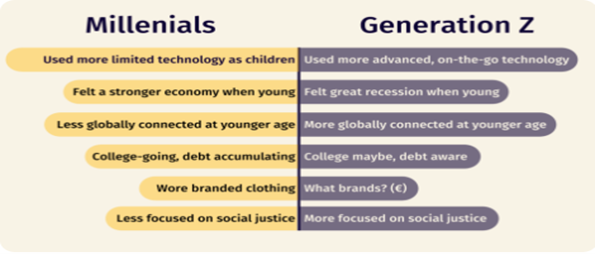
Moving from the broad generational trends, let’s now examine a few of the distinguishing trends of the two youngest and largest generational cohorts. Doing so will enable us as leaders to better understand, and thus adapt to, the shifts in the marketplace and workforce.
Understanding the Distinguishing Trends of the Millennial Cohort
1. Digital Natives:
Millennials are often referred to as digital natives, having grown up during the rapid proliferation of digital technology and the internet. Unlike previous generations, who adapted to digital technology later in life, Millennials were exposed to computers, smartphones, and the internet from a young age.
This early exposure to technology has shaped the way Millennials communicate, consume information, and engage with the world. They are highly proficient in using digital tools for communication, entertainment, and productivity, and they expect seamless integration of technology into all aspects of their lives.
2. Socially Conscious:
Millennials are known for their social consciousness and commitment to social justice and environmental sustainability. They are passionate about issues such as climate change, income inequality, and racial justice, and they are actively engaged in social and political activism.
This social consciousness is reflected in Millennials’ consumer behavior, with many preferring to support brands and companies that align with their values. Millennials are more likely to seek out ethically produced products, support sustainable businesses, and advocate for corporate social responsibility.
3. Emphasis on Work-Life Balance:
Work-life balance is a top priority for Millennials, who value personal fulfillment and well-being as much as career success. Unlike previous generations, who often prioritized long hours and career advancement at the expense of personal time, Millennials seek flexibility, autonomy, and meaning in their work.
Millennials are more likely to prioritize factors such as work-life balance, flexibility, and a positive company culture when choosing a job or employer. They are willing to trade higher salaries or prestige for opportunities that allow them to pursue their passions, spend time with family, and maintain a healthy work-life balance.
4. Desire for Personal Development:
Millennials place a high value on personal development and continuous learning, seeking opportunities for growth, skill development, and career advancement. They are more likely to change jobs or pursue further education to enhance their skills and knowledge, rather than remaining in a stagnant or unfulfilling career.
This desire for personal development is reflected in Millennials’ attitudes towards work and education. They are more likely to invest time and resources in furthering their education, acquiring new skills, and pursuing career opportunities that offer opportunities for growth and advancement.
5. Preference for Experiences Over Possessions:
Millennials prioritize experiences over material possessions, valuing travel, adventure, and personal experiences over owning material goods. They are more likely to spend money on experiences such as travel, dining out, concerts, and events, rather than on tangible items.
This preference for experiences over possessions is driven by Millennials’ desire for personal fulfillment, social connection, and self-expression. They see experiences as a way to create lasting memories, build relationships, and enrich their lives in ways that material possessions cannot.
6. Entrepreneurial Spirit:
Millennials are entrepreneurial and innovative, with a strong desire to create their own path and make a positive impact on the world. Unlike previous generations, who often aspired to climb the corporate ladder and attain traditional measures of success, Millennials are more likely to pursue entrepreneurship, freelancing, or side hustles.
This entrepreneurial spirit is fueled by Millennials’ desire for autonomy, creativity, and purpose in their work. They are more willing to take risks, embrace uncertainty, and pursue unconventional career paths in pursuit of their goals and passions.
Understanding the Distinguishing Trends of the Generation Z Cohort
1. Digital Natives and Technology Dependence:
Generation Z is often referred to as the first true generation of digital natives, having grown up entirely in the digital age with access to smartphones, social media, and the internet from a young age. Unlike previous generations, who adapted to digital technology over time, Generation Z is fluent in digital communication, social networking, and online content consumption from early childhood.
This reliance on technology has shaped Generation Z’s communication styles, social interactions, and consumption habits. They prefer digital communication channels such as texting, messaging apps, and social media platforms over traditional forms of communication. Additionally, they are adept at multitasking across multiple digital devices and platforms simultaneously.
2. Diversity:
Generation Z is the most diverse generation yet, with a greater representation of racial, ethnic, and cultural backgrounds than previous cohorts. Growing up in a multicultural society has fostered a greater appreciation for diversity, inclusion, and social justice among Generation Z.
They value diversity in all its forms and prioritize inclusivity in their interactions, relationships, and communities. Generation Z is more likely to support organizations and brands that champion diversity and social responsibility. They are also active participants in social and political movements that advocate for equality, justice, and human rights.
3. Pragmatism and Realism:
Generation Z is characterized by a pragmatic and realistic outlook on life, shaped in part by their experiences growing up in the aftermath of the Great Recession and amidst ongoing global challenges such as climate change, political instability, and economic uncertainty.
Unlike previous generations, who may have been more idealistic or optimistic about the future, Generation Z is more cautious, pragmatic, and focused on practical solutions to real-world problems. They are less likely to pursue traditional paths to success, such as higher education or corporate careers, if they perceive them as uncertain or impractical.
4. Entrepreneurial Spirit and Innovation:
Despite their pragmatism, Generation Z is highly entrepreneurial and innovative, with a strong desire to create their own opportunities and make a positive impact on the world. They are more likely to embrace entrepreneurship, freelancing, and creative pursuits than previous generations.
Generation Z values autonomy, creativity, and flexibility in their work and career paths. They are willing to take risks, experiment with new ideas, and pursue unconventional paths to success. Additionally, they are adept at leveraging technology and digital platforms to launch and promote their ventures.
5. Mental Health Awareness and Well-being:
Generation Z is more attuned to mental health issues and well-being than previous generations, with a greater awareness and willingness to discuss topics such as anxiety, depression, and stress openly.
Growing up in an era of heightened awareness of mental health challenges, Generation Z is more likely to prioritize self-care, stress management, and emotional well-being. They seek out resources, support networks, and coping mechanisms to navigate the pressures of school, work, and social life.
Conclusion
Understanding these distinguishing trends is crucial for businesses, policymakers, educators, and society at large to effectively engage with and support millennials and Generation Z as they navigate the challenges and opportunities of the 21st century. By recognizing their values, aspirations, and behaviors, we can create a more adaptive, innovative, and resilient business future.

Case Study: Cross-Generational Communication at Coca-Cola
Scenario:
Coca-Cola, a multinational corporation with a multigenerational workforce, identified communication challenges among employees from different generations. Baby Boomers preferred face-to-face interactions and formal communication styles, while Millennials and Gen Z leaned toward instant messaging and collaborative platforms like Slack. These differences led to misunderstandings, reduced collaboration, and slower project completion rates. Leadership implemented tailored communication strategies, introducing tools and training to accommodate generational preferences.

Exercise
1. How did generational communication preferences impact collaboration at Coca-Cola?
2. Why is it essential for leaders to recognize these differing preferences?
3. What steps can leaders take to foster more effective communication across generations?
Generational Communication Preferences Exercise:
1. Divide participants into groups according to their generation.
2. Ask each group to list their preferred communication methods and why they work for them.
3. Share the lists with the larger group and discuss how leaders can bridge these preferences to enhance communication in the workplace.

Course Manual 10: Value Shift
One distinguishing trend that began with Millennials is their radical commitment to individualism and authenticity. Andy Root rightly observes this, saying, “Authenticity is king of our time.” For Millennials, authenticity is shaped by individual experience, thought, and belief. Authenticity and individual self-expression are part of the reason for this cohort’s fascination with the tattoos, openness to non-traditional sexual expressions, and rejection of absolute, overarching truth. This narrative is part of the reason why Millennials and Gen Z disdain judgment and are wide open to authentic self-expression.

Value Shift: From Conformity to Authenticity
Over the past few decades, millennials have emerged as one of the most influential generational cohorts, reshaping societal norms, workplace cultures, and consumer behaviors. One of the defining shifts observed in this generation is their move away from the traditional value of social conformity toward a strong emphasis on authenticity. This shift, rooted in cultural, economic, and technological influences, has profound implications across various domains, from leadership and marketing to social dynamics and personal identity.
This module explores the millennial value shift in detail, presenting statistics, real-life examples, and insights into the broader cultural landscape that fostered this transformation.
Understanding Conformity and Authenticity
Conformity: The Traditional Norm
Conformity refers to adherence to societal norms, expectations, and traditions. For earlier generations, particularly the Silent Generation (1928–1945) and Baby Boomers, conformity often signified stability, social acceptance, and the preservation of collective values. These generations prioritized traditional markers of success, such as stable careers, homeownership, and adherence to established cultural norms.
Authenticity: The Emerging Value
Authenticity, on the other hand, emphasizes individual expression, transparency, and alignment with one’s personal values and beliefs. For millennials, authenticity represents a rejection of imposed standards and a desire for genuineness in every aspect of life—from personal identity and social interactions to workplace cultures and brand relationships.
The Forces Behind the Shift
1. The Influence of Technology and Social Media
Millennials are the first generation to come of age with the internet and social media, which have redefined how people communicate, share, and perceive authenticity. Platforms like Instagram, YouTube, and TikTok encourage self-expression and reward originality, shifting cultural values toward celebrating individuality over conformity.
• Statistic: According to a 2023 survey by Pew Research, 78% of millennials say they value “living a life true to themselves” over “meeting societal expectations.”
• Example: The rise of influencers, such as creators who document their authentic lives or showcase niche interests, demonstrates the power of authenticity. Unlike traditional celebrities, who were often inaccessible, influencers succeed by being relatable and transparent, resonating deeply with millennial audiences.

Exercise: Influencers and their Niche
2. Economic and Workplace Realities
The economic challenges faced by millennials have significantly shaped their attitudes. Growing up during the Great Recession (2008–2009), this generation entered a workforce marked by stagnant wages, job insecurity, and rising student debt. These realities disrupted traditional career trajectories and fueled a skepticism toward conformity to outdated success models.
• Statistic: Millennials carry an average student debt of $33,000, significantly higher than previous generations.
• Example: Many millennials reject traditional corporate hierarchies in favor of startups, freelance work, or entrepreneurial ventures that allow them to align their careers with their passions and values. Companies like Etsy and Patreon have flourished by providing platforms for creatives to monetize their authentic work.
3. Shifts in Social Values
Millennials grew up in a time of significant social change. Their experiences fostered a strong sense of social justice and a rejection of systems that prioritize conformity over fairness and inclusivity.
• Statistic: A 2021 Deloitte survey found that 63% of millennials believe businesses should prioritize societal issues, such as climate change and social inequality, over profit maximization.
• Example: Brands like Patagonia have become millennial favorites by aligning their business practices with authentic commitments to sustainability and social responsibility.

Case Study: Patagonia’s Adaptive Leadership in Navigating Generational Value Shifts
In the evolving marketplace where millennials and Gen Z increasingly prioritize sustainability and social justice, Patagonia stands as a leading example of how adaptive leadership can harness these shifting values to fuel both brand loyalty and organizational success. Patagonia was founded in 1973 with the goal of producing long-lasting outdoor clothing, but it soon expanded into a mission-driven company dedicated to environmental conservation. This commitment has continued to evolve over time, reflecting the brand’s keen awareness of—and responsiveness to—generational shifts in consumer expectations.
Recognizing the Value Shift
Patagonia’s leadership recognized early on that the emerging millennial cohort cared deeply about the ethical dimensions of business, favoring brands whose social and environmental practices aligned with their personal values. Rather than adopting sustainability as a marketing tactic, Patagonia embraced transparency and authenticity at its core. From its “Don’t Buy This Jacket” campaign—urging consumers to consider the environmental impact of unnecessary purchases—to its ongoing 1% for the Planet pledge, Patagonia took bold steps that resonated with younger consumers. This approach effectively positioned the company as an ally in the fight for environmental conservation and a frontrunner in corporate social responsibility.
Adaptive Leadership in Practice
Crucially, Patagonia’s leadership didn’t merely announce green initiatives; they embedded these principles into all facets of the company. For instance, they invested in supply chain transparency, supported fair labor practices, and created repair-and-reuse programs for their products. Leaders at Patagonia fostered a culture of employee empowerment, encouraging teams to engage with environmental activism and community outreach. By giving employees real autonomy—such as letting them leave work to join local protests or volunteer for environmental causes—Patagonia’s leadership demonstrated a deep commitment to walking the talk. This empowered workforce, in turn, became ambassadors of Patagonia’s mission, reinforcing the company’s value-based narrative to consumers.
Impact on Millennial and Gen Z Engagement
As millennials and Gen Z entered the workforce and gained purchasing power, they gravitated toward brands that stood for something beyond profit. Patagonia capitalized on this ethos by consistently communicating its environmental impact and challenging industry norms. The company’s approach to product longevity and reduced consumption appealed to a rising generation eager to address climate change. This authenticity established trust, driving strong brand loyalty and word-of-mouth advocacy—particularly on social media, a platform millennials and Gen Z heavily influence. Consequently, Patagonia cultivated a dedicated following that went beyond customers: investors, environmental groups, and even competitors recognized Patagonia’s leadership in aligning values with business strategy.
Lessons for Adaptive Leadership
Patagonia’s success story underscores key lessons for leaders seeking to adapt to changing generational values:
1. Embed Values, Don’t Just Advertise Them: Authenticity matters. Patagonia integrated sustainability into its very operations—treating it not as a marketing ploy but as a guiding principle.
2. Empower Employees: By giving employees the freedom to act on shared values, Patagonia fostered an internal culture that strengthened its external brand reputation.
3. Be Transparent and Bold: Patagonia didn’t shy away from publicly critiquing overconsumption, even if it meant urging people to buy fewer products. This bravery resonated with conscientious consumers.
4. Continuously Evolve: Adaptive leadership means staying alert to societal changes. Patagonia’s readiness to refine its strategy and innovate—like investing in regenerative agriculture or launching environmental grants—demonstrated an ongoing commitment to improvement.
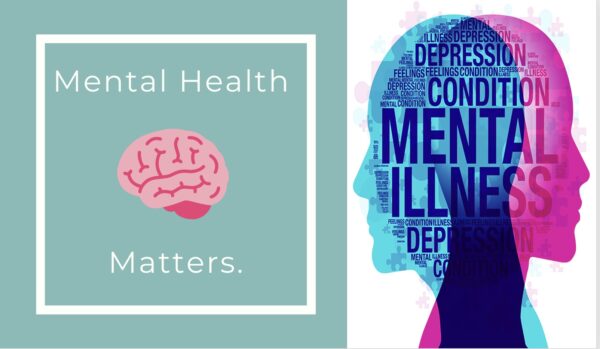
4. The Role of Mental Health Awareness
Millennials have been at the forefront of normalizing conversations about mental health. They challenge traditional norms of suppressing emotions or adhering to rigid roles, advocating instead for authenticity in addressing personal struggles and vulnerabilities.
• Statistic: 81% of millennials say that it is important for leaders and public figures to show vulnerability, according to a 2022 YouGov poll.
• Example: Celebrities like Selena Gomez and Michael Phelps have gained admiration for openly discussing their mental health challenges, reflecting a broader societal shift toward valuing transparency and authenticity.
3 Key Areas of the Value Shift
1. Personal Identity and Self-Expression
For millennials, personal identity is a fluid, evolving concept. They reject rigid societal labels and embrace diverse forms of self-expression, celebrating individuality and authenticity over traditional roles or appearances.
• Fashion and Style: The rise of thrift shopping, personalized fashion, tattoos, and rejection of fast fashion demonstrates millennials’ desire for authenticity in their appearance.
• Example: The popularity of tattoos in the millennial and Gen Z generational cohorts is directly related to the shift toward individualism and self-expression.
2. Workplace Expectations
Millennials are looking for places of employment that support their values and let them be their “whole selves” at work. They reject environments that prioritize profit over people and demand transparency, purpose, and inclusivity from their employers.
• Statistic: 88% of millennials prioritize cultural alignment over financial compensation when evaluating job opportunities (PwC, 2022).
• Example: Companies like Google and Airbnb are renowned for fostering open, innovative, and inclusive cultures that reflect millennial values.
3. Consumer Behavior
Millennials’ purchasing decisions are heavily influenced by a brand’s authenticity and values. They favor companies that demonstrate transparency, ethical practices, and a genuine commitment to social and environmental causes.
• Statistic: 91% of millennials are willing to switch to brands that support a cause they believe in, according to a Cone Communications study.
• Example: The success of brands like TOMS (which pioneered the one-for-one giving model) and Allbirds (a sustainability-focused shoe brand) reflects this generational preference for authenticity and value alignment.
Critiques and Challenges
Despite the positive aspects of the shift toward authenticity, there are challenges and critiques to consider:
• Overemphasis on Individualism: Critics argue that the pursuit of authenticity can sometimes lead to narcissism or a lack of communal focus.
• Authenticity in the Age of Social Media: The curated nature of social media raises questions about what constitutes “true” authenticity.
• Workplace Tensions: Older generations may view millennials’ emphasis on authenticity as a lack of professionalism or commitment.

Exercise: Discuss the Critiques and Challenges
Now that we’ve examined the forces behind some of the generational shifts, let’s take a little time to highlight the top 12 value shifts that affect both millennials and Gen Z.
12 Value Shifts Among Millennials and Gen Z
1. Work-Life Balance: Millennials and Gen Z prioritize a healthy balance between work and personal life. They value flexibility, autonomy, and the ability to pursue interests outside of work.
2. Meaningful Work: These two generational cohorts seek purpose and fulfillment in their careers. They are more likely to prioritize jobs that align with their values and allow them to make a positive impact on the world.
3. Diversity and Inclusion: Millennials and Gen Z value diversity, inclusivity, and representation in the workplace and society. They prioritize equality, social justice, and acceptance of individuals from all backgrounds.
4. Social and Environmental Responsibility: Both generations are socially and environmentally conscious, advocating for issues such as climate change, sustainability, and corporate social responsibility. They support businesses and brands that demonstrate a commitment to ethical and sustainable practices.
5. Personal Development: Statistics indicate that both generational cohorts prioritize continuous learning, growth, and skill development. They seek opportunities for professional development, mentorship, and advancement in their careers.
6. Authenticity: As we have seen earlier, both generations highly value authenticity and transparency in their interactions, relationships, and experiences. They prefer genuine connections and honest communication in both personal and professional contexts.
7. Flexibility and Adaptability: Millennials, as well as Gen Z, are adaptable and open to change. They value flexibility in their work arrangements, career paths, and lifestyle choices and are willing to embrace new opportunities and challenges.
8. Technology and Innovation: The younger generational cohorts are much more technologically knowledgeable. Both millennials and Gen Z are digital natives who embrace technology and innovation. They rely on digital platforms for communication, collaboration, and information sharing, and are early adopters of new technologies and trends.
9. Collaboration and Community: Both generations value collaboration, teamwork, and community engagement. They thrive in inclusive and supportive environments where they can connect with others, share ideas, and work towards common goals.
10. Work Ethic and Ambition: Contrary to stereotypes, Millennials and Gen Z are hardworking and ambitious. They are willing to put in the effort to achieve their goals and are motivated by opportunities for growth, advancement, and success.
11. Mental Health Awareness: Both generational cohorts are concerned with mental health, but Generation Z is highly attuned to mental health issues, openly discussing topics such as anxiety, depression, and stress. They prioritize self-care, well-being, and seeking support when needed.
12. Entrepreneurial Spirit: Millennials and Generation Z are entrepreneurial and innovative, seeking opportunities to create their own path and make a positive impact on the world. They are more likely to pursue entrepreneurship, freelancing, or side hustles than previous generations.

Case Study: Marriott International – Fostering Career Growth and Community
Background
Marriott International, one of the world’s largest hospitality companies, has built a reputation for strong corporate culture and employee development. With a growing number of Millennial and Gen Z employees entering the hospitality sector, Marriott recognized the importance of offering clear career paths and fostering a community-driven work environment.
Adaptation to Generational Values
1. Clear Career Progression: Marriott introduced well-defined career pathways, from entry-level roles (e.g., front desk associate) to leadership positions (e.g., hotel general manager). Mentorship programs paired new hires with experienced leaders, fulfilling younger workers’ desire for professional growth and ongoing feedback.
2. Community and Inclusion Initiatives: Aligning with younger employees’ focus on social impact, Marriott established global volunteer programs and sustainability projects. Team members can participate in local community projects, such as food drives or environmental clean-ups, often in partnership with Marriott’s charitable foundations.
3. Flexible Work Options: While hospitality inherently requires on-site staffing, Marriott introduced shift-swapping apps and cross-training opportunities, allowing employees some control over their work schedules and job roles. This approach helped address Millennials’ and Gen Z’s need for flexibility and variety.
Impact
Marriott’s emphasis on career progression and social responsibility has led to higher retention rates among younger employees. The company’s recognition programs, coupled with opportunities for community involvement, foster a sense of belonging and purpose that resonates deeply with Millennial and Gen Z values. As a result, Marriott consistently ranks high in surveys of best places to work.

Exercise
1. Career Development: How does clearly defining career pathways appeal to younger workers, and why is mentorship so critical to this strategy?
2. Flexibility vs. Operational Demands: How can a business reliant on physical presence balance operational needs with employees’ desire for schedule flexibility?
3. Measuring Success: What metrics should Marriott use to evaluate the effectiveness of these generational adaptations?
4. Debrief small groups findings with all the other groups.

Course Manual 11: Employment Trends
Navigating Current Employment Trends Through Generational Differences and VUCA
In today’s rapidly evolving marketplace, understanding current employment trends has become a critical competency for adaptive leaders. The modern workforce is influenced by a complex interplay of factors: changing economic conditions, technological advancements, shifting social norms and values, and the needs of multiple generational cohorts. Because of this, leaders are forced to manage teams in a VUCA (Volatile, Uncertain, Complex, and Ambiguous) environment where new problems appear seemingly around every corner. One driver of this change is the evolving nature of work itself. Flexible arrangements, remote or hybrid models, and project-based roles have gained traction, reflecting employees’ desire for autonomy and a better work-life balance. At the same time, distinct generational groups—from Baby Boomers to Gen Z—bring varied perspectives on career growth, communication, and organizational purpose. Leaders who appreciate these nuances and leverage them can foster high-performing, engaged teams capable of adapting to shifting priorities.
This module examines how demographic changes and emerging workplace norms shape organizational cultures and require agile approaches to leadership. Understanding these trends allows leaders to anticipate skill gaps, create inclusive policies, and craft strategies that boost both retention and productivity. Moreover, by recognizing the diverse motivations and expectations of their teams, adaptive leaders can align organizational goals with individual aspirations, thereby cultivating a culture of resilience and innovation.
One important note: Gen Z is now the 2nd largest cohort in the workplace as of 2024-2025. This means that as of 2025, 55% of the workforce are either millennials or Gen Z. This is one of the fundamental reasons why the generational trends are so influential in the marketplace today.
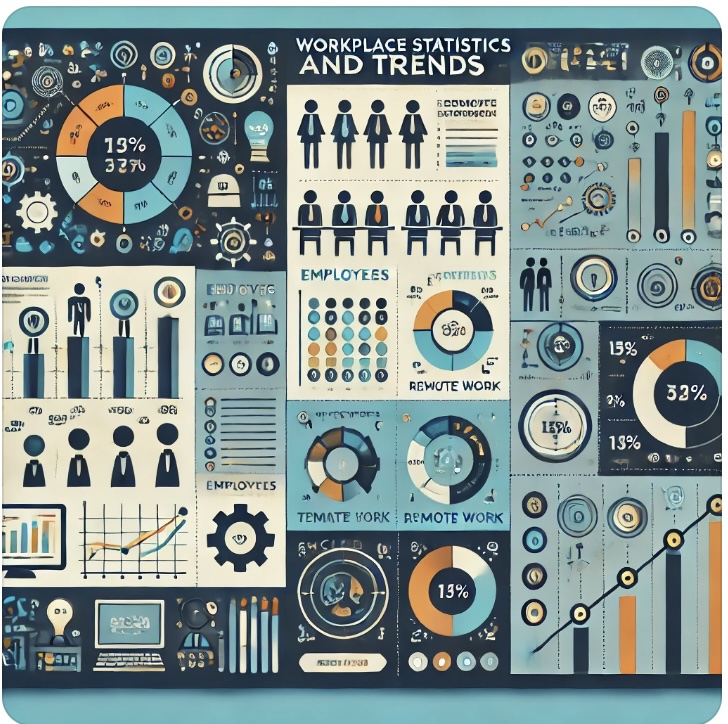
Top 20 Workplace Statistics and Trends Impacting the Workplace Today
1. Hybrid Work is Influential
• Stat: 74% of U.S. companies are using or plan to implement a permanent hybrid work model.
• Trend: Organizations are embracing flexibility, with employees splitting time between remote and in-office work.
Hybrid work arrangements balance the benefits of on-site collaboration with the convenience and autonomy of remote work. Leaders must consider new management practices, communication tools, and cultural norms to ensure hybrid teams remain cohesive. This approach often calls for rethinking office space, travel policies, and technology investments.

Case Study: Microsoft’s Hybrid Work Model
Microsoft, one of the world’s largest technology companies, announced a shift to a flexible work arrangement in 2021. The policy allows employees to work remotely up to 50% of the time without manager approval and more with manager sign-off. Microsoft made major investments in digital collaboration tools (e.g., Microsoft Teams) and redesigned office spaces to foster a mix of individual and group-based work.
Key Initiatives:
• Created “hybrid meeting” guidelines to ensure remote participants are fully included.
• Updated performance metrics to focus on outcomes rather than hours in the office.
• Encouraged managers to build “team agreements” so each team can tailor hybrid policies.
Impact:
Early feedback indicated that employees appreciated the autonomy and flexibility. However, managers reported ongoing challenges with maintaining team cohesion and ensuring new hires developed strong relationships with co-workers. Microsoft continues to iterate on its hybrid model, emphasizing a “learn-it-all” culture to refine best practices.
2. Remote Work Preference
• Stat: 61% of employees prefer to remain fully remote, while 37% prefer hybrid arrangements.
• Trend: Companies that fail to accommodate remote work options risk losing talent.
The shift toward remote work has gained momentum, particularly as younger generations demand flexibility. Organizations unwilling to offer remote options may see higher turnover and recruitment challenges. However, fully remote setups require deliberate strategies for communication, performance management, and mental health support.
3. Employee Burnout is Rising
• Stat: 77% of employees report experiencing burnout at their current job.
• Trend: Burnout is driving higher turnover rates and increasing the importance of mental health initiatives.
Burnout stems from high workloads, lack of support, and blurred boundaries between personal and professional life—especially in hybrid or fully remote contexts. Organizations that fail to address burnout risk losing top talent. Adaptive leaders proactively identify workload issues, encourage time off, and invest in employee well-being programs.

Case Study: Bumble’s Company-Wide “Burnout Break”
Bumble, the female-focused dating app, decided to address employee burnout by giving the entire company a one-week paid vacation in June 2021. The move was prompted by staff expressing heightened fatigue, especially amid the pandemic’s extended remote work requirements. This “burnout break” was meant to allow employees to recharge without fear of falling behind or missing urgent work.
Key Initiatives:
• Publicly announced company-wide closure to avoid any pressure or guilt for taking time off.
• Encouraged employees to disconnect from all work-related communications.
• Focused on normalizing conversations about mental health and stress management.
Impact:
The initiative garnered positive feedback from employees and media outlets, portraying Bumble as a caring and progressive employer. Following the break, employees reported feeling more refreshed. Bumble’s leaders then launched additional mental health resources, including flexible PTO policies and regular “well-being check-ins,” though they noted the importance of ongoing efforts rather than one-time solutions.
4. Mental Health Plays a Role in Retention
• Stat: 76% of employees consider mental health benefits crucial when choosing an employer.
• Trend: Companies are focusing on wellness programs and offering mental health support to attract and retain talent.
Comprehensive benefits, such as therapy stipends, meditation apps, or employee assistance programs, are no longer perks but expectations among many in the workforce. Leaders who emphasize emotional well-being often see stronger engagement and loyalty. Transparent communication about available resources can break stigmas and encourage employees to seek help.

Exercise
1. What mental health support is already in place at your organization? How can it be enhanced?
2. How might offering mental health benefits improve overall team performance?
5. Upskilling and Reskilling is a Priority
• Stat: 94% of employees say they would stay longer at a company that invests in their learning and development.
• Trend: Organizations are increasing budgets for upskilling and reskilling to meet technological advancements and shifting roles.
Rapid technological progress means many jobs change faster than ever before. Offering upskilling and reskilling opportunities helps retain high-potential employees and maintain a competitive edge in innovation. Leaders should look for ways to weave continuous learning into company culture, such as online courses, internal mentorship, and cross-functional projects.
6. The Gig Economy is Growing
• Stat: The gig economy is projected to grow to 78 million workers in the U.S. by 2030.
• Trend: More employees are pursuing freelance, contract, and gig work for flexibility and autonomy.
Gig workers value flexibility, independence, and project-based work that can align with their passions. This can challenge traditional HR structures, which are built around full-time employees. Adaptive leaders see gig workers as potential collaborators, filling specialized roles or short-term needs without long-term commitments.
7. Diversity is Important
• Stat: 67% of job seekers consider diversity when evaluating job offers.
• Trend: Organizations are embracing diversity in their best practices to keep their corporate cultures competitive.
Beyond compliance, diversity initiatives serve as strategic differentiators. Inclusive hiring, promotions, and decision-making processes foster innovation and appeal to a broad candidate pool. Adaptive leaders celebrate different viewpoints and create cooperative and collaborative teams.
8. Millennials and Gen Z Dominate the Workforce
• Stat: Millennials and Gen Z now make up over 50% of the global workforce. By 2025-2026, they are expected to near 75%.
• Trend: These generations are pushing for purpose-driven work, flexibility, and technology integration.
Millennials and Gen Z often place a premium on work that aligns with their values, technology-enabled collaboration, and opportunities for continuous learning. Organizations that overlook these preferences risk appearing outdated. Adaptive leaders listen to these generational insights, seeking ways to modernize processes and highlight social impact.

Exercise
1. What changes has your organization made to attract and retain younger talent?
2. How does technology factor into engagement strategies for Millennials and Gen Z?
9. Talent Shortages Persist
• Stat: 77% of employers report difficulty filling roles due to talent shortages.
• Trend: Companies are exploring new talent pools, including older workers, underrepresented groups, and gig workers.
Persistent skill gaps mean organizations must be creative in recruitment. This can include offering flexible options to retirees, pursuing alternative credentials, or collaborating with educational institutions. Adaptive leaders also use data-driven strategies—like talent analytics—to identify and fill crucial roles efficiently.
10. Leadership Styles Are Changing
• Stat: 83% of employees say they prefer a leader who values empathy and collaboration over authority.
• Trend: Leadership training is focusing on emotional intelligence, adaptability, and inclusive practices.
Command-and-control leadership is giving way to more relational, people-centered approaches. Modern leaders are expected to foster trust, encourage open dialogue, and adapt quickly to new information. This shift calls for upskilling leaders in areas like conflict resolution, active listening, and cultural competency.

Exercise
1. Which emotional intelligence competencies are most critical for your leadership context?
2. How do empathy and collaboration translate into tangible business results?
11. Employee Retention Challenges
• Stat: The average tenure for employees has dropped to 4.1 years.
• Trend: Organizations are focusing on improving engagement, career growth opportunities, and work-life balance to retain talent.
High turnover is costly—both financially and culturally. Employees often cite lack of growth, burnout, or poor management as reasons for leaving. Adaptive leaders tailor retention strategies by offering clear career paths, meaningful work, and supportive leadership that encourages longevity.

Exercise
1. What is your organization’s current turnover rate, and what factors contribute to it?
2. How can leaders create a sense of loyalty and belonging among newer hires?
12. Automation and AI Integration
• Stat: 80% of executives plan to increase AI adoption in the workplace by 2025.
• Trend: Automation is reshaping jobs, requiring employees to adapt to roles that focus on creativity and decision-making.
Repetitive, manual tasks are increasingly automated, prompting shifts in job responsibilities. Leaders must reskill teams for higher-value tasks such as problem-solving, innovation, and emotional intelligence. Those who can seamlessly integrate AI while respecting the human element will thrive.

13. Desire for Pay Transparency
• Stat: 63% of workers say pay transparency would improve their trust in employers.
• Trend: States are increasingly passing legislation requiring companies to disclose salary ranges in job postings.
Pay transparency legislation and cultural shifts highlight fairness and equality. Job candidates often want to know salary ranges upfront, and employees want to understand how pay decisions are made. Adaptive leaders proactively address wage gaps, clarify compensation structures, and communicate openly to build trust.
14. Focus on Purpose and Values
• Stat: 70% of employees say they would leave a job if the company’s values did not align with their own.
• Trend: Purpose-driven organizations are attracting and retaining more engaged employees.
Younger generations are drawn to companies that demonstrate tangible commitments to social responsibility, sustainability, and ethical practices. Leaders who clearly articulate and embody a strong organizational mission often enjoy better morale, loyalty, and brand reputation.

Exercise
1. What is your organization’s stated purpose, and how is it visibly enacted?
2. Do you feel that your team members are purpose-driven and embrace the mission/vision of the organization?
15. Cross-Generational Teams
• Stat: There are four distinctly different generations now working together in the workplace.
• Trend: Companies are navigating diverse communication styles, work preferences, and values across generations.
Baby Boomers, Gen X, Millennials, and Gen Z each bring different experiences and perspectives. The challenge for leaders is to create inclusive environments where all generations can learn from each other. Mentoring programs, flexible communication methods, and a culture of respect are key.

Case Study: Reverse Mentoring at General Electric
General Electric (GE) is well known for its long history of innovation, but like many large, established corporations, it faced challenges integrating fresh, tech-savvy insights from younger employees with the deep expertise of its veteran workforce. To bridge this generational gap, GE introduced a reverse mentoring program where new hires or junior employees (“digital natives”) mentored senior leaders on emerging technologies, contemporary communication platforms, and shifting cultural trends.
Key Initiatives
1. Mutual Learning Approach
Senior leaders were paired with younger employees in structured mentoring sessions. The juniors offered insights into social media, data analytics, and modern collaboration tools, while senior leaders provided strategic context, leadership advice, and institutional knowledge.
2. Formal Mentorship Guidelines
GE developed guidelines to ensure these mentorship sessions were goal-oriented, covering topics like emerging digital marketing techniques, process automation, and the evolving expectations of younger customers.
3. Cross-Functional Collaboration
Teams were encouraged to include employees from different generations in problem-solving tasks. This helped foster respect for diverse viewpoints and demonstrated how combining experience with new perspectives could spark innovative solutions.
Outcomes
• Enhanced Digital Literacy: Senior leaders became more comfortable with social media and collaboration tools, which helped them connect with both customers and younger employees.
• Cultural Shift: The program signaled that GE valued contributions from all levels, breaking down hierarchical barriers. Junior employees felt more heard, while seasoned leaders gained an appreciation for emerging workplace trends.
• Innovation and Growth: Departments that actively embraced reverse mentoring reported faster adoption of digital strategies and a more dynamic, forward-thinking culture overall.
16. Shorter Workweeks are Gaining Traction
• Stat: 85% of employees say a four-day workweek would improve their productivity and mental health.
• Trend: More organizations are experimenting with reduced workweeks without compromising output.
Pilot programs in various companies and countries have shown promise, often leading to increased employee satisfaction and efficiency. However, implementing a shorter workweek requires careful planning, clear productivity metrics, and trust in employees’ self-management.
17. Workplace Tech Expectations
• Stat: 73% of employees say they are frustrated by outdated technology at work.
• Trend: Companies are investing in modern, user-friendly tools to enhance productivity and employee satisfaction.
Employees often compare their workplace tech to personal devices and apps. If office systems feel cumbersome or slow, engagement and morale may suffer. Adaptive leaders champion user-friendly platforms, collaboration tools, and relevant software training to streamline workflows.
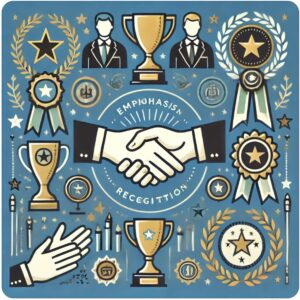 18. Emphasis on Employee Recognition
18. Emphasis on Employee Recognition
• Stat: 69% of employees say they would work harder if their efforts were better recognized.
• Trend: Employers are implementing real-time feedback and recognition programs to boost morale.
Timely, specific acknowledgment of achievements can dramatically improve motivation and loyalty. Leaders who encourage peer-to-peer recognition and celebrate milestones publicly often see a more engaged workforce. Recognition can range from simple “shout-outs” in team meetings to structured rewards.
19. Freelance Platforms Are Transforming Recruitment
• Stat: 40% of companies use platforms like Upwork and Fiverr to hire freelancers.
• Trend: Businesses are tapping into global talent pools to meet short-term needs.
Online freelance platforms enable organizations to quickly find specialized skills without the overhead of full-time hiring. This can expand innovation, but it also raises questions about consistency, data security, and team integration. Adaptive leaders create clear project scopes and maintain communication channels to ensure quality work.
20. Sustainability is a Workplace Priority
• Stat: 62% of employees prefer to work for a company that prioritizes sustainability and environmental initiatives.
• Trend: Employers are embedding sustainability into their operations and communicating these efforts to attract values-driven employees.
From reducing waste to offsetting carbon footprints, sustainability measures resonate strongly with younger demographics concerned about climate change. Leaders who authentically invest in green initiatives and report on progress demonstrate a commitment to social responsibility, improving both brand reputation and employee satisfaction.

Case Study: Buffer – A Remote-First Company Embracing Modern Employment Trends
Buffer, a social media management software company founded in 2010, gained recognition for its pioneering remote-first culture and transparent business practices. Over the years, Buffer has intentionally woven many emerging employment trends into its operating model—from flexible work and pay transparency to strong values alignment and sustainability initiatives. As Millennials and Gen Z workers increasingly dominate the tech labor market, Buffer’s leadership has continually adapted to attract, engage, and retain talent in a landscape marked by rapid change and rising expectations.
Key Trends in Action at Buffer
1. Remote Work Preference & Hybrid Flexibility
• Remote-First Model: Buffer has been fully remote from the start, acknowledging that 61% of employees prefer this arrangement. Team members work across continents, leveraging digital tools to stay connected.
• Optional Co-Working Spaces: While there are no permanent Buffer offices, employees can expense co-working spaces, embracing hybrid elements for those who prefer some in-person collaboration.
2. Employee Burnout & Mental Health
• Mandatory Time Off: Buffer noticed signs of burnout among its globally distributed workforce. To combat this, the company offers unlimited paid vacation and encourages regular “digital detox” days.
• Wellness Stipend: Recognizing mental health’s critical role in retention, Buffer provides stipends for therapy, meditation apps, or gym memberships.
3. Upskilling & Reskilling
• Professional Development Budget: Each team member receives an annual allowance for online courses, conferences, or certifications, ensuring they remain competitive and engaged in a rapidly evolving digital landscape.
4. Gig Economy & Global Talent
• Freelance Collaboration: Buffer sometimes partners with freelancers for specialized projects, tapping into global talent pools via platforms like Upwork—demonstrating the company’s flexibility and openness to diverse work arrangements.
5. Diversity & Cross-Generational Teams
• Inclusive Hiring: Employees range from recent graduates (Gen Z) to seasoned industry veterans (Gen X and beyond). Transparent job descriptions, inclusive interview processes, and remote flexibility attract a broader applicant pool.
6. Leadership Styles Are Changing
• Transparent & Empathetic: Instead of rigid hierarchies, Buffer uses a flat structure where leaders act as coaches and collaborators. CEO Joel Gascoigne holds frequent all-hands meetings to share updates, invite feedback, and celebrate successes.
7. Employee Retention Challenges
• Recognition & Purpose: Buffer weaves continuous recognition into daily operations with shout-outs via Slack channels and frequent “kudos” in company-wide meetings. Its mission—helping businesses succeed on social media while practicing radical transparency—helps employees feel they’re part of something meaningful.
8. Automation & AI Integration
• Technology-Focused Culture: Buffer’s product itself uses automation to schedule social media posts. Internally, the company experiments with AI-driven solutions (e.g., for customer support chatbots) while reskilling teams to work alongside these tools.
9. Pay Transparency
• Open Salaries: Buffer openly shares employee salary formulas and actual compensation numbers on its website, improving trust among team members and job seekers alike.
10. Focus on Purpose & Values
• Value-Led Operations: Buffer’s core values—such as “Default to Transparency” and “Improve Consistently”—guide decision-making. Many employees cite these values as a key reason they joined and stayed.

Exercise
1. Balancing Autonomy & Accountability
How can fully remote companies like Buffer ensure employees remain productive and aligned with company objectives without micromanaging?
2. Combatting Burnout
Which strategies—unlimited PTO, four-day workweeks, mandatory time off, or wellness stipends—might be most effective in reducing employee burnout? Could these be adapted to larger or more traditional organizations?
3. Cross-Generational Inclusion
Most of Buffer’s workforce is Millennial or Gen Z. If the company expands to include more employees from older generations, how might leadership adapt communication, technology training, and wellness initiatives to serve diverse age groups?

Exercise
Engage in a fast-paced debate to evaluate the pros and cons of one of Buffer’s strategic initiatives.
1. Choose a strategic initiative to debate. If the group can’t agree quickly, choose pay transparency.
2. Split participants into two teams.
3. Debate Topic
Each team has 2 minutes to prepare arguments for their side (Team A argues in favor, Team B argues against).
4. Debate Round:
Each team gets 1 minute to present their arguments.
5. Quick Rebuttal:
Allow a 30-second rebuttal from each side.
6. Group Reflection:
Conclude by inviting a couple of participants to share which arguments resonated with them and why.
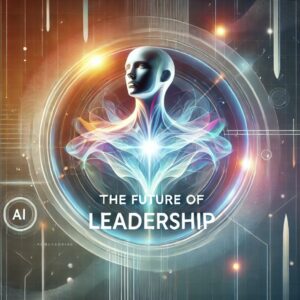
Course Manual 12: Leadership Future
The Future of Leadership: Navigating VUCA and Generational Cohorts
As you’ve now realized, today’s rapidly changing and uncertain world, characterized by volatility, uncertainty, complexity, and ambiguity (VUCA), makes effective leadership more crucial than ever. As organizations grapple with technological advancements, globalization, demographic shifts, and evolving societal norms, leaders must navigate these challenges while also addressing the diverse needs and expectations of different generational cohorts. This final module collects all of the understanding we have gleaned to this point and begins to explore the future of leadership in the context of widespread change.
1. Understanding the VUCA World
The VUCA framework provides a lens through which to understand the complex and unpredictable nature of today’s business environment. Volatility refers to the speed and magnitude of change; uncertainty reflects the lack of predictability and clarity, complexity involves interconnected and multifaceted challenges, and ambiguity refers to the absence of clear answers or solutions. In a VUCA world, leaders must be agile, adaptable, and resilient in the face of constant change and disruption.
2. Generational Cohorts in the Workplace
Generational cohorts, including Baby Boomers, Generation X, Millennials, and Generation Z, each bring unique perspectives, values, and expectations to the workplace. Understanding these generational differences is essential for leaders to effectively engage and motivate employees across different age groups. While Baby Boomers may value loyalty and stability, Millennials prioritize work-life balance and purpose-driven work. Generation Z, on the other hand, seeks flexibility and social responsibility in their careers.
3. Adaptive Leadership in a VUCA World
Adaptive leadership is essential for navigating the complexities of a VUCA world and leading across generational cohorts. Adaptive leaders are agile, open-minded, and proactive in responding to change and uncertainty. They foster a culture of innovation, collaboration, and continuous learning, empowering employees to adapt and thrive in dynamic environments. Adaptive leaders recognize the diverse needs and preferences of different generational cohorts and tailor their leadership approaches accordingly.
4. Leading Baby Boomers: Respect for Experience and Expertise
Baby Boomers, who are nearing retirement age, bring decades of experience and expertise to the workplace. Leaders must recognize and respect their contributions, providing opportunities for mentorship, knowledge transfer, and recognition of their achievements. Baby Boomers may value traditional leadership styles that emphasize hierarchy and authority, so leaders should provide clear direction and support while also encouraging autonomy and creativity.
5. Leading Generation X: Empowerment and Flexibility
Generation X, sandwiched between Baby Boomers and Millennials, values autonomy, flexibility, and work-life balance. Leaders should empower Generation X employees to take ownership of their work and make decisions autonomously. They should provide flexibility in work arrangements, such as remote work options and flexible hours, to accommodate their preferences for work-life integration. Generation Xers appreciate leaders who are approachable, transparent, and supportive of their personal and professional development.
6. Leading Millennials: Purpose and Collaboration
Millennials, the largest generation in the workforce, prioritize purpose-driven work, collaboration, and social responsibility. Leaders should communicate a compelling vision and purpose that aligns with Millennials’ values and aspirations. They should create opportunities for collaboration, feedback, and recognition, fostering a sense of belonging and community in the workplace. Millennials value transparency, authenticity, and opportunities for growth, so leaders should provide regular feedback, coaching, and development opportunities.
7. Leading Generation Z: Digital Fluency and Innovation
Generation Z, the youngest cohort in the workforce, is highly tech-savvy, entrepreneurial, and socially conscious. Leaders should leverage technology to engage and communicate with Generation Z employees, who are accustomed to digital communication channels and remote work. They should foster a culture of innovation, experimentation, and learning, encouraging Generation Zers to explore new ideas, technologies, and ways of working. Leaders should also demonstrate a commitment to social and environmental responsibility, aligning with Generation Z’s values and priorities.
Conclusion
In a VUCA world, effective leadership is essential for navigating uncertainty, driving innovation, and inspiring employees across generational cohorts. Leaders must be adaptive, empathetic, and inclusive, recognizing the diverse needs and preferences of different age groups. By understanding the unique perspectives and values of Baby Boomers, Generation X, Millennials, and Generation Z, leaders can tailor their approaches to engage and empower employees, fostering a culture of resilience, agility, and collaboration in the workplace.
The Future of Leadership: Core Principles and Approaches
As we look toward the future of leadership, we find ourselves at the nexus of rapid technological innovation, profound demographic shifts, intensified social expectations, and global interconnectivity. Scholars, practitioners, and influential thought leaders—from Peter Drucker and John Kotter to Brené Brown and Ronald Heifetz—have long argued that traditional models of command-and-control leadership are giving way to more adaptive, collaborative, and human-centric approaches. Leadership development programs at prestigious institutions such as Harvard Business School, Stanford’s Graduate School of Business, MIT’s Sloan School of Management, and London Business School increasingly emphasize topics like emotional intelligence, continuous learning, resilience, and ethical decision-making. These shifts align with the broader notion of leadership as both a mindset and a set of dynamic practices that evolve in tandem with social, economic, and technological upheavals.
In this section, we expand upon four of the core principles and approaches that characterize the future of leadership. Each principle draws on research from leading experts in the field and reflects the themes woven throughout modern “adaptive leadership” frameworks, including those championed by Ronald Heifetz and Marty Linsky at the Harvard Kennedy School, who argue that leaders must learn to “thrive in the disequilibrium” of uncertain times, also known as VUCA. As you go through these principles, consider how they apply not only to major strategic decisions but also to everyday interactions with your team. The future demands a leadership style capable of transcending hierarchical constraints, tapping into collective intelligence, and prioritizing ethical considerations—even when confronted with volatility and rapid change.

The four principles include:
1. Embracing Lifelong Learning and Adaptability
2. Human-Centric, Empathetic Leadership
3. Vision and Purpose Alignment
4. Collaborative, Trust-Based Structures
Taken together, these principles form a blueprint for modern leadership excellence. They are not static rules but living concepts that can be molded and integrated into various organizational contexts. Whether you lead a small business, a well-established corporation, a nonprofit, or a public institution, these ideas can guide you in building resilience, nurturing talent, and responding effectively to an ever-changing world. They can prepare you for the future of leadership.
1. Embracing Lifelong Learning and Adaptability
A Shift From Static Competence to Dynamic Development
Traditional leadership frameworks often implied that expertise was something you accumulated once—through formal education or rising through the ranks—and then wielded throughout your career. However, as the pace of change accelerates, the half-life of skills has shortened dramatically. Reports from the World Economic Forum suggest that many job competencies evolve so quickly that employees must refresh significant portions of their skill sets every five years—or sooner. Leaders are no exception.
Embracing lifelong learning entails recognizing that expertise is never final; it is an ongoing process. Daniel Goleman, renowned for his work on emotional intelligence, highlights how leaders who embrace a “growth mindset” (a term popularized by Stanford psychologist Carol Dweck) demonstrate higher adaptability, greater openness to feedback, and better innovation. These leaders do not merely see themselves as knowledge hubs but as learning catalysts who model curiosity and continuous development.
Adaptive Leadership in Practice
Ronald Heifetz’s Adaptive Leadership theory encourages leaders to differentiate between “technical problems” (where known solutions exist) and “adaptive challenges” (where no clear answers are available, and leaders must learn new capabilities). A hallmark of adaptive leadership is the willingness to experiment, fail, and iterate. Leaders who cultivate safe spaces for teams to test unorthodox ideas often find themselves rewarded with out-of-the-box innovations that keep organizations ahead of the curve.
By positioning themselves—and their organizations—as perpetual learners, future-focused leaders can respond fluidly to shifts in markets, technologies, and cultural landscapes.
2. Human-Centric, Empathetic Leadership
Beyond Transactional Relationships
Decades ago, leadership textbooks emphasized efficiency, productivity, and the power of charismatic authority. The “human side” was often relegated to human resources departments or considered “soft.” However, research from Gallup, Deloitte, and other institutions confirms that a human-centric, empathetic style is pivotal for motivating and engaging today’s workforce—especially as Millennials and Gen Z increasingly seek workplaces that respect individuality, mental well-being, and social consciousness.
Empathy in leadership is not merely about being “nice.” As demonstrated by Brené Brown’s work on vulnerability in leadership, empathy comprises actively comprehending the viewpoint of another individual, identifying feelings, and skillfully conveying that understanding. When leaders take the time to connect on a personal level, employees report higher trust, stronger loyalty, and a greater willingness to collaborate for collective success.
Tying Empathy to Organizational Outcomes
Human-centric approaches can directly influence outcomes like reduced turnover, higher engagement, and even improved customer satisfaction. For instance, research by the Center for Creative Leadership demonstrates that when employees feel genuinely cared for, they exhibit greater discretionary effort, leading to better problem-solving and innovation.
Empathy is not about abandoning performance goals; rather, it aligns performance with deeper engagement. In a volatile and uncertain world, employees who trust that leadership cares about their well-being are more likely to remain loyal, motivated, and open to organizational change.
3. Vision and Purpose Alignment
The Power of Purpose in Turbulent Times
Purpose-driven leadership has risen to the forefront of business discussions worldwide. Studies from Deloitte’s Global Human Capital Trends and EY’s Beacon Institute highlight that organizations articulating a clear purpose—beyond profit—consistently outperform those that do not. Purpose clarifies decision-making, galvanizes collective effort, and fosters resilience amid hardships.
Simon Sinek’s “Start with Why” model encapsulates this principle perfectly: when leaders can articulate why their organization exists, they provide a compass that guides every strategy, product design, and employee interaction. Younger generations find great resonance in this sense of a “higher calling,” as they increasingly assess employers according to their social and environmental impact.
Benefits of Purpose-Driven Leadership
1. Enhanced Engagement: Employees who find personal meaning in their work are more likely to bring creativity and discretionary energy to tasks.
2. Reputational Strength: Organizations with well-defined missions gain goodwill from customers, investors, and communities. Additionally, because stakeholders trust their good intentions, they are more “forgivable” if they make mistakes.
3. Strategic Clarity: In a swirl of potential directions, purpose serves as a North Star, helping leaders differentiate which trends or innovations are truly aligned with the company’s reason for being.
Operationalizing Purpose
• Mission and Vision Integration: Real purpose goes beyond a statement on the wall. It should inform hiring practices, performance metrics, product development, and branding.
• Storytelling: Leaders can harness narratives about how the organization’s purpose tangibly improves lives—through case studies of customers, partners, or communities served.
• Empower Ambassadors: Encourage “purpose ambassadors” at every level who champion the organization’s values and watch for any misalignment.
• Consistency in Action: If a company extolls environmental sustainability but neglects to set meaningful carbon reduction targets, employees and the public will see a dissonance. Consistency matters for credibility.
In uncertain times, a compelling purpose offers something stable and enduring. It unites diverse teams under a shared aspiration, transcending short-term pressures and fueling adaptation for long-term impact.
4. Collaborative, Trust-Based Structures
Moving Away from Command-and-Control
The age of the omnipotent CEO who unilaterally directs the organization is waning. Complex challenges—such as digital transformation, geopolitical tensions, and multigenerational factors—do not yield to solutions derived from a small circle of top executives. Instead, they demand collective intelligence drawn from diverse perspectives across departments, geographies, and knowledge domains.
Leaders like Bill George (former Medtronic CEO and Harvard Business School professor) emphasize that modern organizations function more effectively as ecosystems or networks, rather than rigid hierarchies. The goal is to break down silos and foster horizontal collaboration, founded on mutual trust and open communication. This will ensure real-time knowledge exchange and agile responses to emerging challenges.
Characteristics of Network-Based Leadership
1. Decentralized Decision-Making: Teams closer to the “front lines” often have the best data and contextual insights. Granting them decision-making authority fosters speed and innovation.
2. Cross-Functional Teams: Multifaceted problems demand varied expertise. Setting up squads or task forces uniting finance, marketing, engineering, and customer support can yield holistic solutions.
3. Ecosystem Mindset: Organizations do not just collaborate internally; they form strategic partnerships with suppliers, customers, universities, startups, and even competitors in the spirit of open innovation.
Network-based leadership acknowledges that no single mind or skill set is sufficient to address the exponential changes in technology and society. By harnessing collective wisdom, leaders position their organizations to adapt more fluidly while creating an environment where employees feel genuinely empowered.
Conclusion and Integration
The future of leadership calls for a delicate balance: bold visions matched by deep humility, data-driven insights tempered by human empathy, and rapid innovation guided by ethical guardrails. The four core principles offer a cohesive framework for the future of leadership and navigating the challenges ahead.
Yet principles alone do not suffice; they must be internalized and lived out at every level of an organization. As leadership scholar Warren Bennis once said, “Becoming a leader is synonymous with becoming yourself. It is precisely that simple, and it is also that difficult.” Leaders must embark on a continuous journey of self-reflection, actively seeking feedback, testing new approaches, and unlearning habits that no longer serve them or their teams. This process may involve discomfort or confrontation with one’s blind spots, but it is an essential undertaking to remain relevant during ongoing change.
Moreover, as these principles reveal, the future of leadership is deeply relational. It thrives on leveraging the strengths of diverse teams, building bridges across generational divides, and forging alliances with external stakeholders who bring new perspectives. Whether that means forging partnerships with startups, collaborating with NGOs, or empowering grassroots initiatives within one’s organization, the capacity to engage with a broader ecosystem is a hallmark of leadership that endures.
Finally, leadership is not an isolated function at the top of an organization but a pervasive culture. Organizations that prosper in volatile times embed these principles into every facet—from recruitment and onboarding to daily team rituals and advanced training for emerging leaders. They champion learning, celebrate empathy, design around purpose, create dynamic networks, embrace data judiciously, and adhere to an unwavering ethical code.
In summary, the future of leadership is bright for those who choose to evolve continually, lead with heart and mind, and anchor their ambitions in a genuine commitment to the well-being of people. As you integrate these insights and reflect on your own leadership path, remember that becoming a future-ready leader is a never-ending endeavor—one that is as challenging as it is rewarding. By weaving these principles into your day-to-day practice, you set the stage for innovation, trust, and sustainable impact in whatever field you call home.

Case Study: Deloitte: Implementing Adaptive Leadership in a Multigenerational Workforce
Background:
Deloitte, one of the world’s leading professional services firms, operates in a complex and ever-changing global market. The firm provides audit, consulting, tax, and advisory services, requiring a deep understanding of various industries and trends. Deloitte’s success in navigating the VUCA environment is attributed to its adaptive leadership approach and focus on generational diversity.
Key Strategies:
1. Agility in Service Offerings: Deloitte has adapted to the VUCA environment by continuously evolving its service offerings. The firm has embraced digital transformation, incorporating advanced analytics, artificial intelligence, and cyber risk management into its consulting services. This adaptability has enabled Deloitte to provide cutting-edge solutions to clients facing uncertainty and complexity.
2. Generational Inclusivity: Deloitte recognizes the value of a multigenerational workforce. The firm has implemented initiatives to engage and integrate employees from all generations. For example, Deloitte’s “NextGen” program focuses on developing young leaders, while the “Deloitte Alumni Network” engages former employees, including experienced Baby Boomers and Gen Xers. These initiatives help foster knowledge sharing and a sense of community within the firm.
3. Adaptive Leadership Development: Deloitte emphasizes adaptive leadership across all levels of the organization. The firm invests in leadership development programs that focus on building resilience, emotional intelligence, and the ability to lead through change. Deloitte’s leaders are encouraged to be empathetic and supportive, particularly in managing diverse teams with varying expectations and work styles.
Outcome:
Deloitte’s emphasis on adaptive leadership and generational diversity has strengthened its market position and organizational culture. The firm has been able to attract and retain top talent from various age groups, creating a dynamic and innovative work environment. Deloitte’s ability to adapt to client needs and market changes has solidified its reputation as a trusted advisor in the professional services industry.

Exercise
In two groups of five, discuss the following questions. When completed, have the groups debrief their thoughts with each other.
• In what ways do initiatives like the “NextGen” program and the “Deloitte Alumni Network” facilitate effective knowledge sharing and integration among a multigenerational workforce? Discuss how these initiatives might influence collaboration, innovation, and retention.
• What are the critical components of Deloitte’s adaptive leadership development programs (e.g., resilience, emotional intelligence, empathetic leadership), and how do they contribute to managing diverse teams in times of change? Reflect on how these elements can be applied in your own organizational context.
• Have each participant write out 3-5 adaptive leadership development actions that they’ve learned from today’s workshop that they can begin to implement into their daily leadership practice.
• When completed, have each participant share 1-2 of those actions.
Project Studies
Project Study (Part 1) – Customer Service
The Head of this Department is to provide a detailed report relating to the Leadership Future process that has been implemented within their department, together with all key stakeholders, as a result of conducting this workshop, incorporating process: planning; development; implementation; management; and review. Your process should feature the following 12 parts:
01. Understanding VUCA
02. World Ahead
03. Irrelevant Training
04. Understanding Culture
05. Organizational Shift
06. Worldview Shift
07. Generational Cohorts
08. Shaping Factors
09. Distinguishing Trends
10. Value Shift
11. Employment Trends
12. Leadership Future
Please include the results of the initial evaluation and assessment.
Project Study (Part 2) – E-Business
The Head of this Department is to provide a detailed report relating to the Leadership Future process that has been implemented within their department, together with all key stakeholders, as a result of conducting this workshop, incorporating process: planning; development; implementation; management; and review. Your process should feature the following 12 parts:
01. Understanding VUCA
02. World Ahead
03. Irrelevant Training
04. Understanding Culture
05. Organizational Shift
06. Worldview Shift
07. Generational Cohorts
08. Shaping Factors
09. Distinguishing Trends
10. Value Shift
11. Employment Trends
12. Leadership Future
Please include the results of the initial evaluation and assessment.
Project Study (Part 3) – Finance
The Head of this Department is to provide a detailed report relating to the Leadership Future process that has been implemented within their department, together with all key stakeholders, as a result of conducting this workshop, incorporating process: planning; development; implementation; management; and review. Your process should feature the following 12 parts:
01. Understanding VUCA
02. World Ahead
03. Irrelevant Training
04. Understanding Culture
05. Organizational Shift
06. Worldview Shift
07. Generational Cohorts
08. Shaping Factors
09. Distinguishing Trends
10. Value Shift
11. Employment Trends
12. Leadership Future
Please include the results of the initial evaluation and assessment.
Project Study (Part 4) – Globalization
The Head of this Department is to provide a detailed report relating to the Leadership Future process that has been implemented within their department, together with all key stakeholders, as a result of conducting this workshop, incorporating process: planning; development; implementation; management; and review. Your process should feature the following 12 parts:
01. Understanding VUCA
02. World Ahead
03. Irrelevant Training
04. Understanding Culture
05. Organizational Shift
06. Worldview Shift
07. Generational Cohorts
08. Shaping Factors
09. Distinguishing Trends
10. Value Shift
11. Employment Trends
12. Leadership Future
Please include the results of the initial evaluation and assessment.
Project Study (Part 5) – Human Resources
The Head of this Department is to provide a detailed report relating to the Leadership Future process that has been implemented within their department, together with all key stakeholders, as a result of conducting this workshop, incorporating process: planning; development; implementation; management; and review. Your process should feature the following 12 parts:
01. Understanding VUCA
02. World Ahead
03. Irrelevant Training
04. Understanding Culture
05. Organizational Shift
06. Worldview Shift
07. Generational Cohorts
08. Shaping Factors
09. Distinguishing Trends
10. Value Shift
11. Employment Trends
12. Leadership Future
Please include the results of the initial evaluation and assessment.
Project Study (Part 6) – Information Technology
The Head of this Department is to provide a detailed report relating to the Leadership Future process that has been implemented within their department, together with all key stakeholders, as a result of conducting this workshop, incorporating process: planning; development; implementation; management; and review. Your process should feature the following 12 parts:
01. Understanding VUCA
02. World Ahead
03. Irrelevant Training
04. Understanding Culture
05. Organizational Shift
06. Worldview Shift
07. Generational Cohorts
08. Shaping Factors
09. Distinguishing Trends
10. Value Shift
11. Employment Trends
12. Leadership Future
Please include the results of the initial evaluation and assessment.
Project Study (Part 7) – Legal
The Head of this Department is to provide a detailed report relating to the Leadership Future process that has been implemented within their department, together with all key stakeholders, as a result of conducting this workshop, incorporating process: planning; development; implementation; management; and review. Your process should feature the following 12 parts:
01. Understanding VUCA
02. World Ahead
03. Irrelevant Training
04. Understanding Culture
05. Organizational Shift
06. Worldview Shift
07. Generational Cohorts
08. Shaping Factors
09. Distinguishing Trends
10. Value Shift
11. Employment Trends
12. Leadership Future
Please include the results of the initial evaluation and assessment.
Project Study (Part 8) – Management
The Head of this Department is to provide a detailed report relating to the Leadership Future process that has been implemented within their department, together with all key stakeholders, as a result of conducting this workshop, incorporating process: planning; development; implementation; management; and review. Your process should feature the following 12 parts:
01. Understanding VUCA
02. World Ahead
03. Irrelevant Training
04. Understanding Culture
05. Organizational Shift
06. Worldview Shift
07. Generational Cohorts
08. Shaping Factors
09. Distinguishing Trends
10. Value Shift
11. Employment Trends
12. Leadership Future
Please include the results of the initial evaluation and assessment.

Project Study (Part 9) – Marketing
The Head of this Department is to provide a detailed report relating to the Leadership Future process that has been implemented within their department, together with all key stakeholders, as a result of conducting this workshop, incorporating process: planning; development; implementation; management; and review. Your process should feature the following 12 parts:
01. Understanding VUCA
02. World Ahead
03. Irrelevant Training
04. Understanding Culture
05. Organizational Shift
06. Worldview Shift
07. Generational Cohorts
08. Shaping Factors
09. Distinguishing Trends
10. Value Shift
11. Employment Trends
12. Leadership Future
Please include the results of the initial evaluation and assessment.

Project Study (Part 10) – Production
The Head of this Department is to provide a detailed report relating to the Leadership Future process that has been implemented within their department, together with all key stakeholders, as a result of conducting this workshop, incorporating process: planning; development; implementation; management; and review. Your process should feature the following 12 parts:
01. Understanding VUCA
02. World Ahead
03. Irrelevant Training
04. Understanding Culture
05. Organizational Shift
06. Worldview Shift
07. Generational Cohorts
08. Shaping Factors
09. Distinguishing Trends
10. Value Shift
11. Employment Trends
12. Leadership Future
Please include the results of the initial evaluation and assessment.

Project Study (Part 11) – Logistics
The Head of this Department is to provide a detailed report relating to the Leadership Future process that has been implemented within their department, together with all key stakeholders, as a result of conducting this workshop, incorporating process: planning; development; implementation; management; and review. Your process should feature the following 12 parts:
01. Understanding VUCA
02. World Ahead
03. Irrelevant Training
04. Understanding Culture
05. Organizational Shift
06. Worldview Shift
07. Generational Cohorts
08. Shaping Factors
09. Distinguishing Trends
10. Value Shift
11. Employment Trends
12. Leadership Future
Please include the results of the initial evaluation and assessment.

Project Study (Part 12) – Education
The Head of this Department is to provide a detailed report relating to the Leadership Future process that has been implemented within their department, together with all key stakeholders, as a result of conducting this workshop, incorporating process: planning; development; implementation; management; and review. Your process should feature the following 12 parts:
01. Understanding VUCA
02. World Ahead
03. Irrelevant Training
04. Understanding Culture
05. Organizational Shift
06. Worldview Shift
07. Generational Cohorts
08. Shaping Factors
09. Distinguishing Trends
10. Value Shift
11. Employment Trends
12. Leadership Future
Please include the results of the initial evaluation and assessment.
Program Benefits
Management
- Maximize Productivity
- Gain Empathy
- Empowered Team
- Increased Innovation
- Clear Communication
- Reduced Conflict
- Improved Engagement
- Increased Accountability
- Competitive Advantage
- Empowered Coaching
Operations
- EQ Growth
- Empowered Teams
- Maximize Productivity
- Reduced Conflict
- Team Collaboration
- Growth Mindset
- Greater Engagement
- Skill Development
- Organizational Integrity
- Reduced Frustration
Humas Resources
- Reduced Turnover
- Attract Talent
- Skill Development
- Diminished Conflict
- Less Stress
- Employee Satisfaction
- Increased Engagement
- Increased Acccountability
- Positive Collaboration
- Character Growth
Client Telephone Conference (CTC)
If you have any questions or if you would like to arrange a Client Telephone Conference (CTC) to discuss this particular Unique Consulting Service Proposition (UCSP) in more detail, please CLICK HERE.
